
From a birder’s perspective this final Arizona post may feel anti-climatic given the previous posts on Burrowing Owls as thick as flies, an adreneline-pumping Long-eared Owl chase, and my non-Arizona discovery of an Arizona-type bird back in Minnesota. However, this post is about the high point of our family vacation. Or I should say it was about the only fun we got to experience as a whole family with Marin being sick the entire trip. But hopefully there are enough birds in this post to keep the birders scrolling down and it won’t just be entertaining for long-lost relatives and friends.
It felt great to see Marin healthy and be able to salvage one day of vacation with Marin by getting her out of Grandma and Grandpa’s house to go to the Phoenix Zoo. Everybody was excited. Even the birder – there had to be some bits and scraps of life birds out there to pick up. But even if we didn’t find any, it was still good to see this monkey smile.

As we strolled through the zoo enjoying the somewhat cooler day with a breeze, the boisterous Great-tailed Grackles could be heard everywhere. I finally started to understand why some people call them a nuisance bird. Adding to the cacophony were many Curve-billed Thrashers.
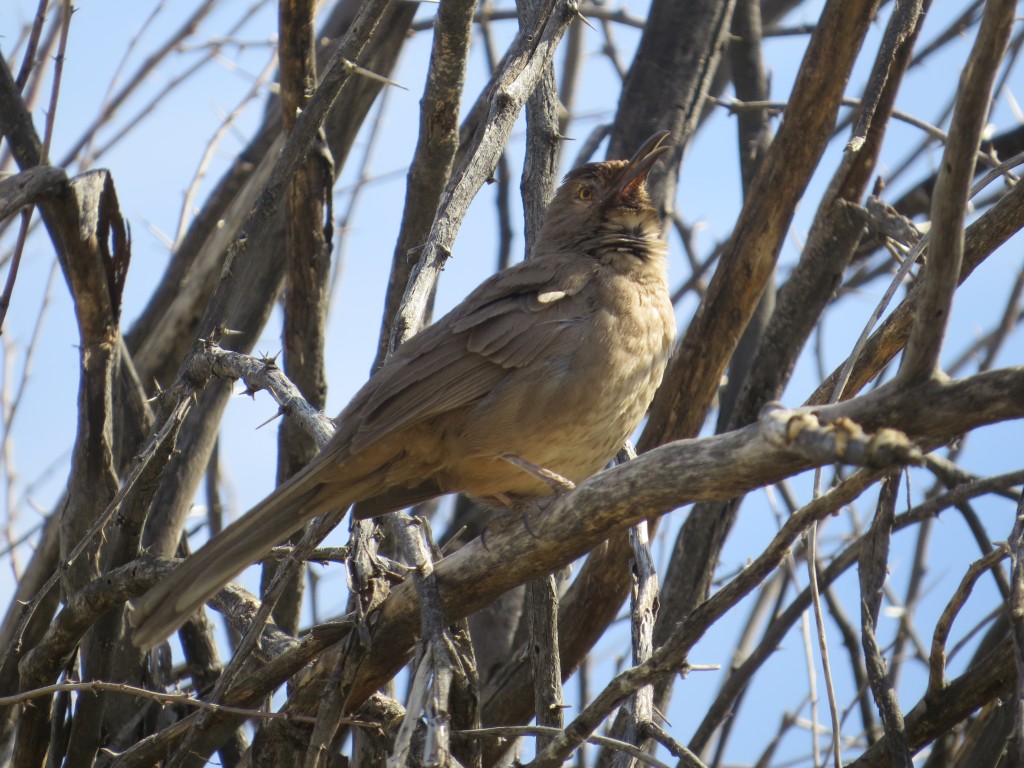
Curve-billed Thrasher
I noticed another little bird in a tree that I didn’t recognize. Zooming the camera on it, I saw it was a lifer – the Inca Dove! I didn’t realize how much smaller they were than Mourning Doves – I kind of passed over that detail in the field guide. The scaly appearance was a dead give-away on this one. I grabbed Evan to come back and see it. The non-birding family went on to look at non-birding things, like zoo animals.
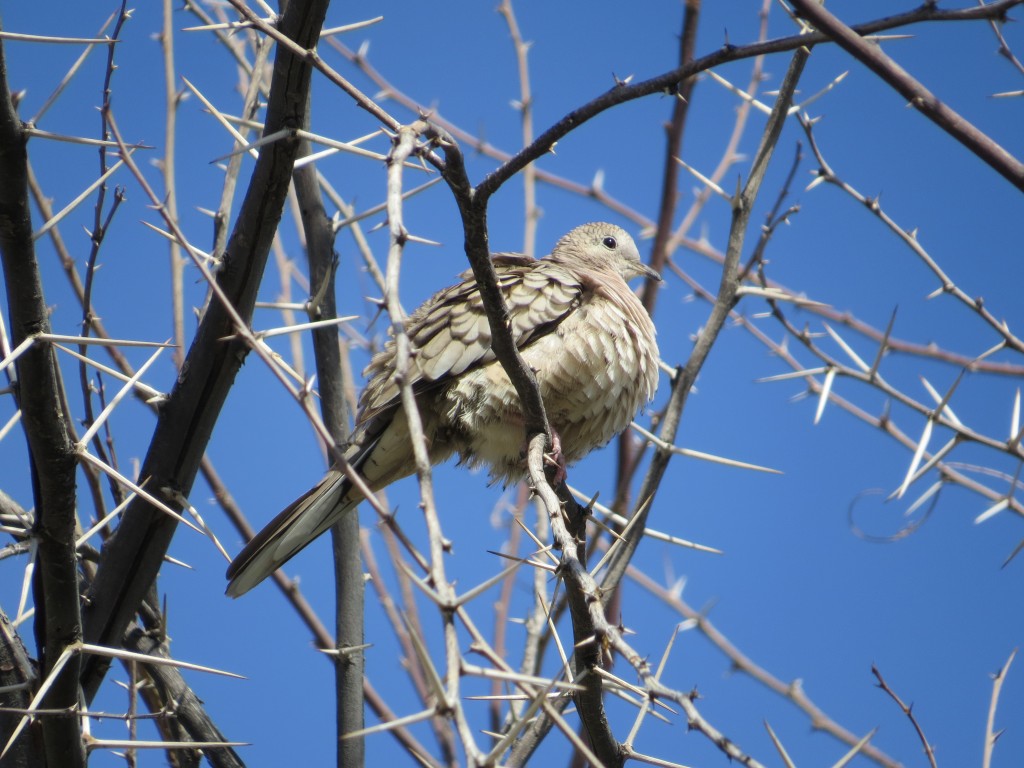
Inca Dove
All of us were very impressed with the natural trails through a desert landscape as we hiked our way up to the Big Horn Sheep pen. I got some killer looks at some of the birds we had seen earlier in the week, like this Black-chinned Hummingbird.
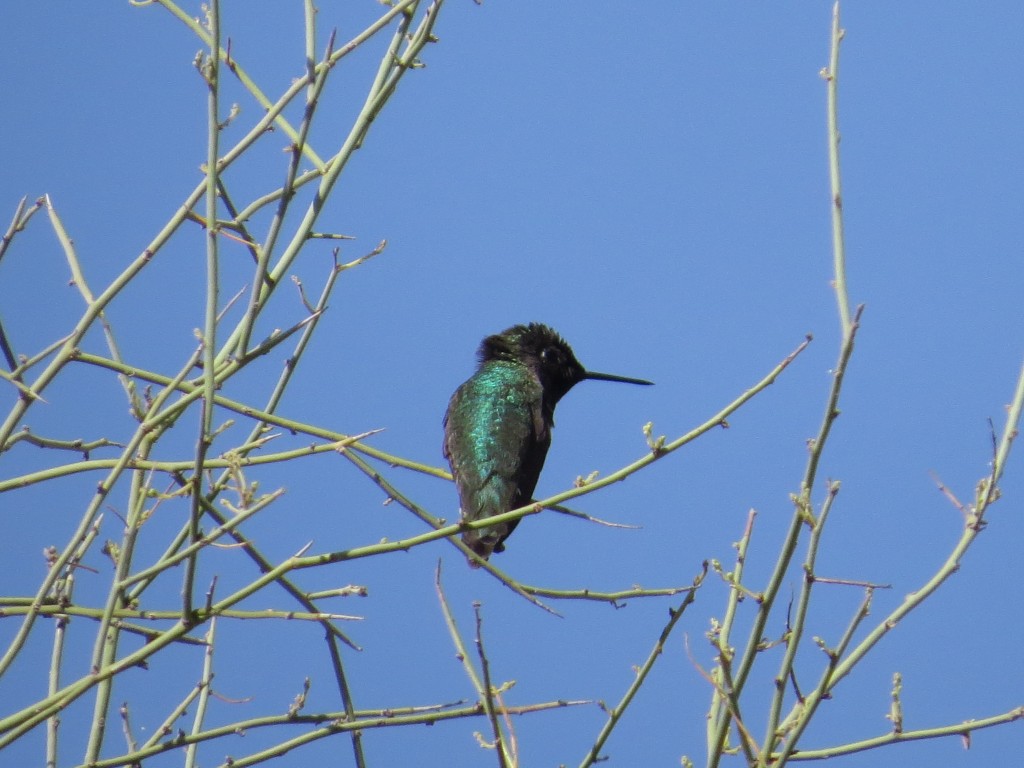
Black-chinned Hummingbird
Or the Gila Woodpecker.
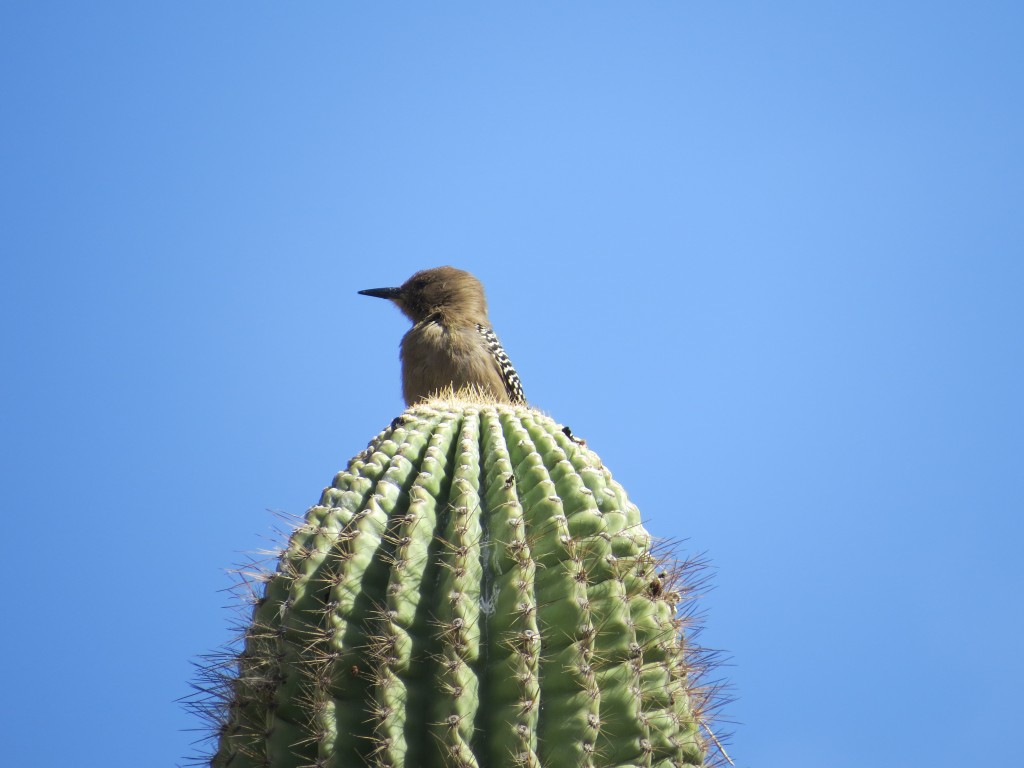
Gila Woodpecker
It was a real treat to be able to get a good look at the Abert’s Towhee and have Evan get this lifer. I saw it on that desert adventure with Laurence Butler, but it was so dark that when I took a picture that night, all I had to show for the Abert’s were two glowing eyes in a black picture. I think this one’s a lot better.
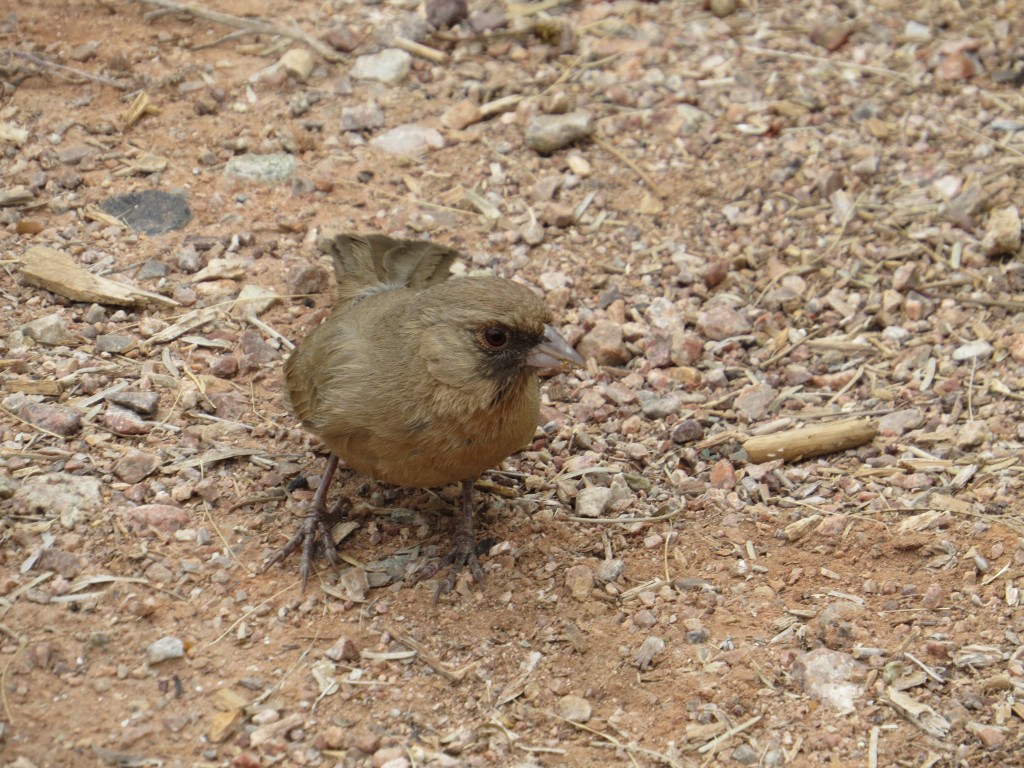
Abert’s Towhee
I could tell this zoo story by recounting all the animal species we saw, but the truth is that I wasn’t paying a whole lot of attention to them. Nope, I was looking for the ones that didn’t require a paid admission to see. That being said, I couldn’t resist this photo op. There’s just something funny about kids laughing at monkey butts. Go ahead, try not to smile.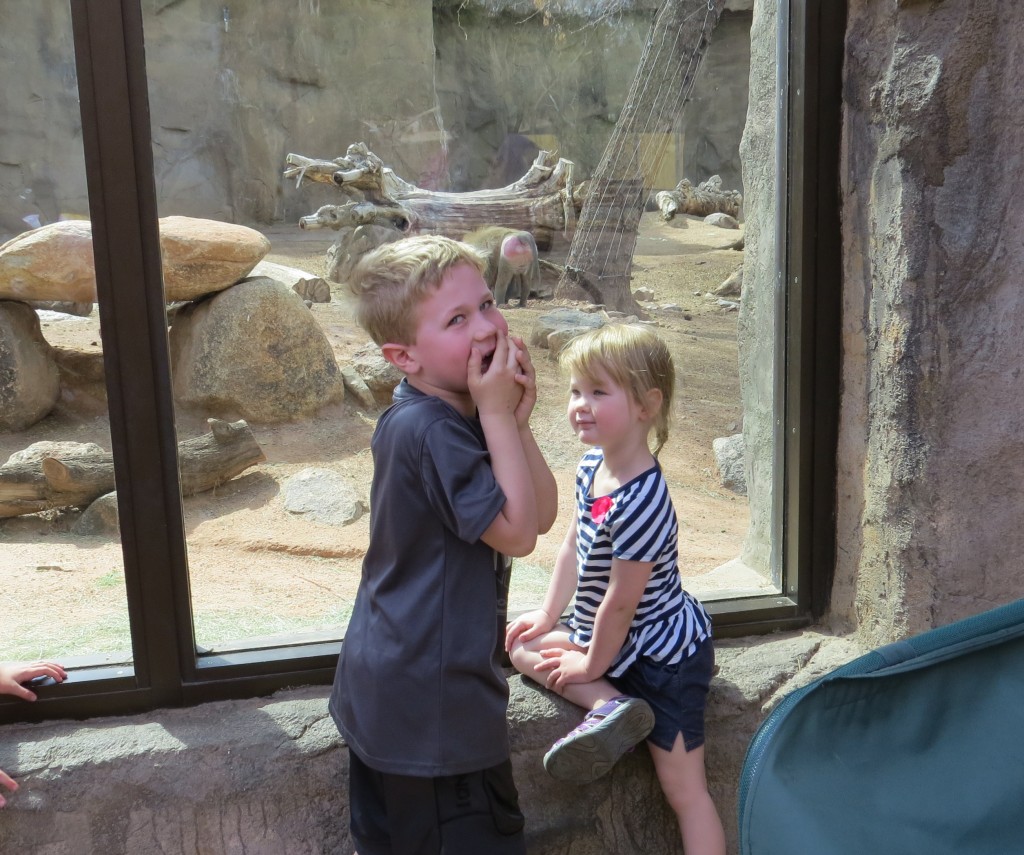
Speaking of butts and getting back to birds, this modest flicker wouldn’t show me her underside to see the yellow that would confirm it as a Gilded Flicker instead of a female Red-shafted Northern Flicker. I’m pretty sure it’s a Gilded. I’ll go with it. Regardless, I like how this flicker is acting like a bird dog by being “on point.”
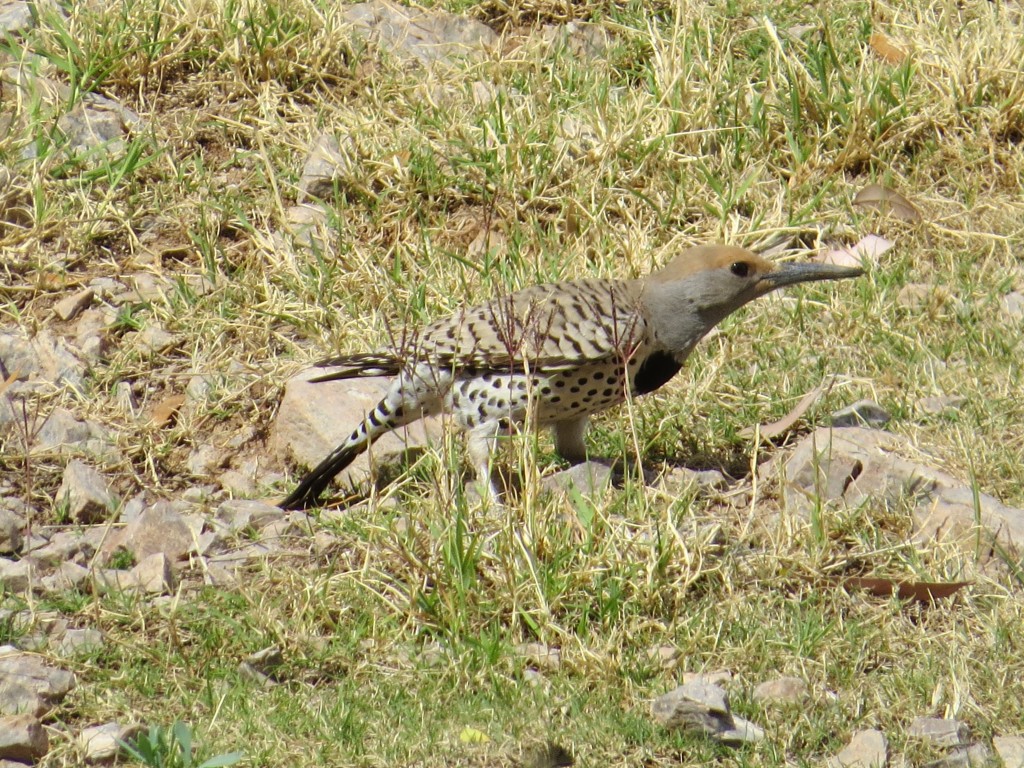
Gilded Flicker
At one point when we were looking at something that was neither butts nor birds, Evan hollered, “Dad, look at that! We’ve got a new bird!” He was right! It was the Common Gallinule lurking in the shadows of this murky water. Then I thought, ‘Wait a second, we’re in a zoo and this bird is some animal’s pen.’ I quickly scanned all the signs for the enclosure. No Common Gallinule – sweet, we could count it! I went back for a second look not long after, but he sneaked away to his lair of grasses and shadows.
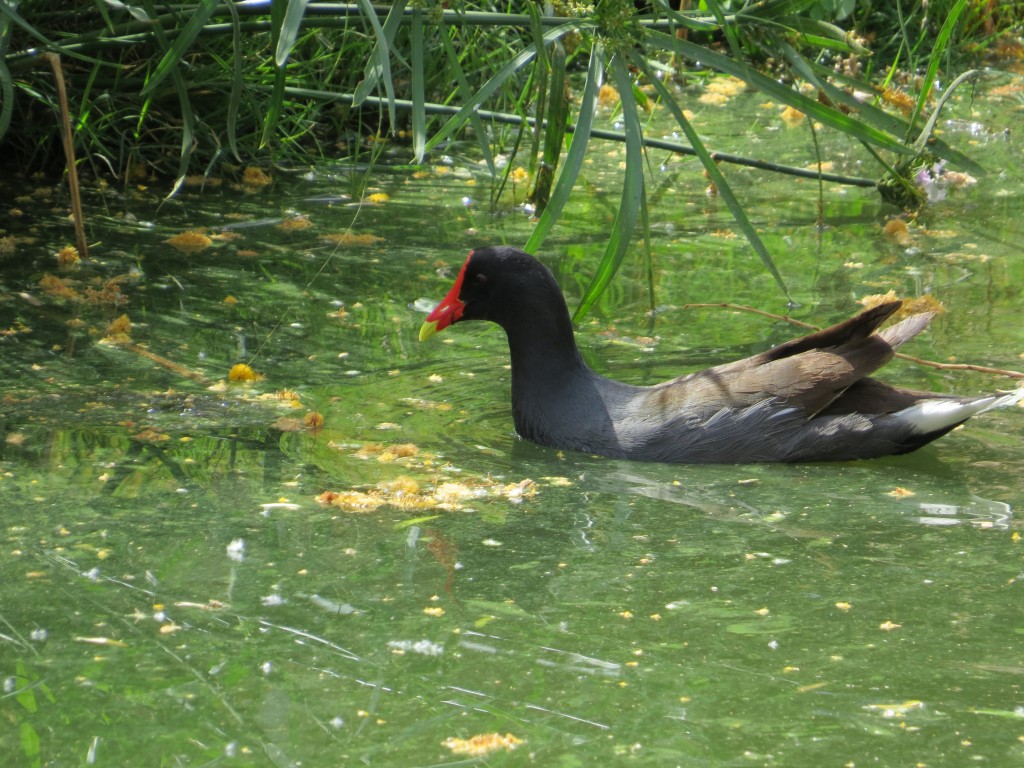
Common Gallinule
Nice job spotting the shadowy lifer, Evan. That deserved a ride on one of those non-bird things we came to see.
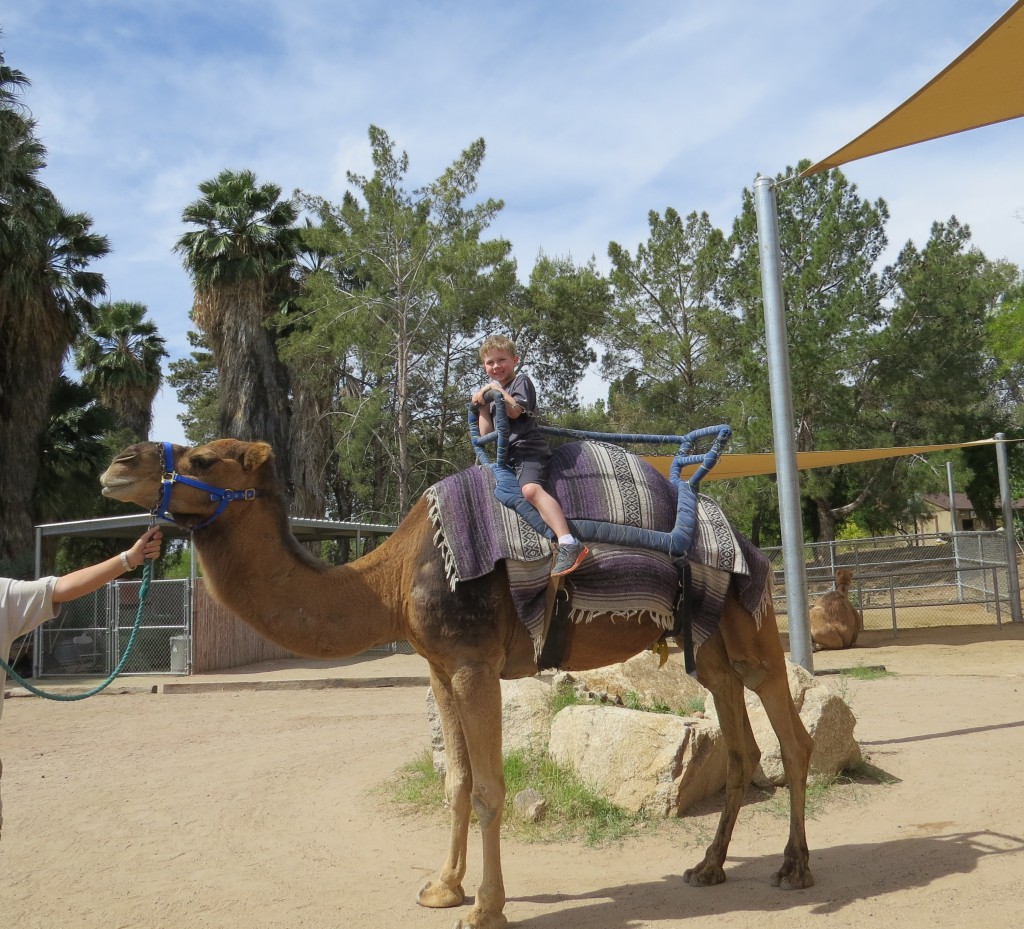
At one point along our journey through the enormous Phoenix Zoo, I spotted an Anna’s Hummingbird. It was not a lifer on this day nor a particularly exciting bird, but I was pleased to finally properly photograph one of these buggers.
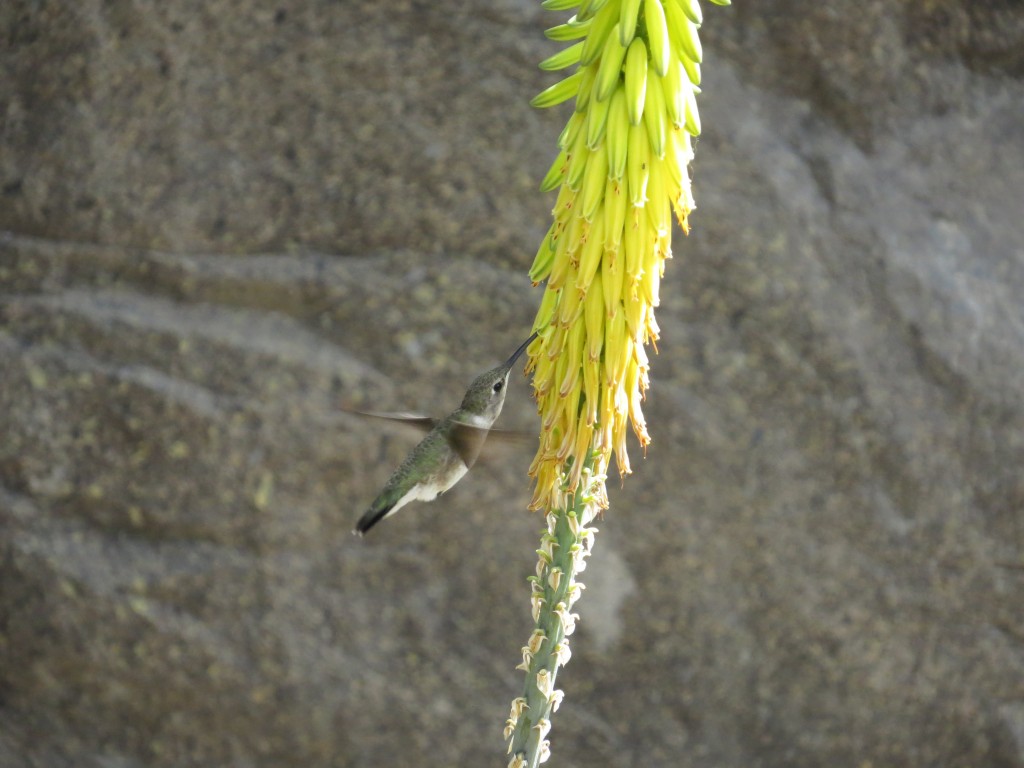
Anna’s Hummingbird
Evan, once again, found it much more entertaining to tease the Mallards in this flamingo enclosure. Sorry, they’re not “real” birds, so I left them out.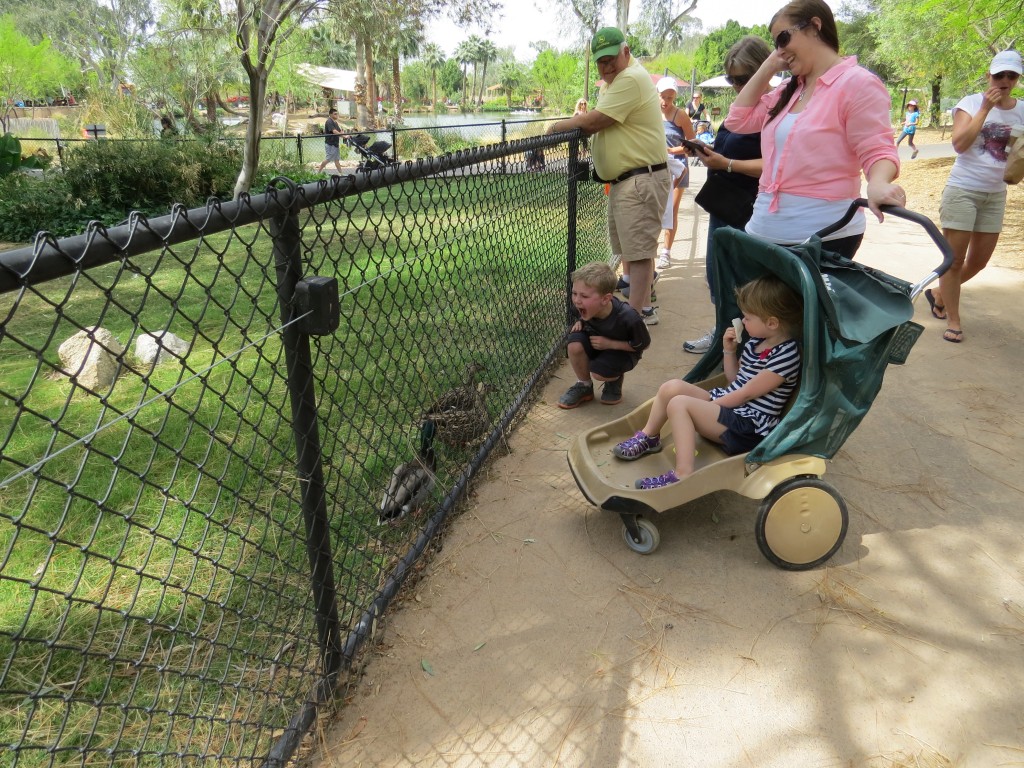 I found the wild birds much more entertaining. I absolutely love American Wigeon. This was my chance to properly photograph one. Forgive the scuzzy flamingo water and just look at this drake’s beauty.
I found the wild birds much more entertaining. I absolutely love American Wigeon. This was my chance to properly photograph one. Forgive the scuzzy flamingo water and just look at this drake’s beauty.
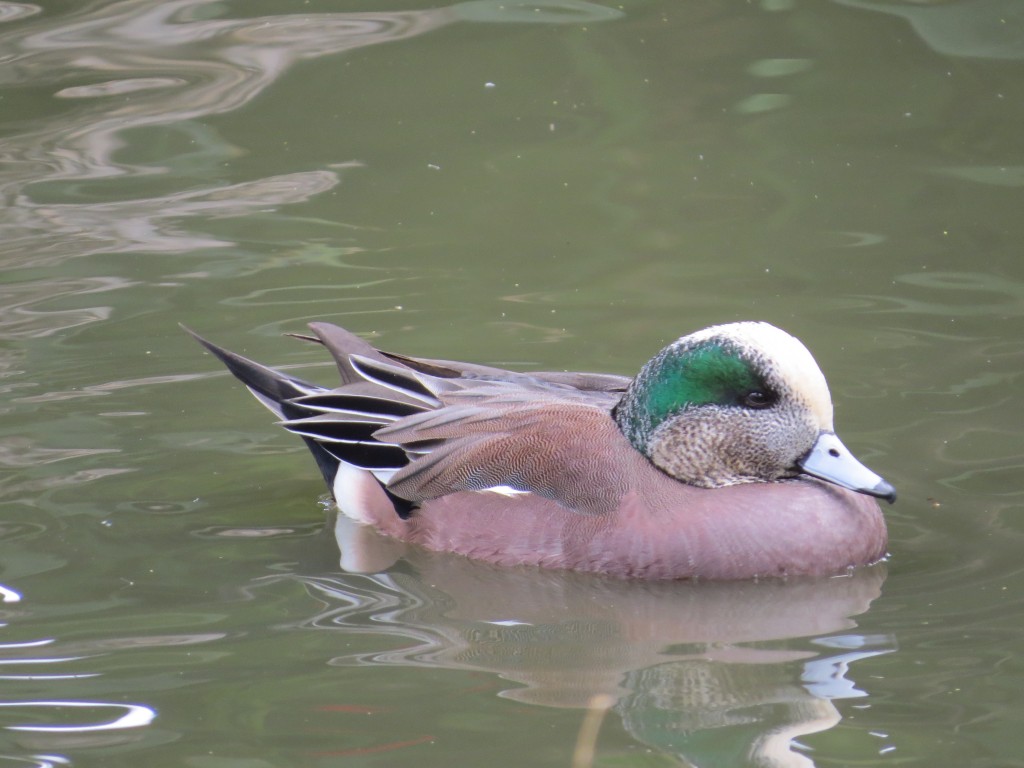
American Wigeon
We also spied another (or the same) Common Gallinule being sneaky again – this time stealing food that wasn’t his. It was pretty funny to watch him fall in this bucket a couple times.
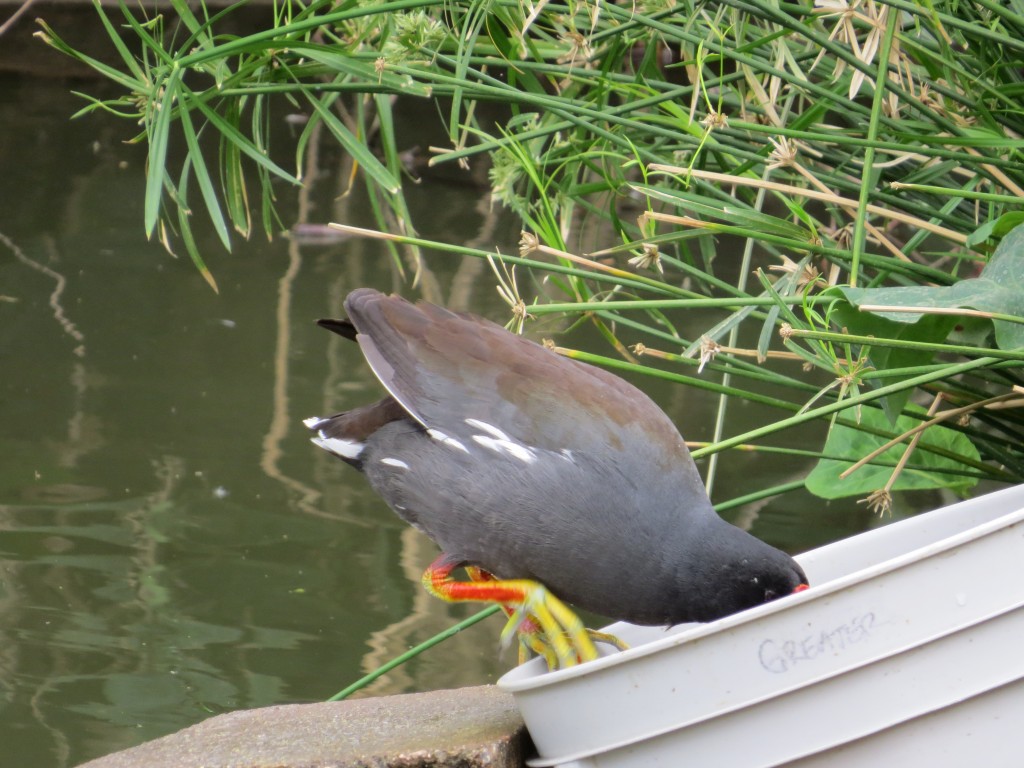
Later on when we were all lounging by the Zebra enclosure, Evan once again hollers, “Dad, a new bird!” We looked in the enclosure, and there, wading in a stream, was a Snowy Egret. Once again, we checked all the signs. No Snowy Egrets were supposed to be there, so it was fair game. A later encounter with some Black-bellied Whistling Ducks at another enclosure wouldn’t be the same as a zoo volunteer told us those ones were part of the exhibit (clipped wings) even though they weren’t on the signs. Oh well.
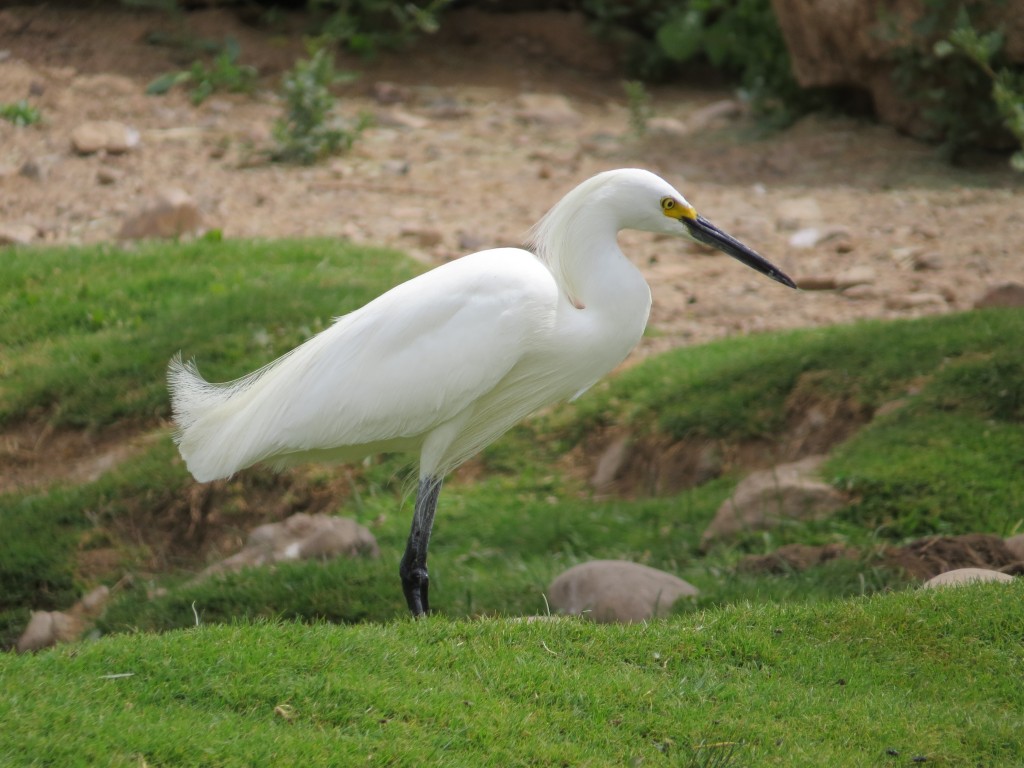
Snowy Egret
Then there was that devious gallinule again – this time photo-bombing the egret.
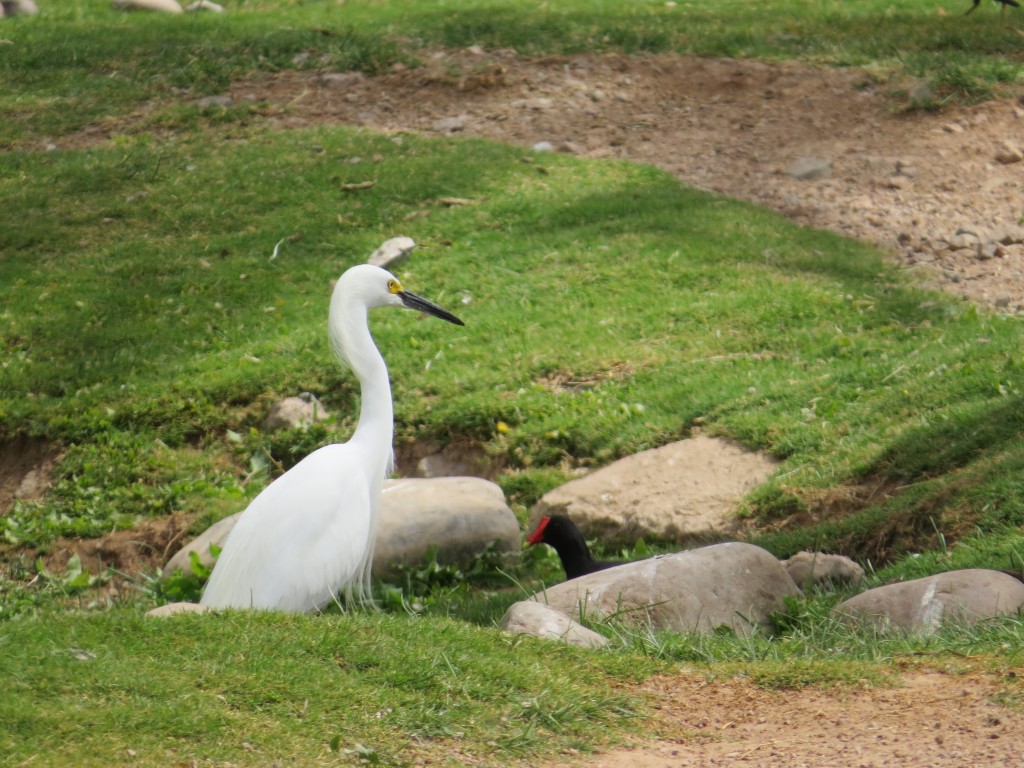 Later on we saw the gallinule in another part of the zoo acting suspicious.
Later on we saw the gallinule in another part of the zoo acting suspicious. 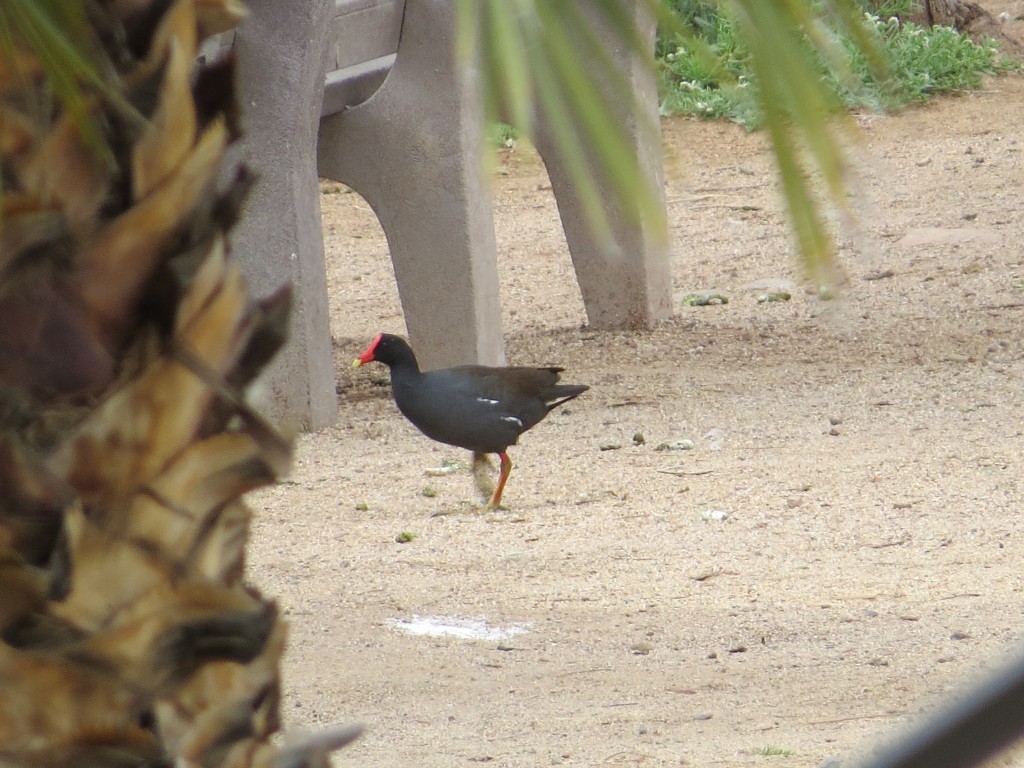
I’m not sure, but this Orangutan may have been hiding from the gallinule’s antics.
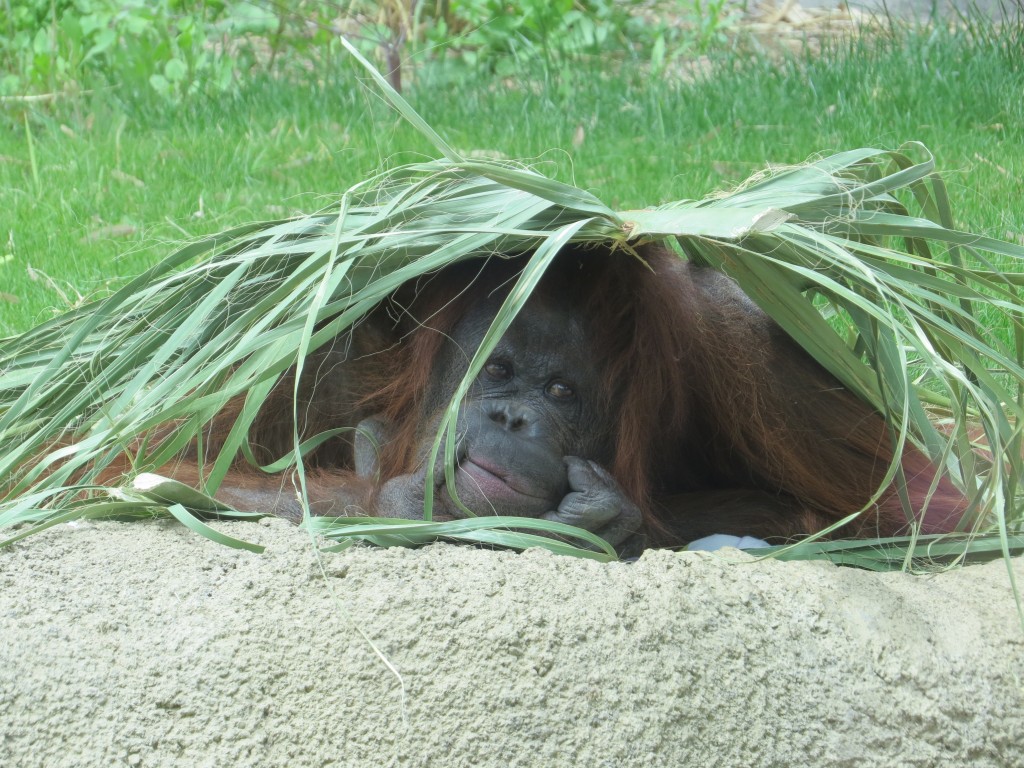
One of the exhibits that everone seemed to enjoy was the bird cage where we could walk among the birds. I don’t know what this bird is called – some kind of crazy prehistotic pigeon probably from a land where rats are the size of dogs. Maybe it’s just my North American arrogance, but I’m content to only concern myself with the 700+ birds on this continent and not worry about the rest of the 10,000+ that are out in this big old world.
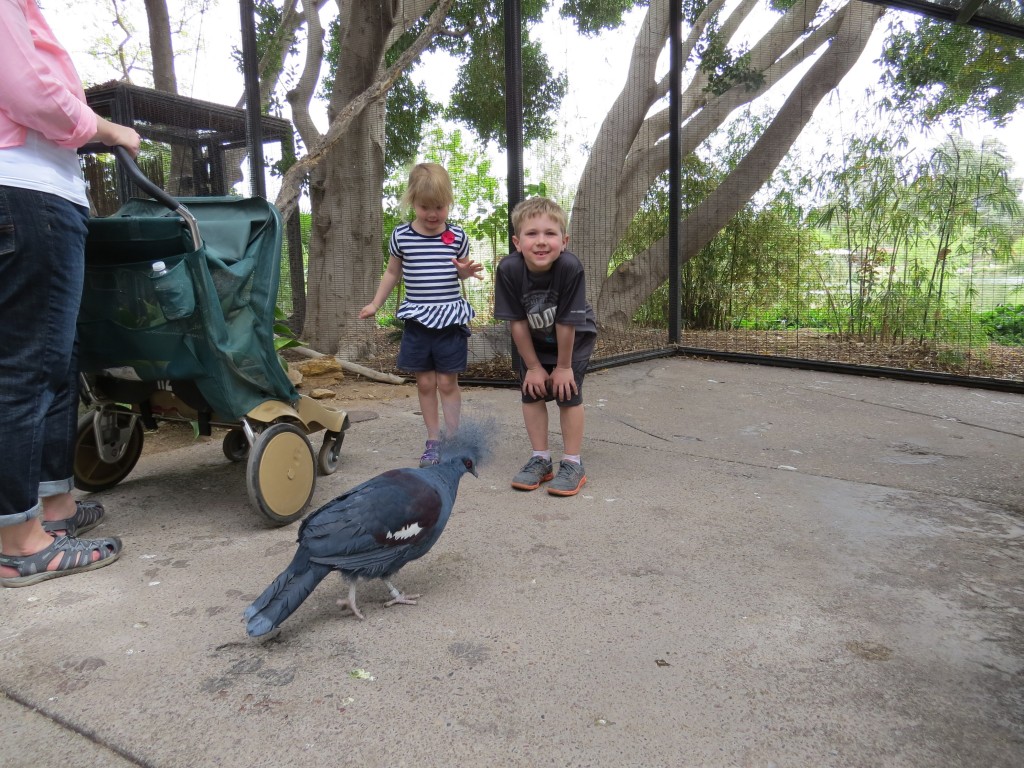
This Golden Pheasant turned all our heads, though, and made us pause long enough to remember his name.
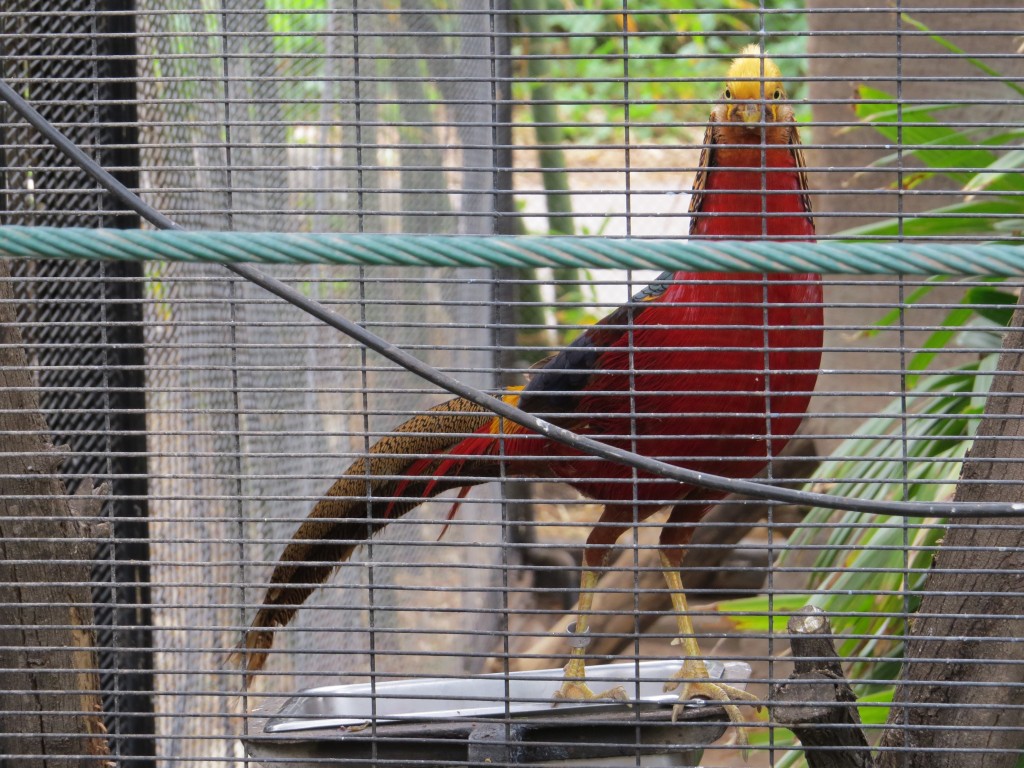
Golden Pheasant
My kids found just as much pleasure with the non-living animals as the breathing ones. Do you think Evan has seen just a few too many gator-wrangling shows on cable?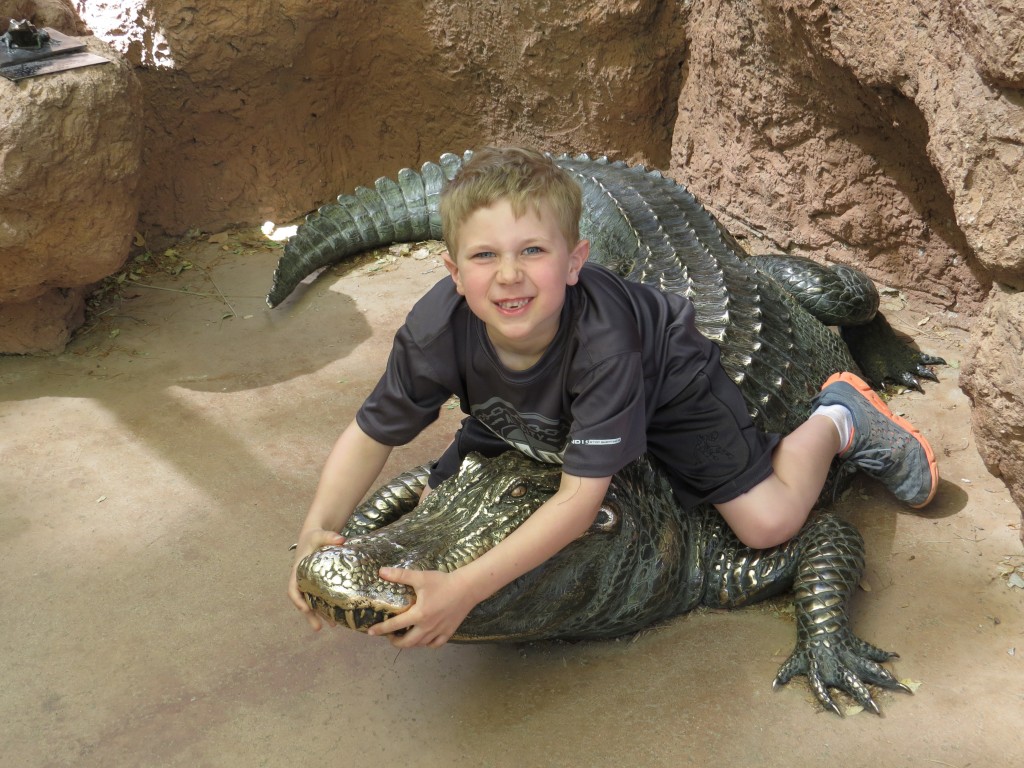
I certainly enjoyed seeing the numerous birds that aren’t “supposed” to be at the zoo. It was a thrill to get three lifers today (four for Evan). I also love opportunities to get a good photo of a bird that is plentiful back home, such as this Ring-necked Duck where you can actually see the brown ring on its neck for which it is named.
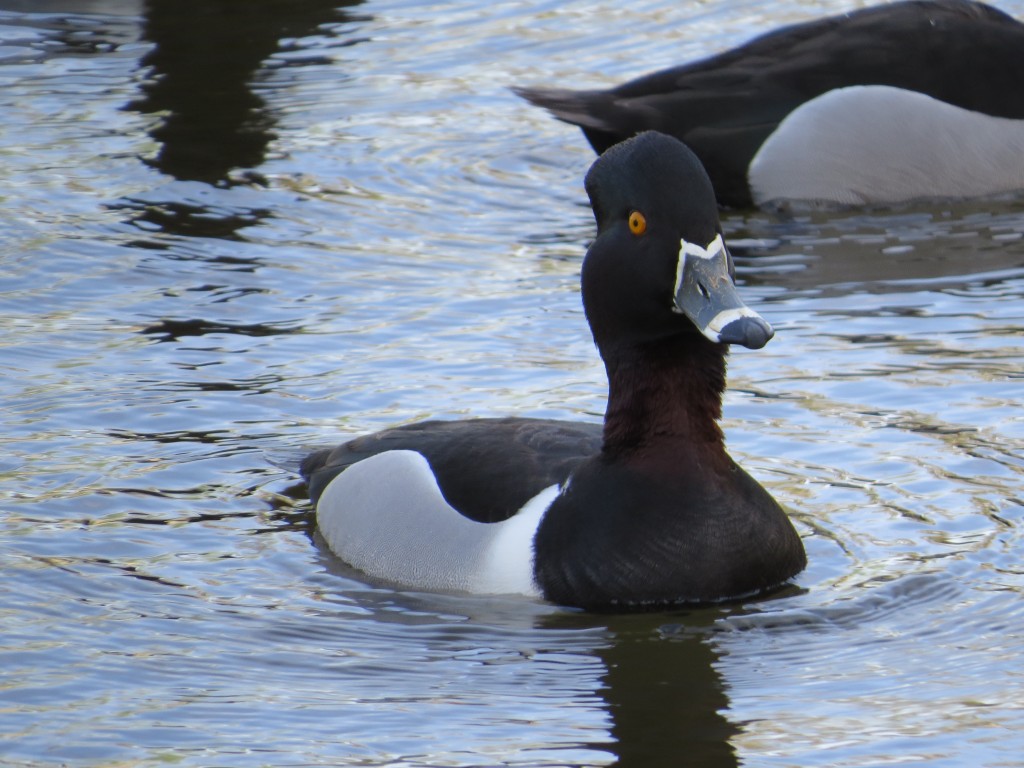
Ring-necked Duck – often incorectly, albeit logically, called the Ring-billed Duck
It was a good day with Grandma and Grandpa, walking around together and seeing all those birds and non-birds. It was our last full day in the beautiful Arizona weather. Overall it was nice to get away and great for us birders to put a few more notches on the old birding belt. We are definitely looking forward to our next visit. But, we northerners had to get back to the land of blizzards for winter’s last(?) shake of its fist.
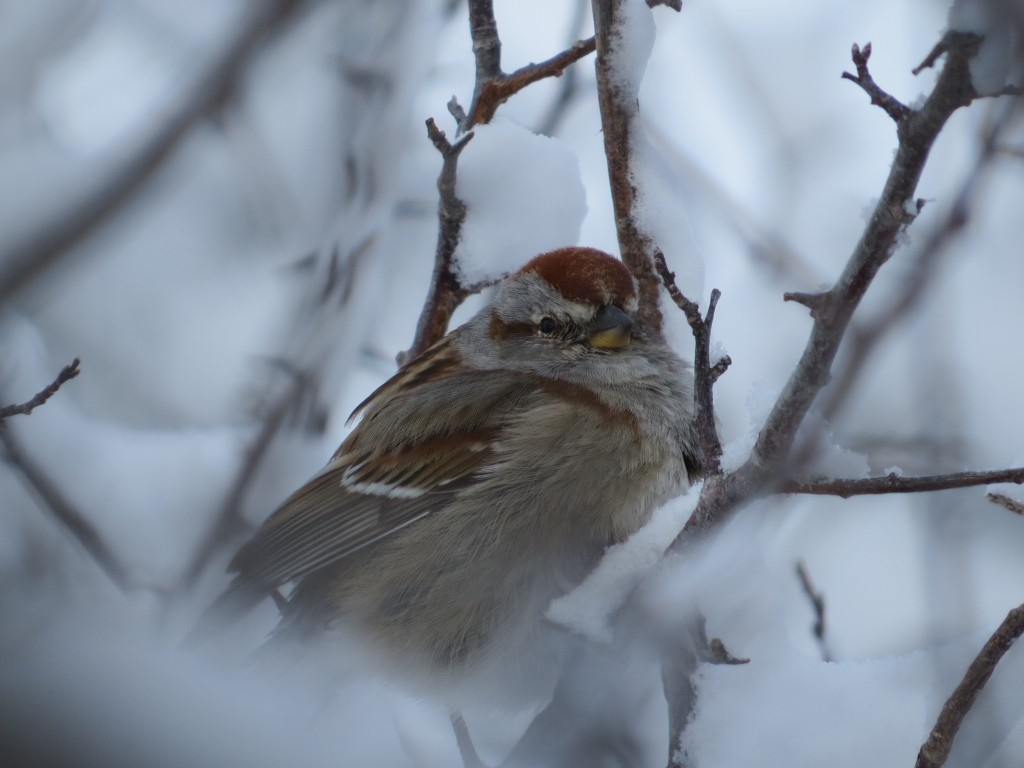
American Tree Sparrow
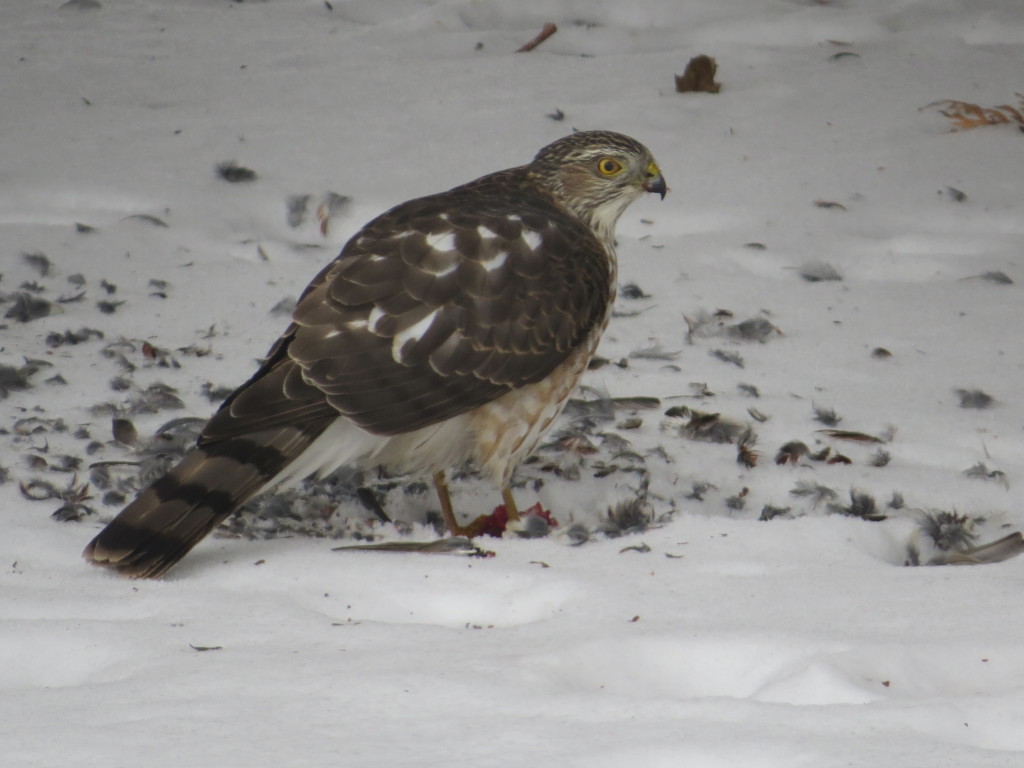
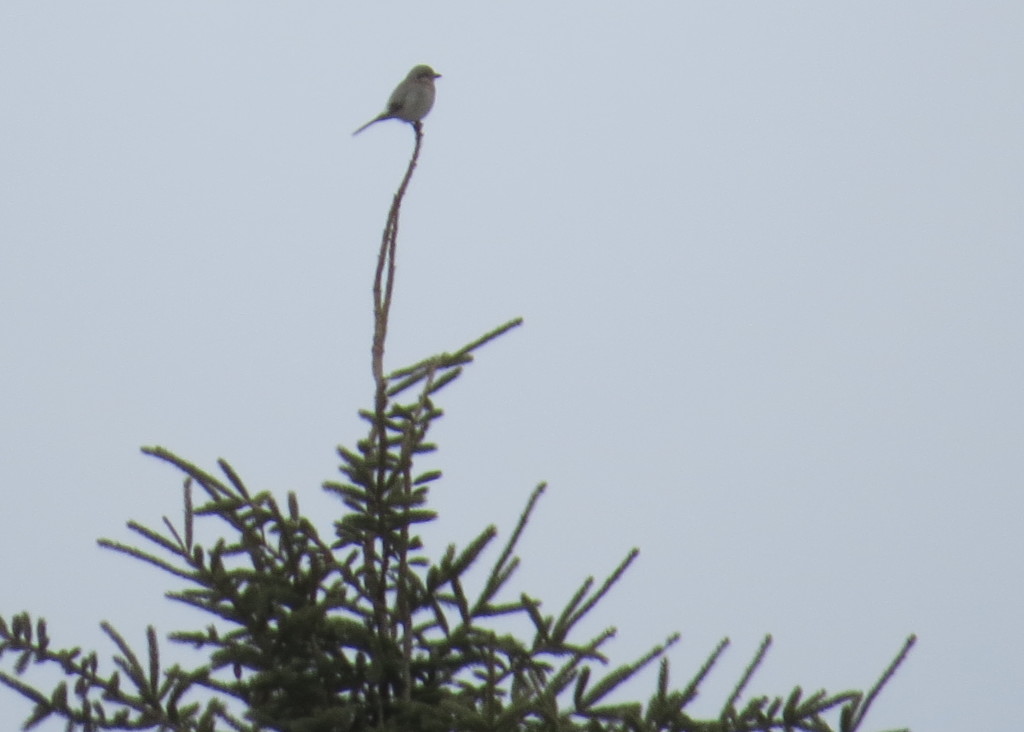
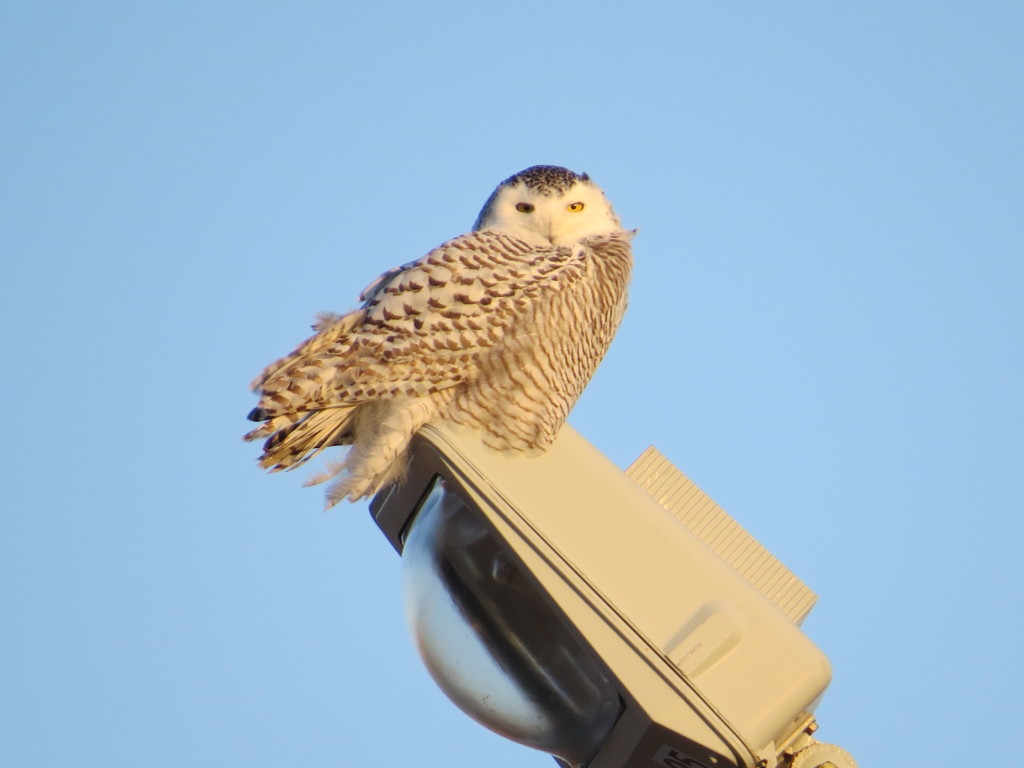
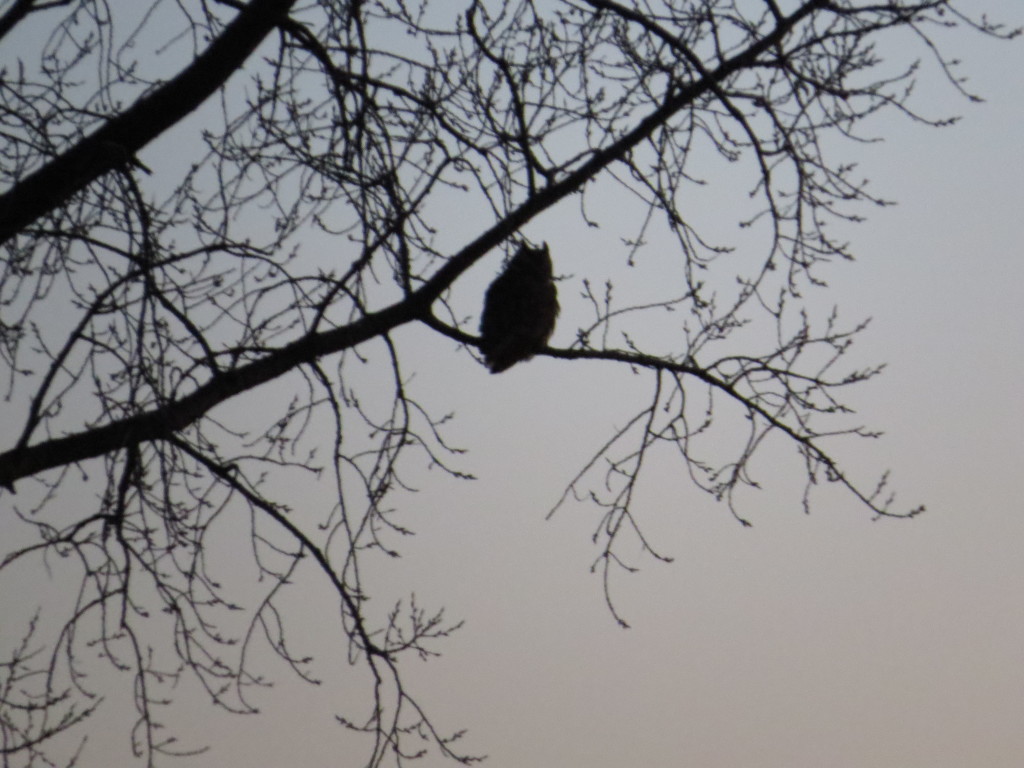 So as the sun sets on each winter day with minimal birding activity, thoughts drift more and more to spring migration and planned spring trips to Arizona and Montana, when the bird life will be overwhelming in new and old birds alike.
So as the sun sets on each winter day with minimal birding activity, thoughts drift more and more to spring migration and planned spring trips to Arizona and Montana, when the bird life will be overwhelming in new and old birds alike.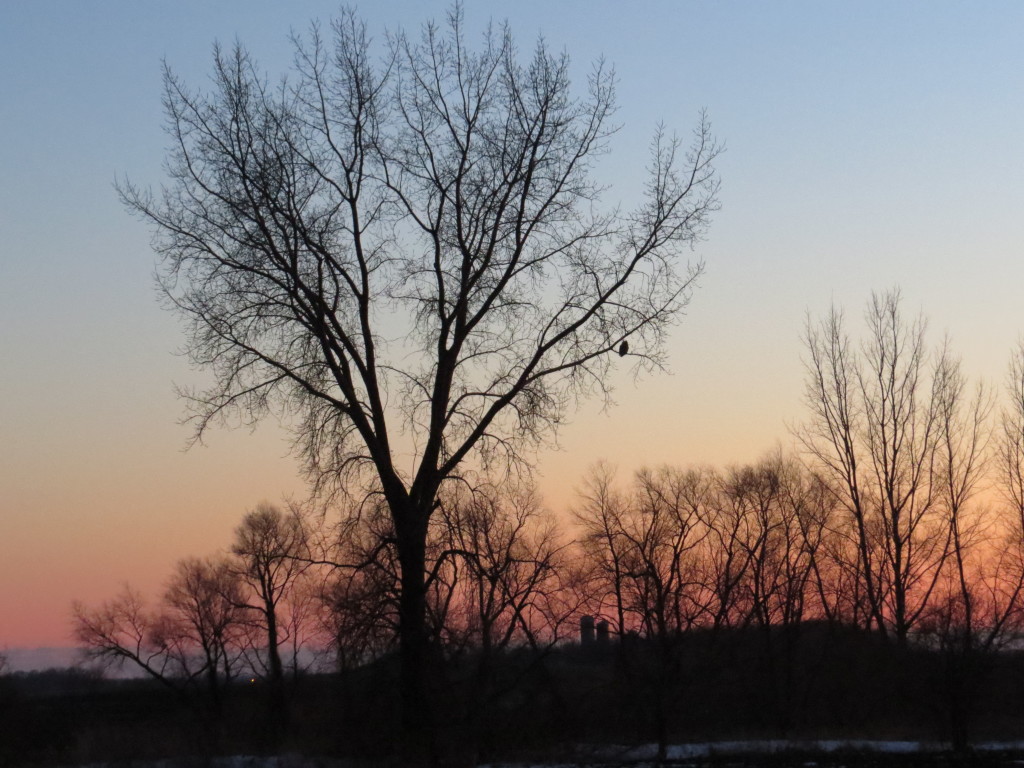

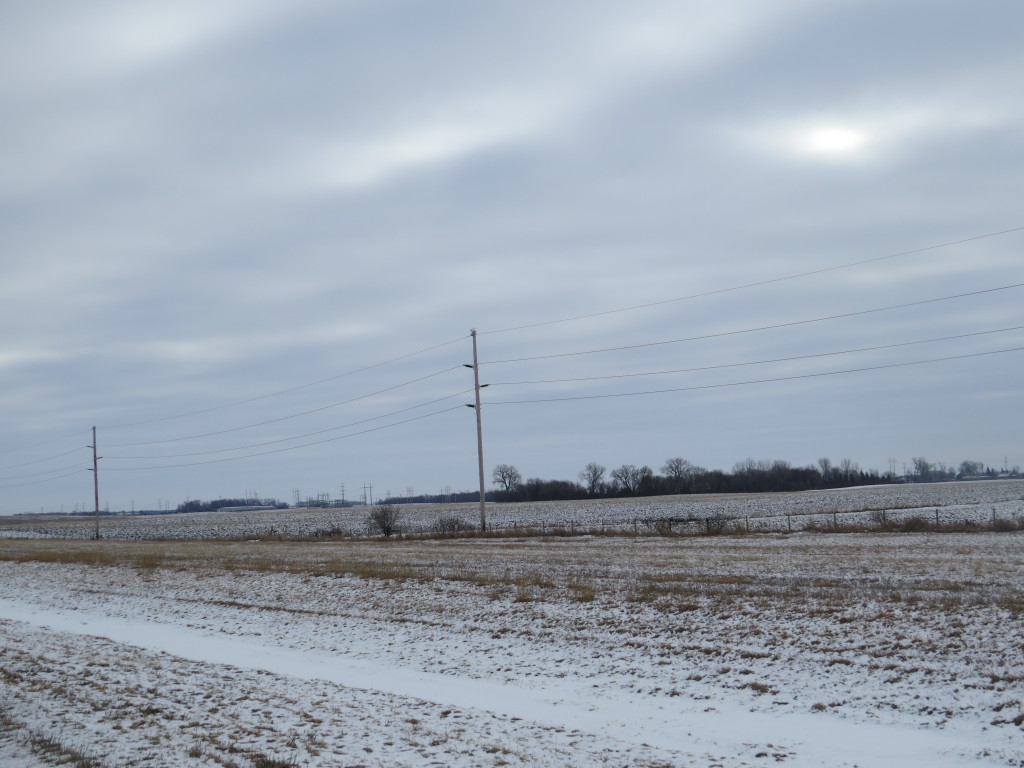
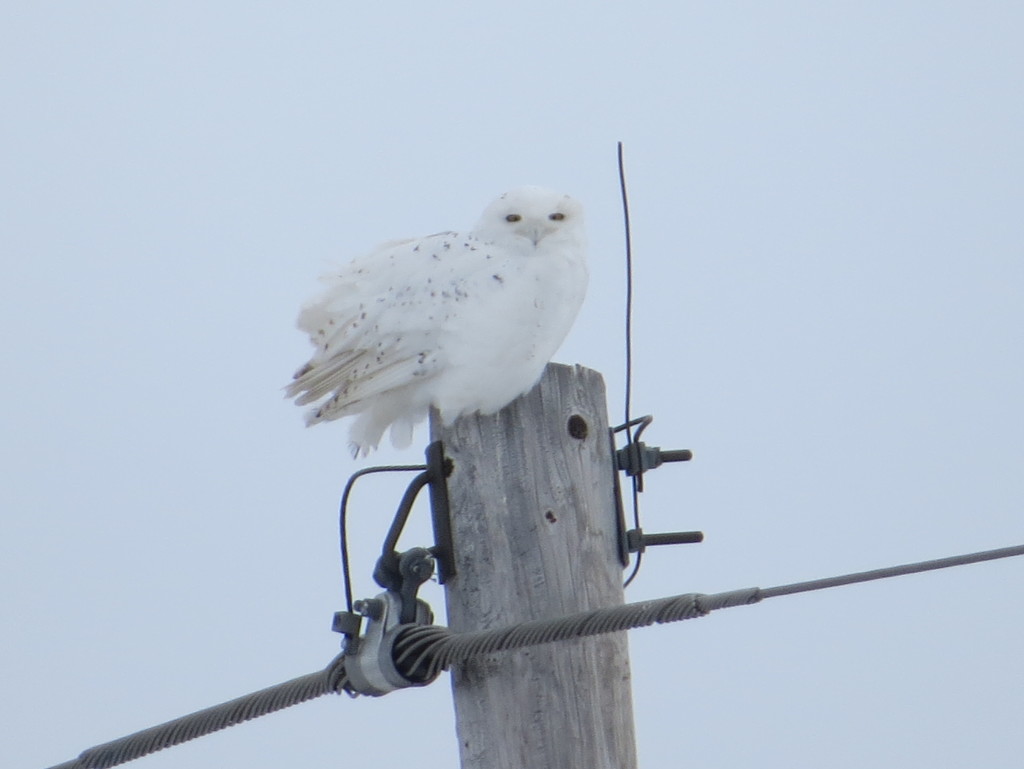
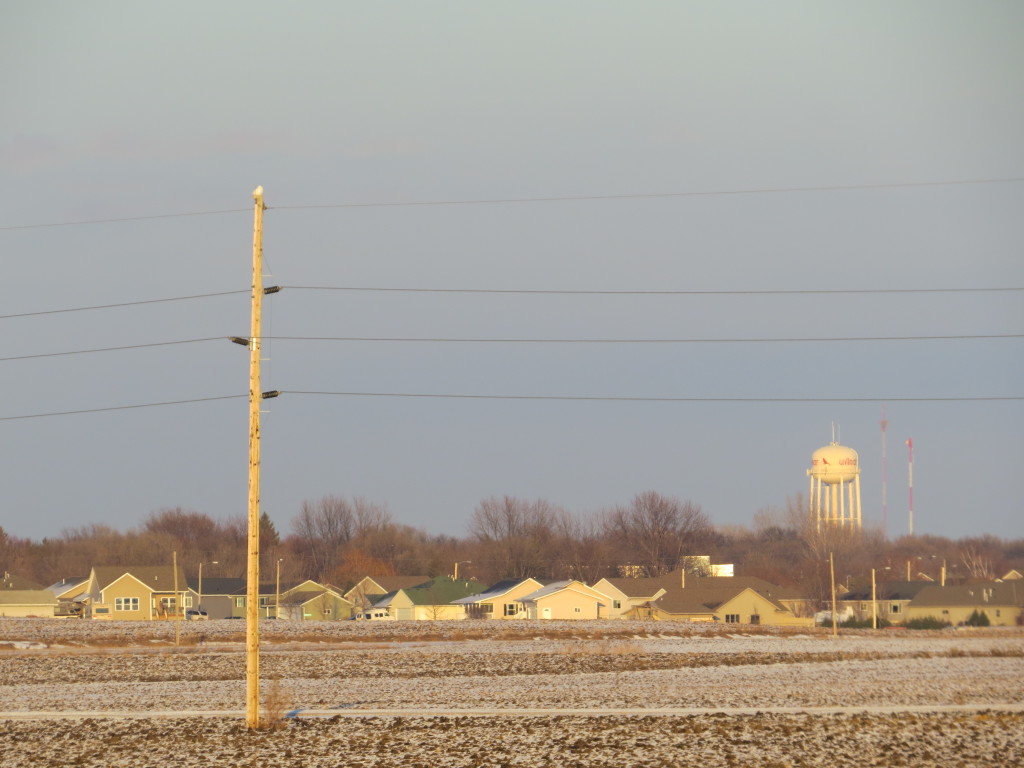
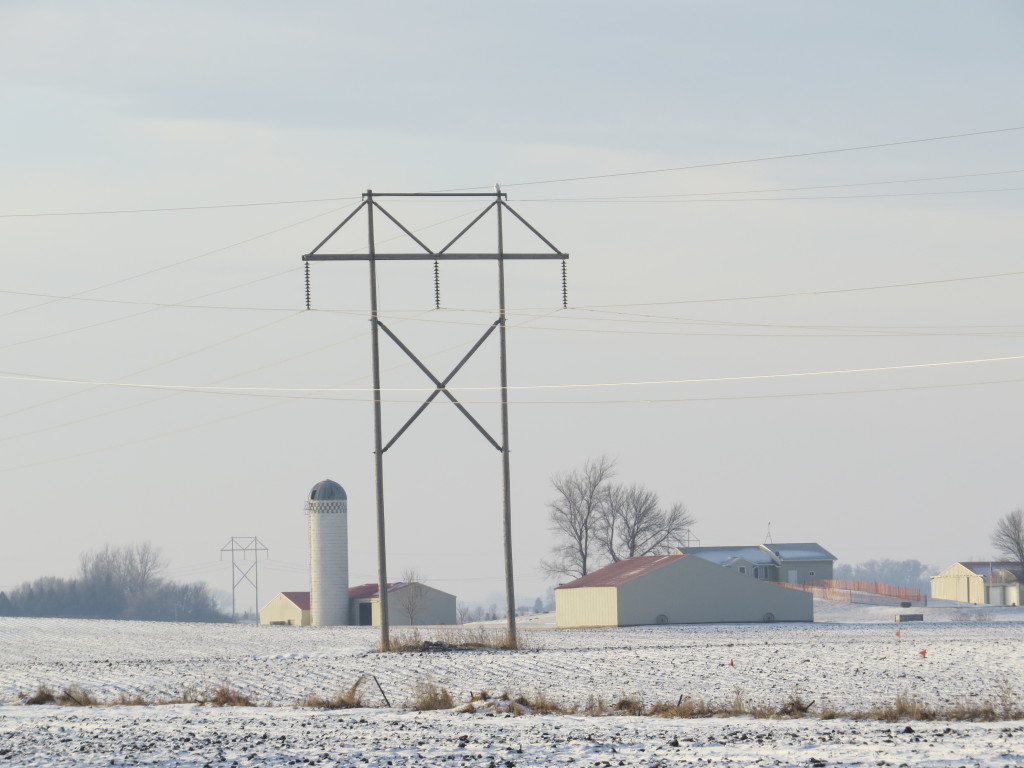
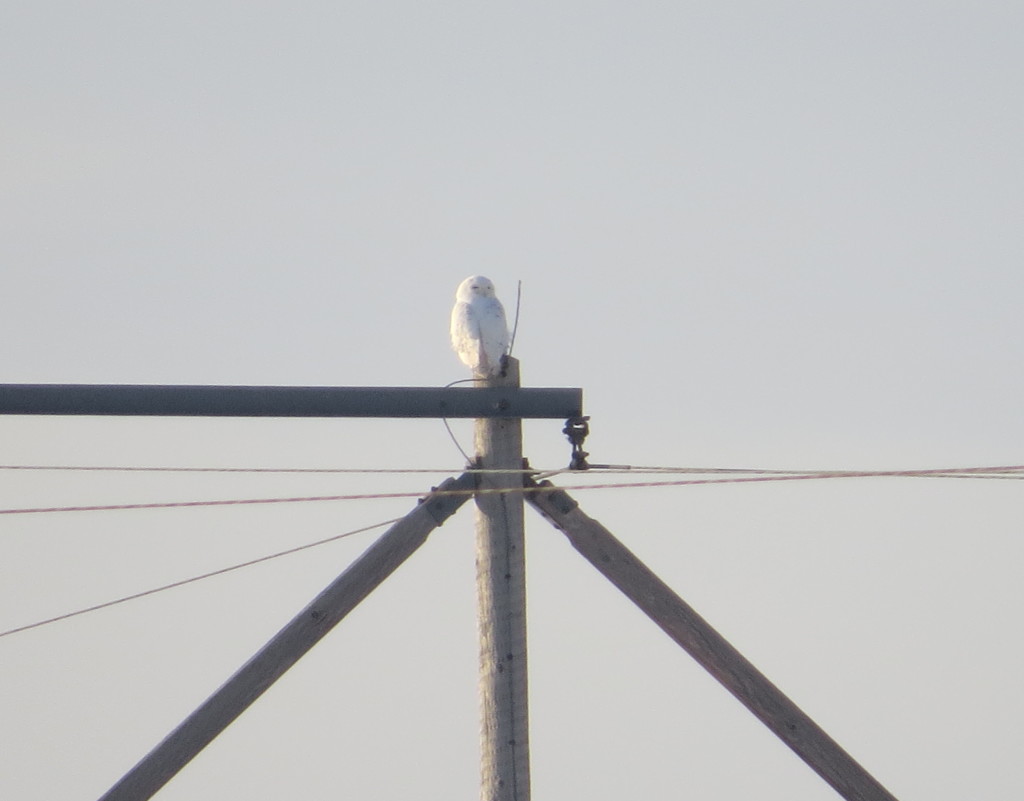
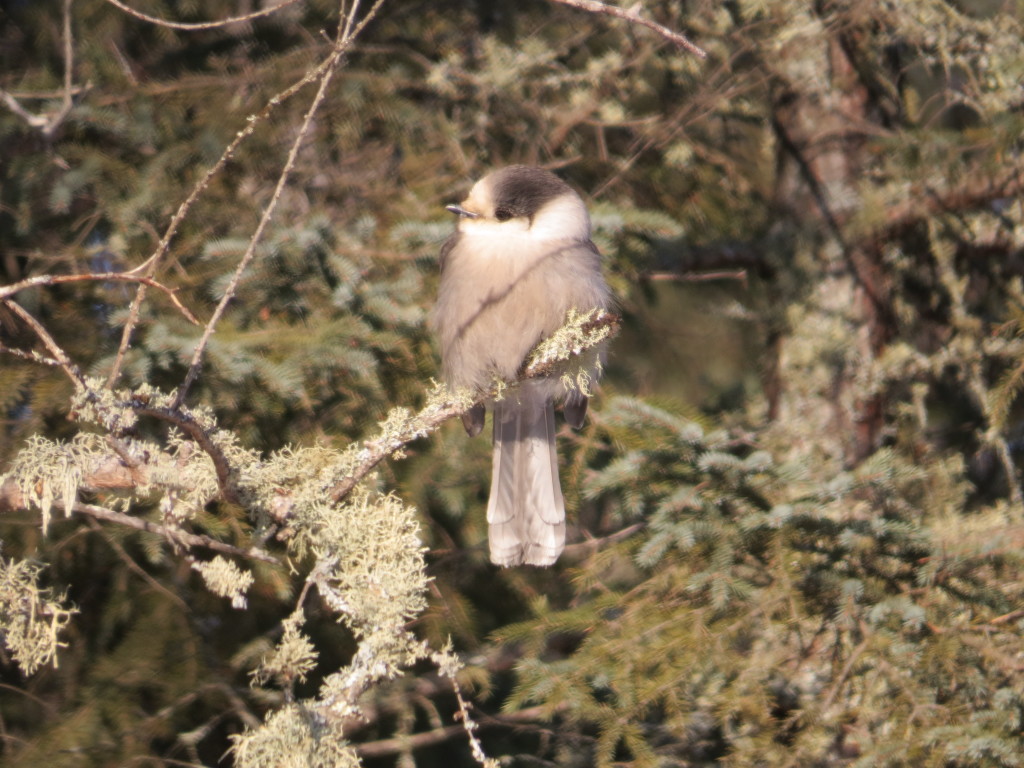
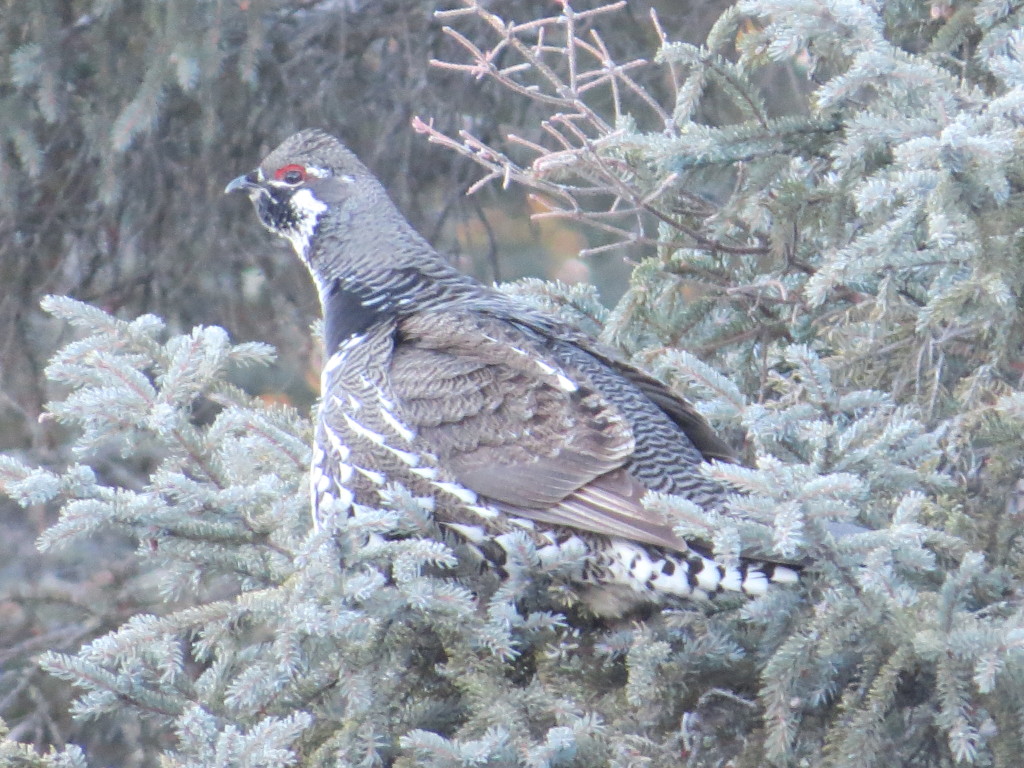
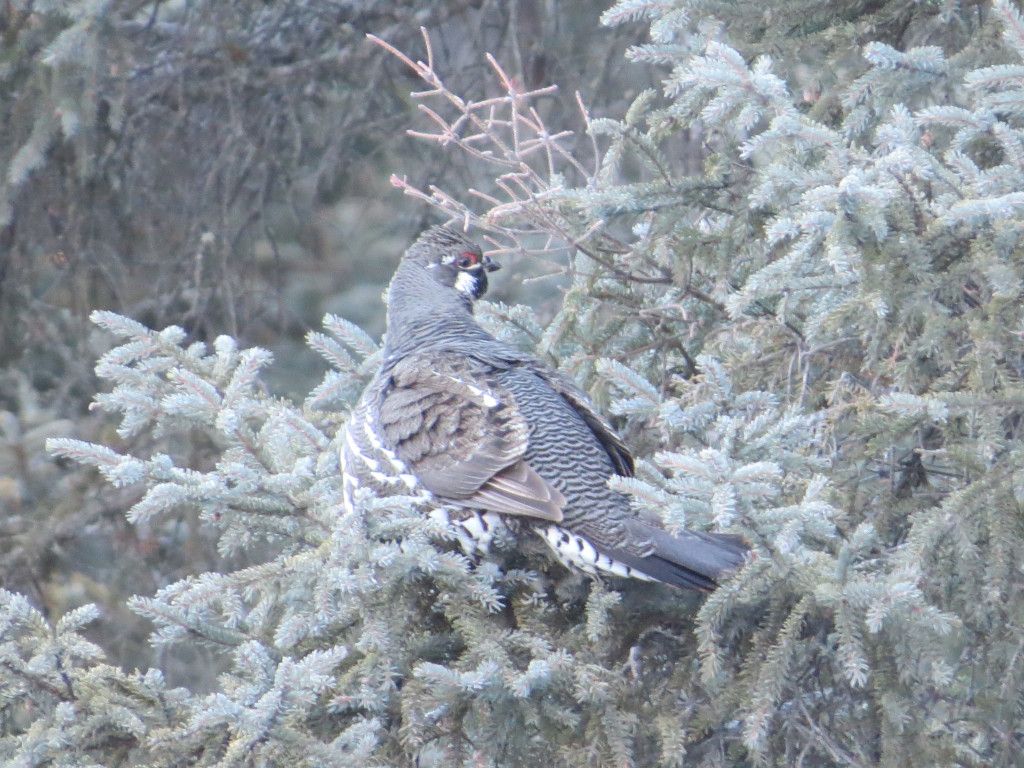
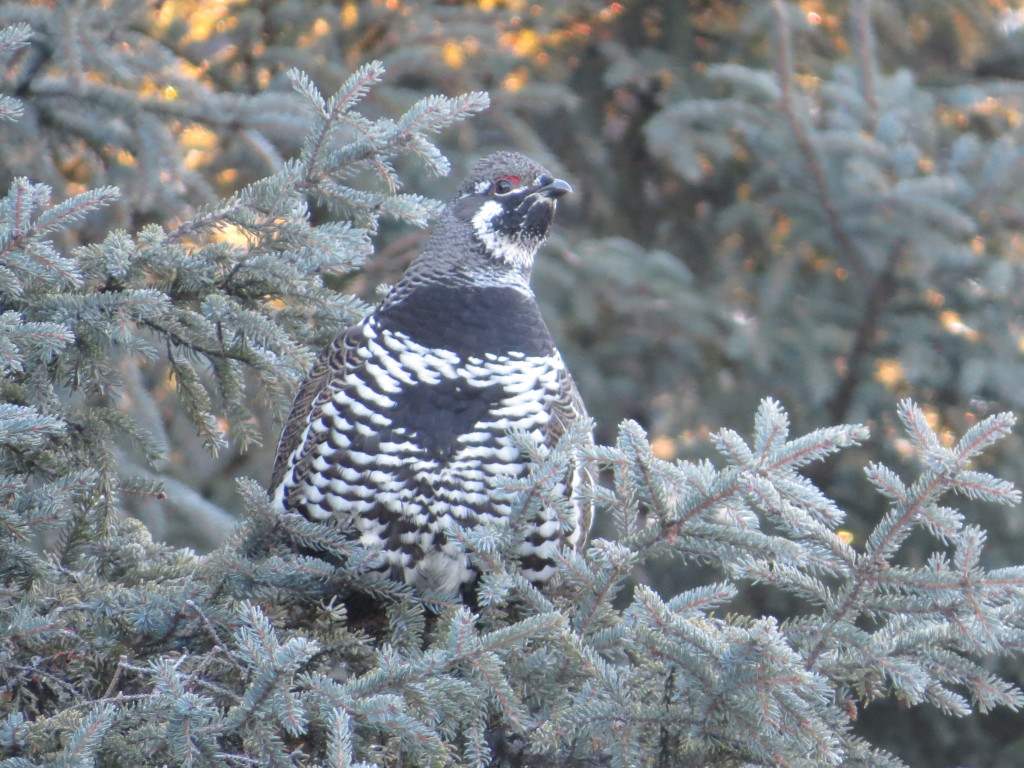
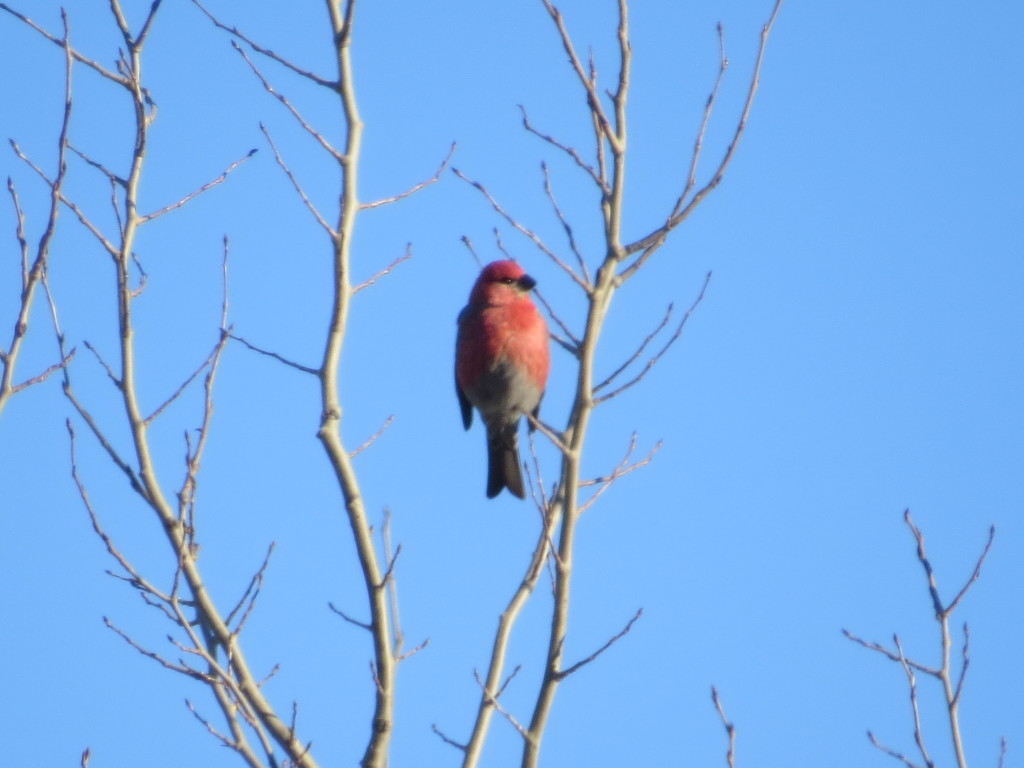
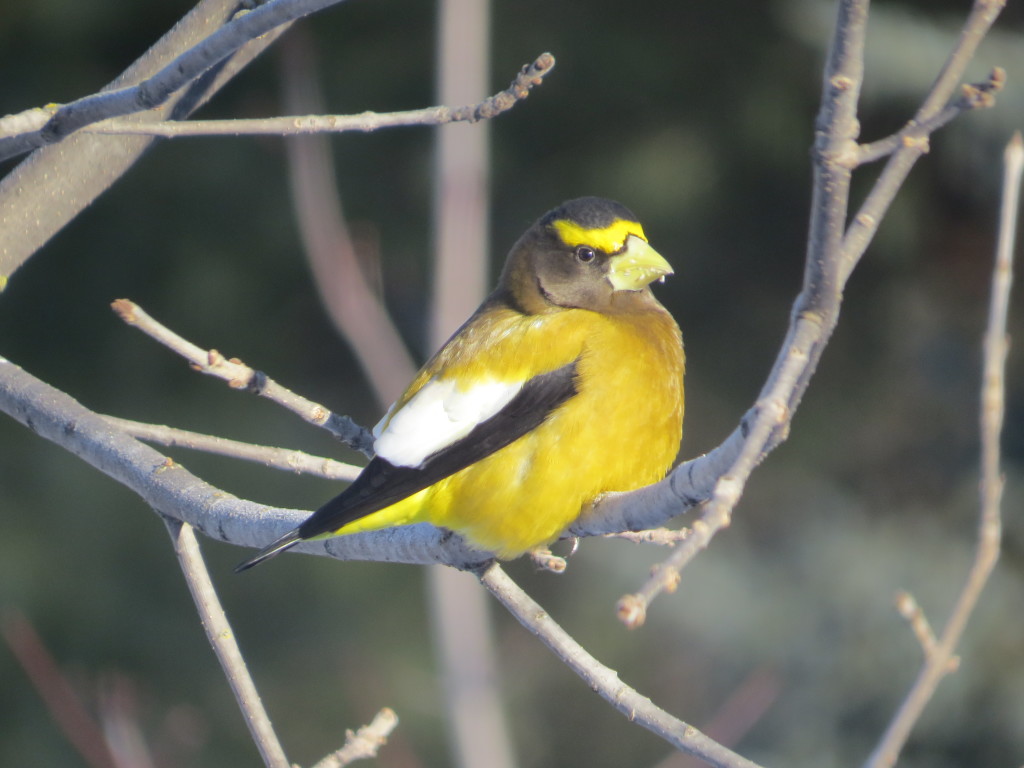
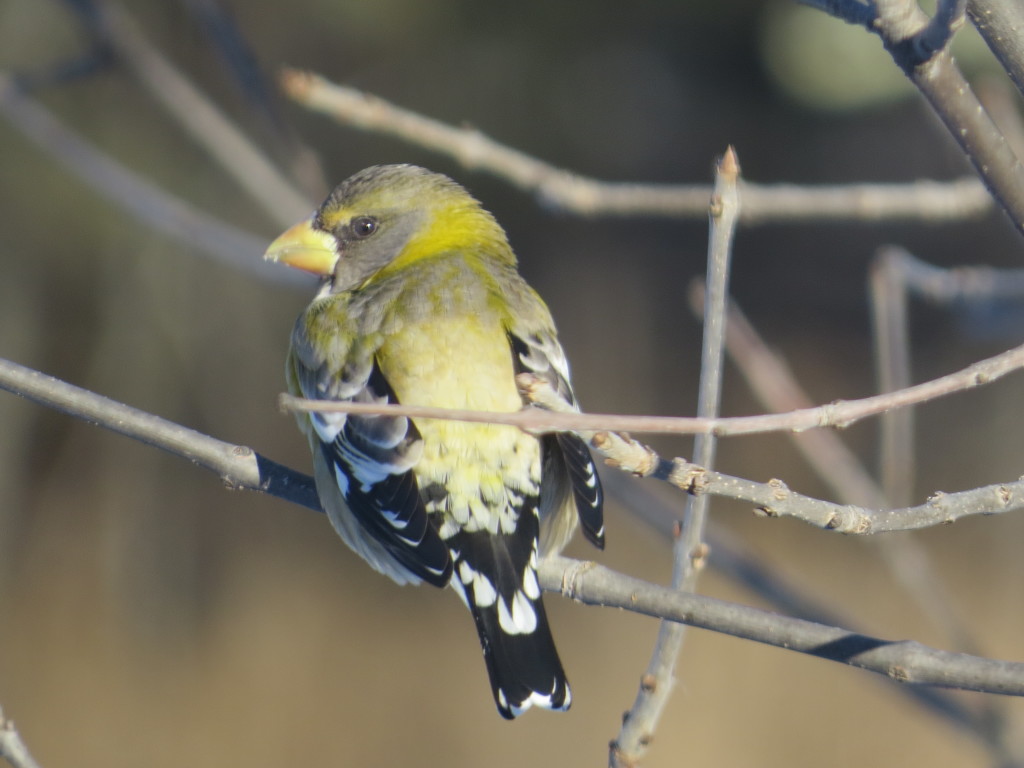
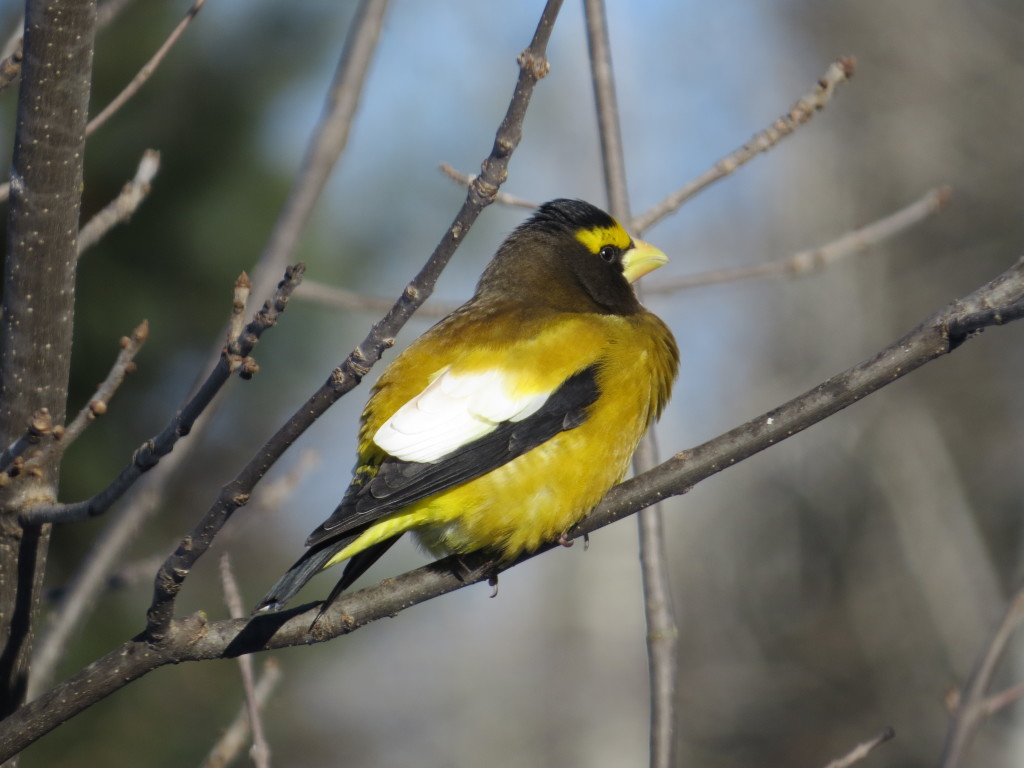
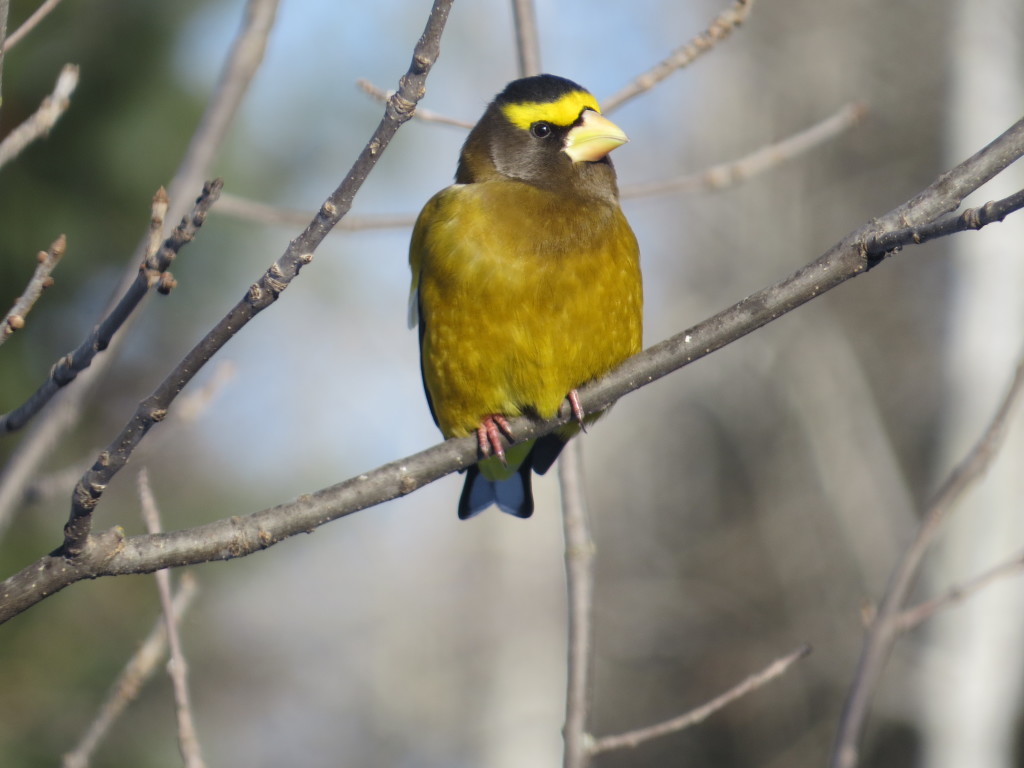 With cravings for goodies and grosbeaks satisfied, it was hard to complain about getting whooped by Grandma in Farkle. We left with full bellies and content hearts, satisfied yet already yearning for the next visit. It was a great day in the northwoods with its birds and people!
With cravings for goodies and grosbeaks satisfied, it was hard to complain about getting whooped by Grandma in Farkle. We left with full bellies and content hearts, satisfied yet already yearning for the next visit. It was a great day in the northwoods with its birds and people!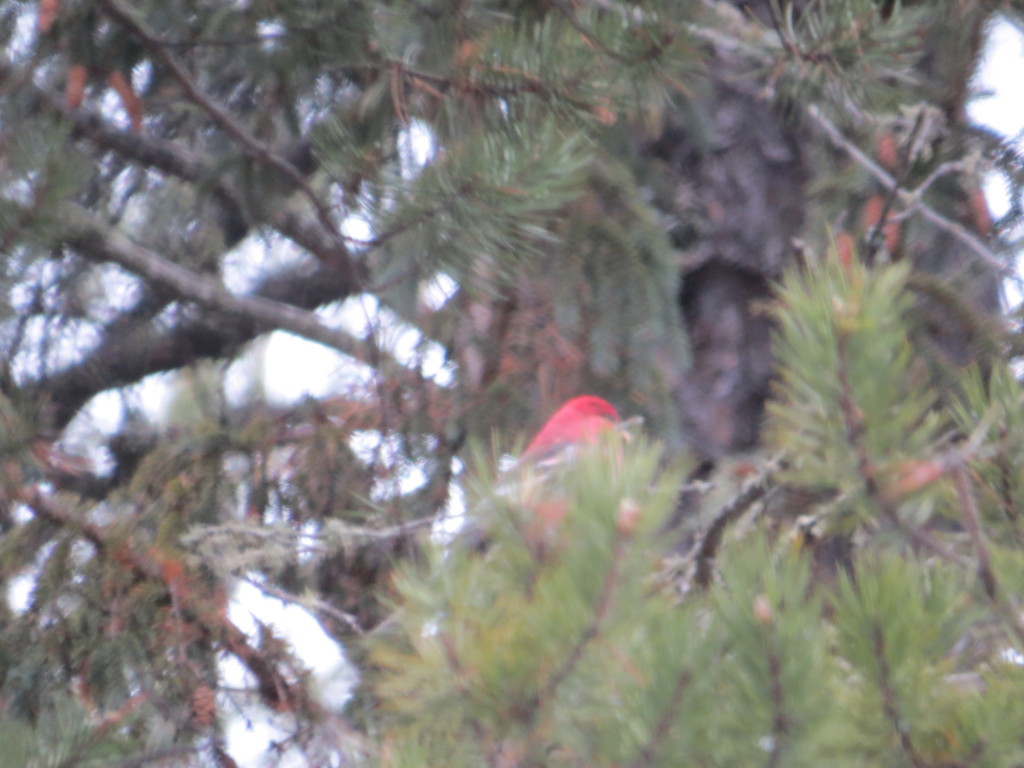
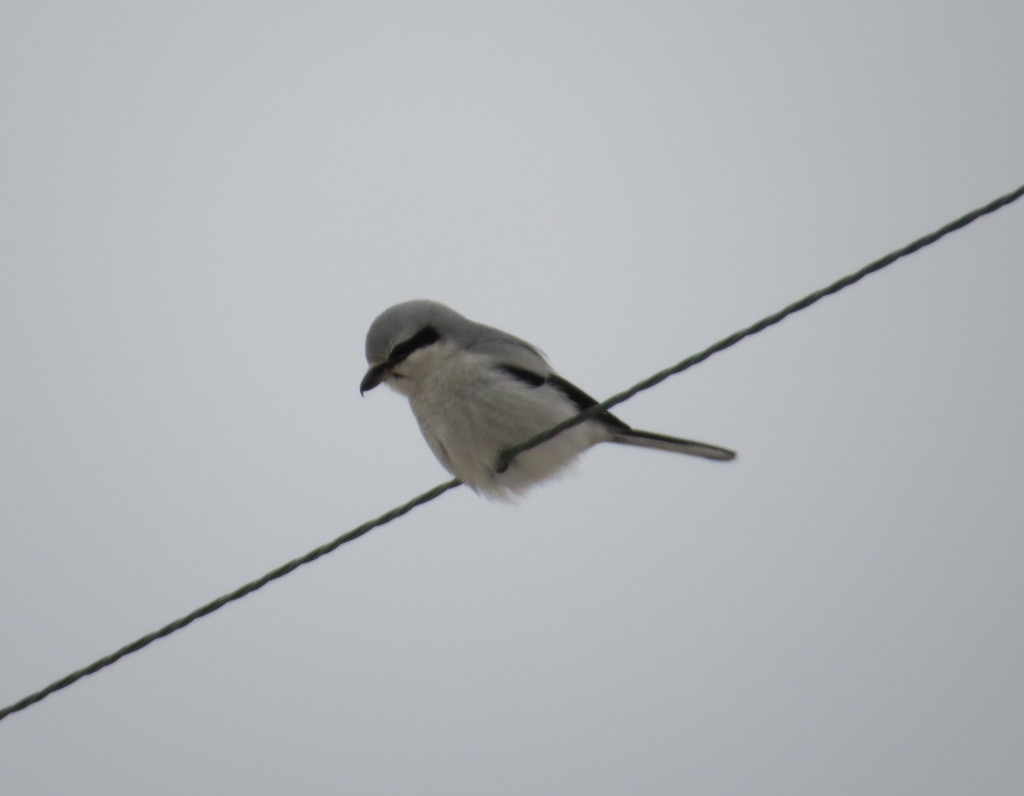
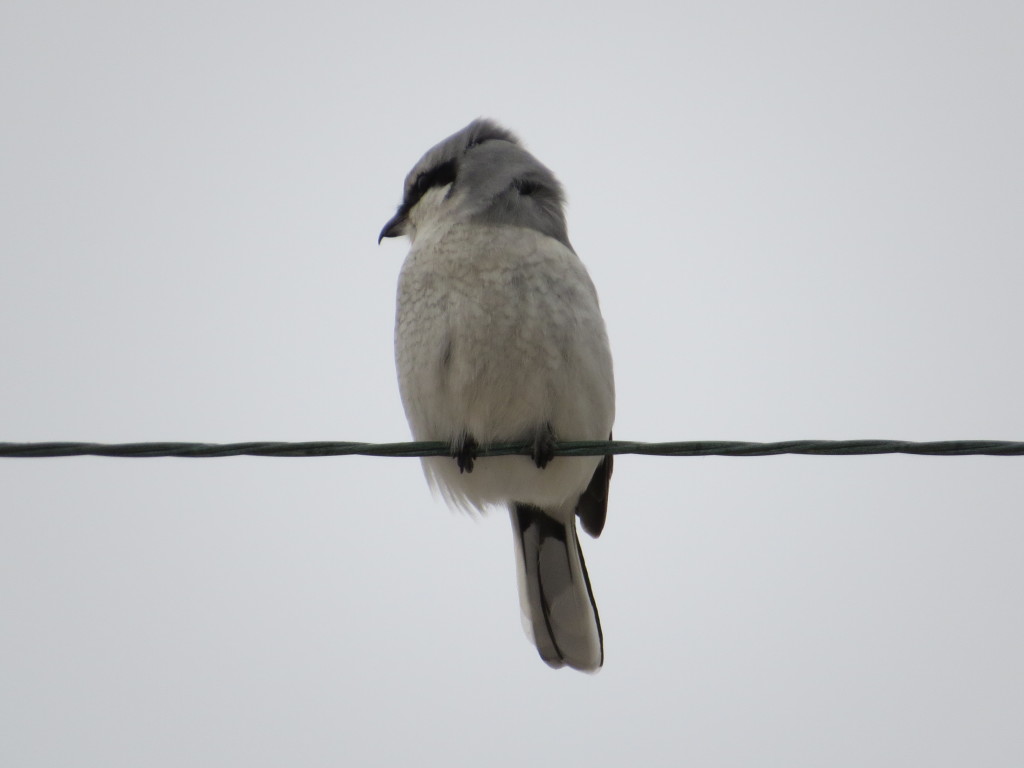
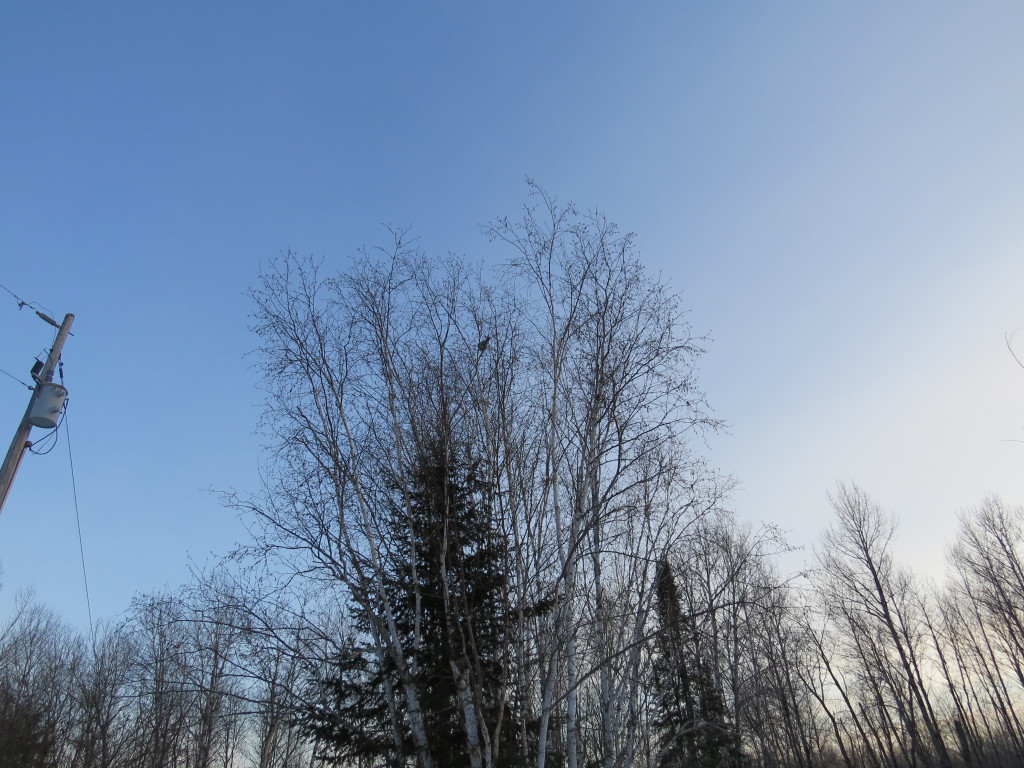
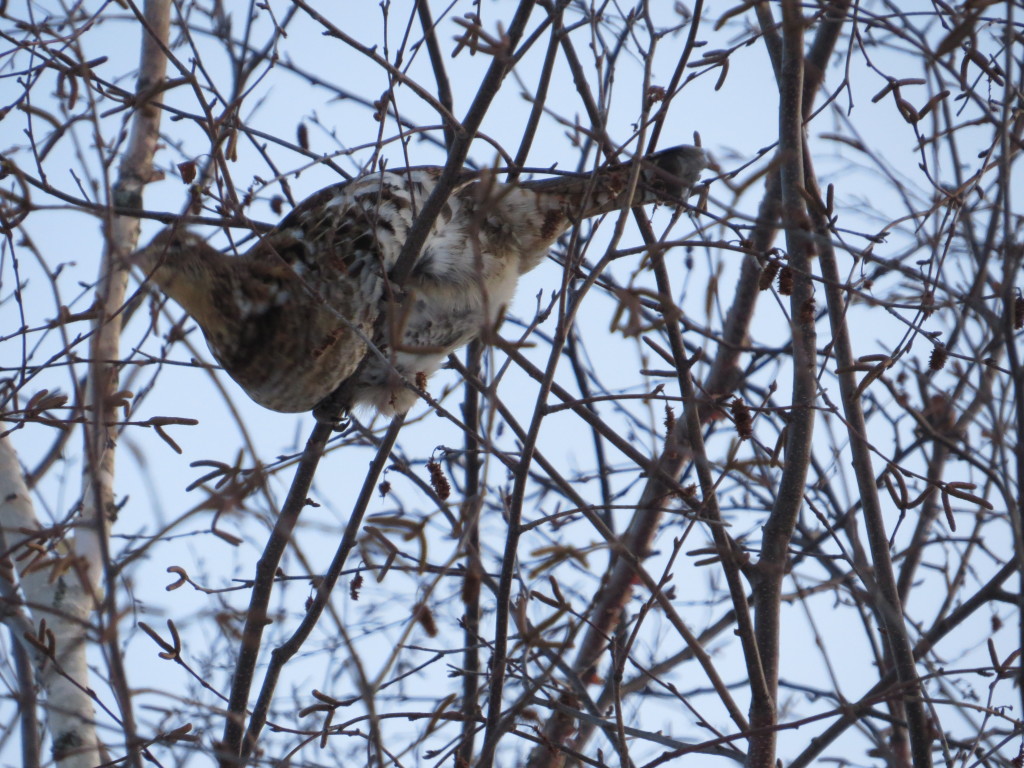
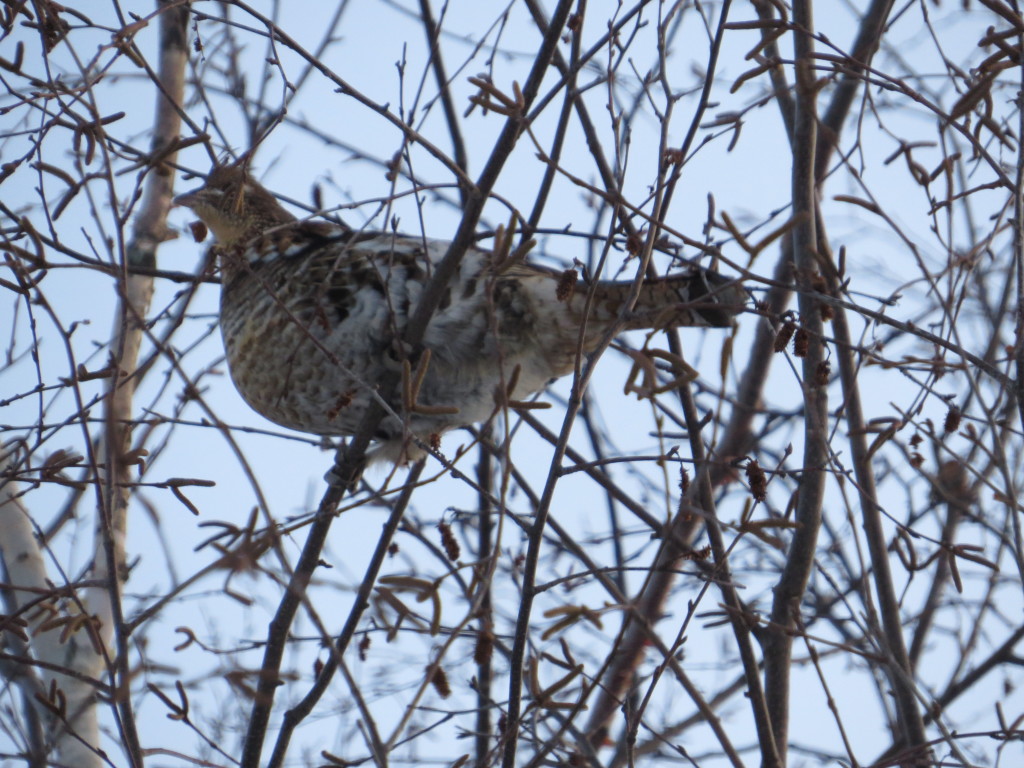
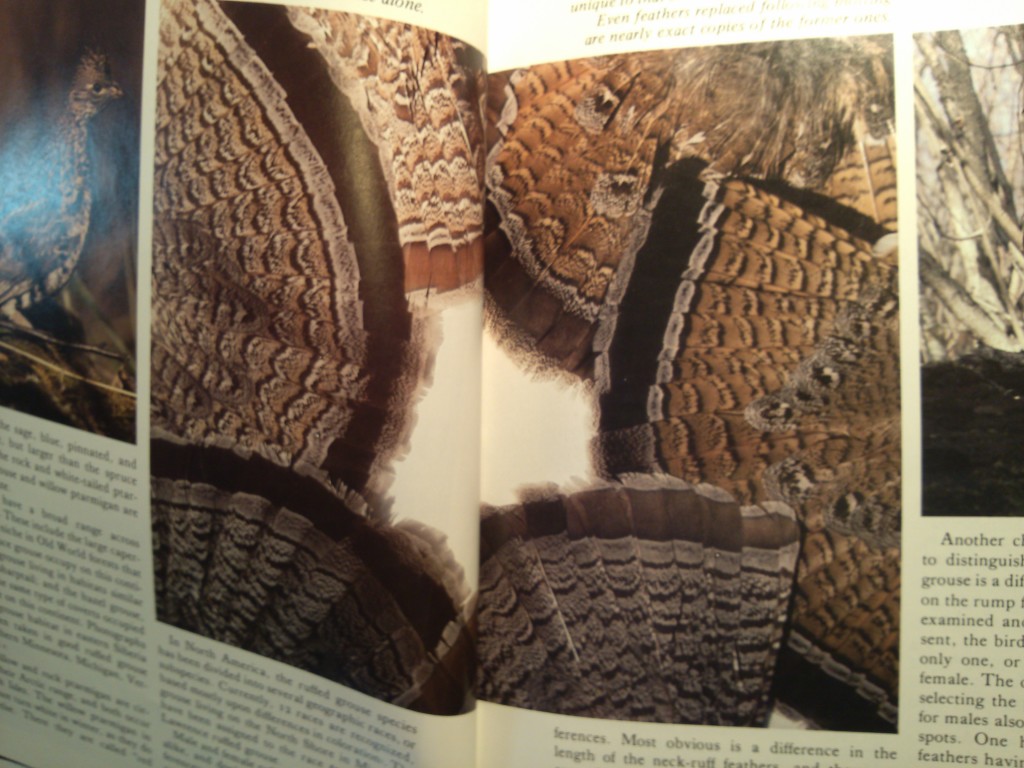 Fun fact from Gullion’s book: It is well-known that Ruffed Grouse completely burrow into powdery snow to keep warm on cold winter days. However, what is not well known is that the Great Gray Owl is the only known predator that can hear the grouse in their burrows and pluck them out of the snow! How cool is that?! Here I thought Great Grays just ate small rodents. As Gullion says, it’s fortunate for Ruffed Grouse that Great Gray Owls are not very numerous in northern Minnesota. If I ever witnessed such predation, I might have to hang up my binoculars and camera because it just wouldn’t get any better than that. Fortunately, Evelyn’s grouse doesn’t have to worry about such things yet with low snow totals. But he sure looks plump for the pickin’.
Fun fact from Gullion’s book: It is well-known that Ruffed Grouse completely burrow into powdery snow to keep warm on cold winter days. However, what is not well known is that the Great Gray Owl is the only known predator that can hear the grouse in their burrows and pluck them out of the snow! How cool is that?! Here I thought Great Grays just ate small rodents. As Gullion says, it’s fortunate for Ruffed Grouse that Great Gray Owls are not very numerous in northern Minnesota. If I ever witnessed such predation, I might have to hang up my binoculars and camera because it just wouldn’t get any better than that. Fortunately, Evelyn’s grouse doesn’t have to worry about such things yet with low snow totals. But he sure looks plump for the pickin’.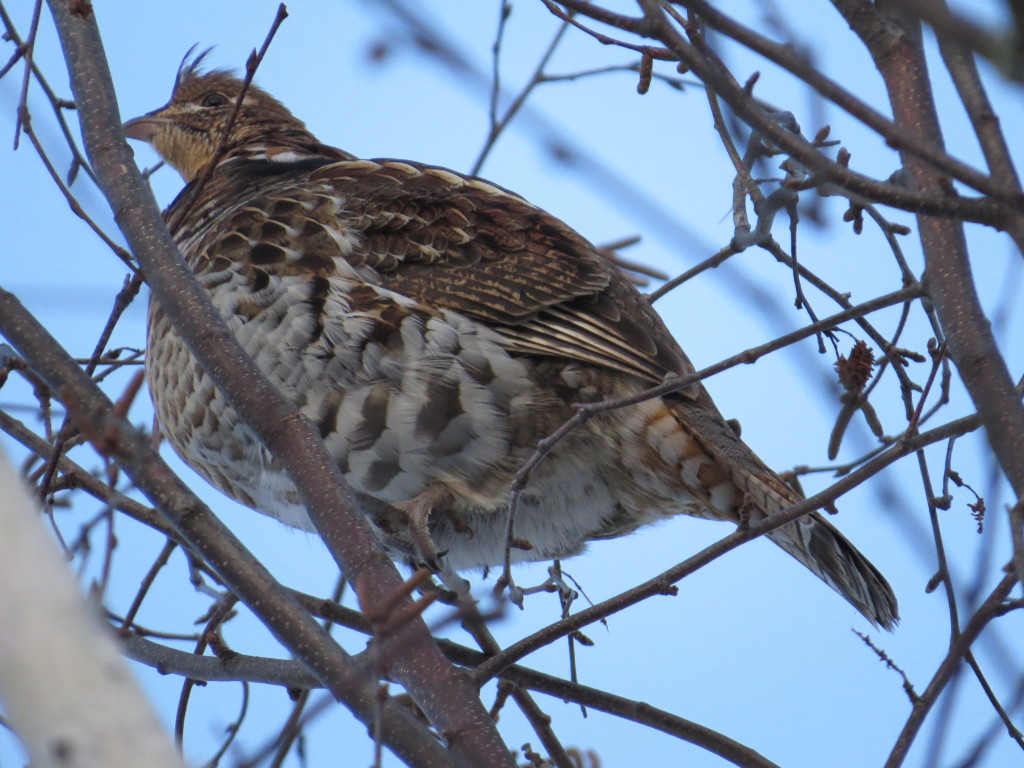
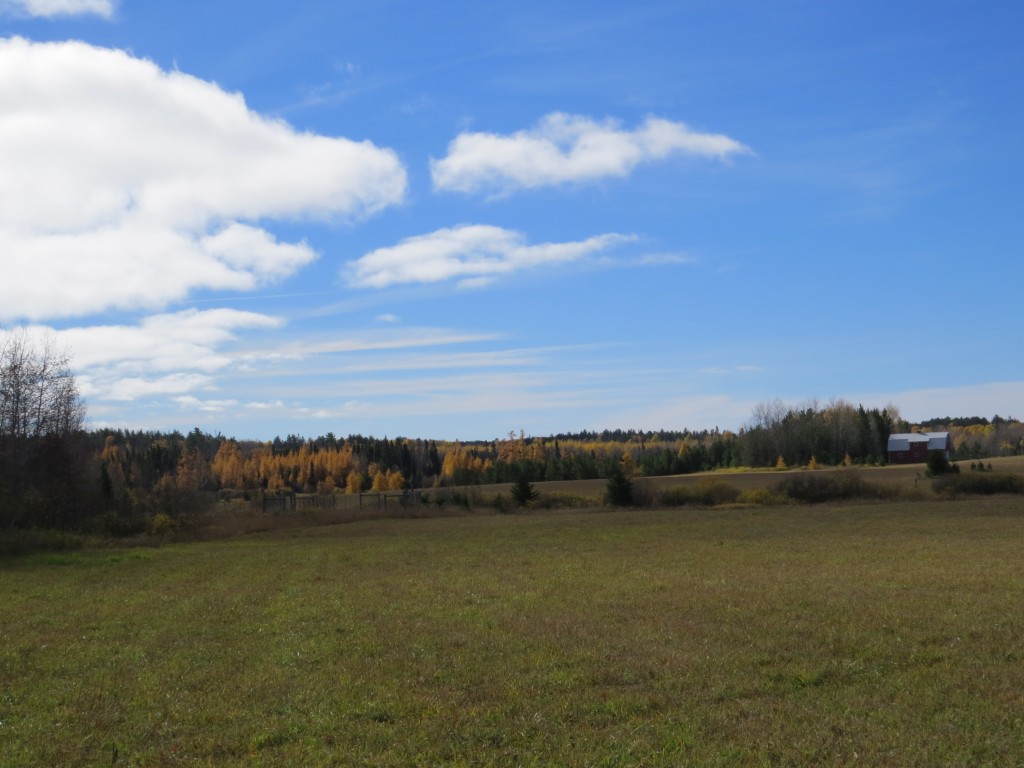 Last week we enjoyed an extra-long weekend due to fall break, so we made the 265-mile trek home to northern Minnesota to visit our families and enjoy the beautiful northwoods. Going up north is always a delight, but doing so in the fall is special treat. The stunning colors, the perfect temps, and the sweet smell of decaying Aspen leaves all remind us of this great land in which my wife and I grew up. Let’s not forget the birds, though. Northern Minnesota has its own species of interest that are not found in most of the state or the country for that matter. To that end, I had been coveting some recent pictures in my Facebook feed of Great Gray Owls in Tamarack trees in the Sax-Zim Bog. The Bog is only 45 minutes south of my parents’ place, so I usually try to hit it up each time I go home.
Last week we enjoyed an extra-long weekend due to fall break, so we made the 265-mile trek home to northern Minnesota to visit our families and enjoy the beautiful northwoods. Going up north is always a delight, but doing so in the fall is special treat. The stunning colors, the perfect temps, and the sweet smell of decaying Aspen leaves all remind us of this great land in which my wife and I grew up. Let’s not forget the birds, though. Northern Minnesota has its own species of interest that are not found in most of the state or the country for that matter. To that end, I had been coveting some recent pictures in my Facebook feed of Great Gray Owls in Tamarack trees in the Sax-Zim Bog. The Bog is only 45 minutes south of my parents’ place, so I usually try to hit it up each time I go home.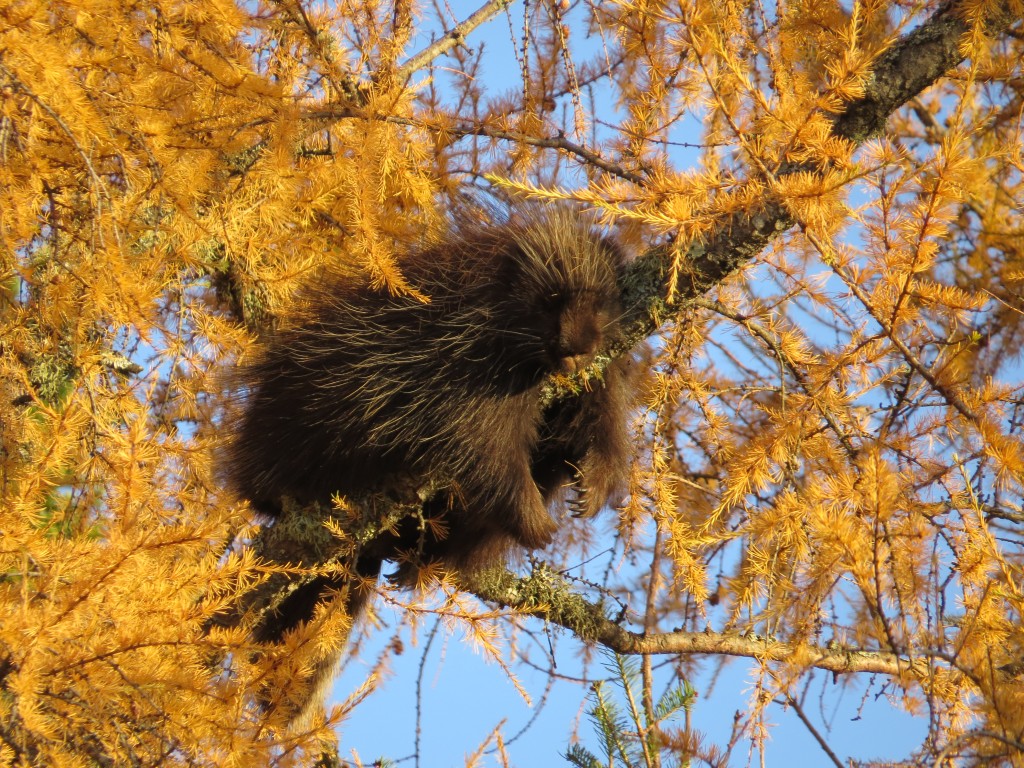
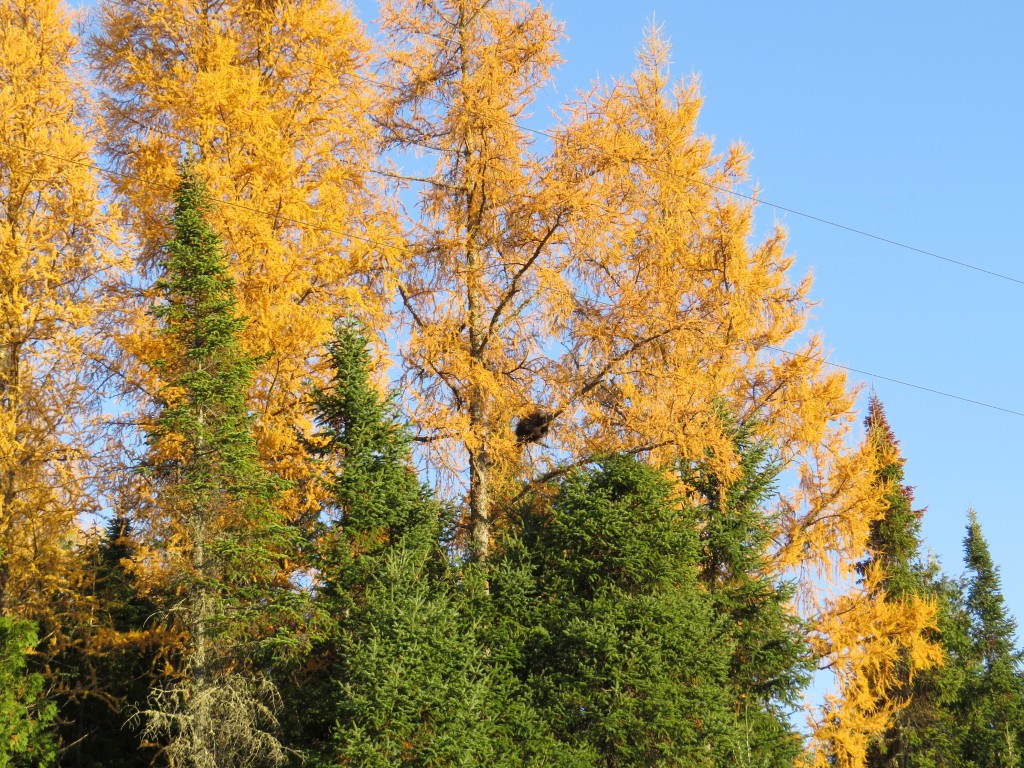
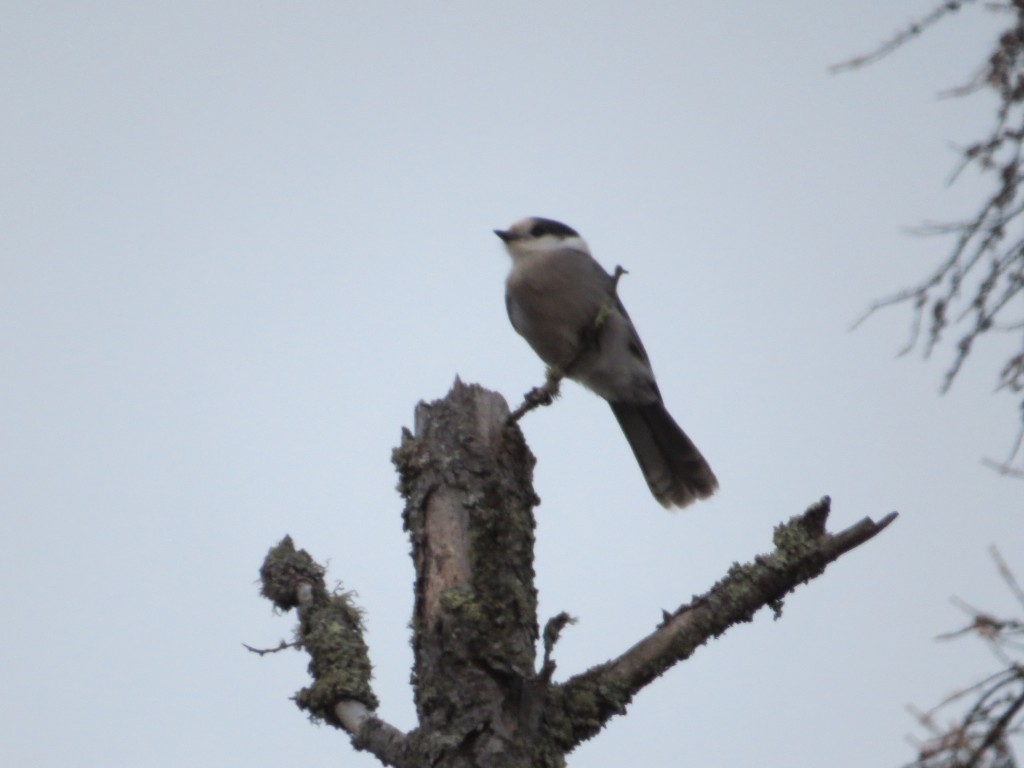
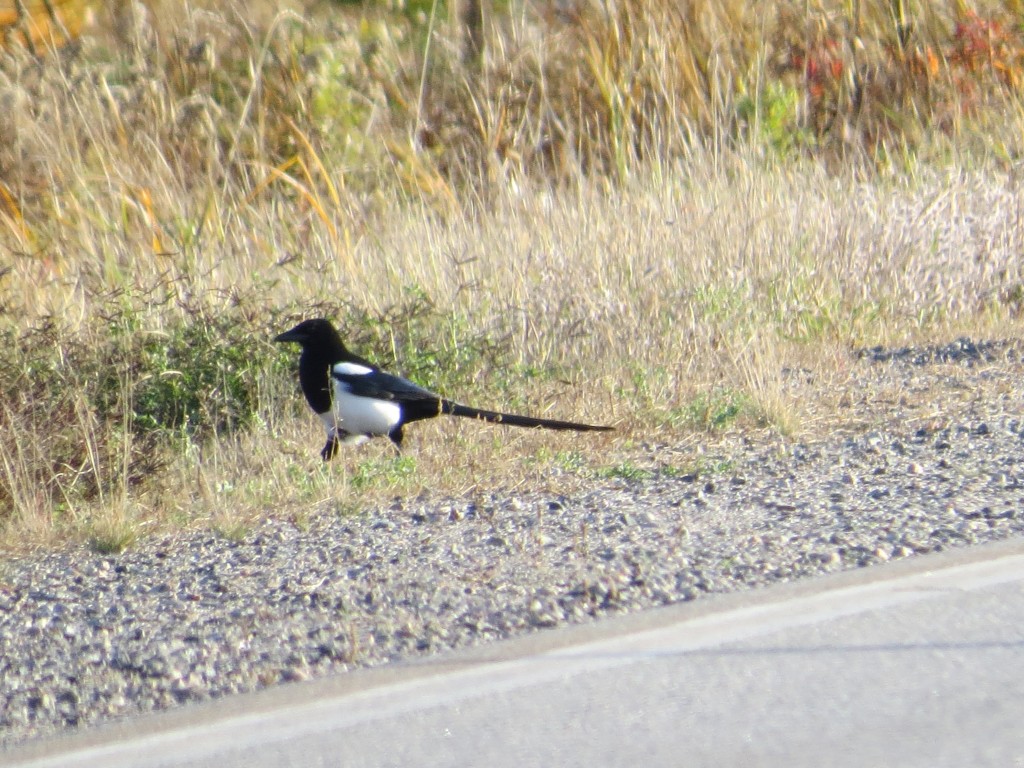 I remember when I first got into birding and being shocked that this cool bird could be found in Minnesota since I had never seen one in my life up to that point. They are known to frequent the Sax-Zim Bog. In fact, the Bog is the furthest location to the east where this species breeds. I have seen them in the Bog and in northwestern Minnesota, but I was astounded to find them so close to where I grew up. It was hands-down the best find of the trip.
I remember when I first got into birding and being shocked that this cool bird could be found in Minnesota since I had never seen one in my life up to that point. They are known to frequent the Sax-Zim Bog. In fact, the Bog is the furthest location to the east where this species breeds. I have seen them in the Bog and in northwestern Minnesota, but I was astounded to find them so close to where I grew up. It was hands-down the best find of the trip.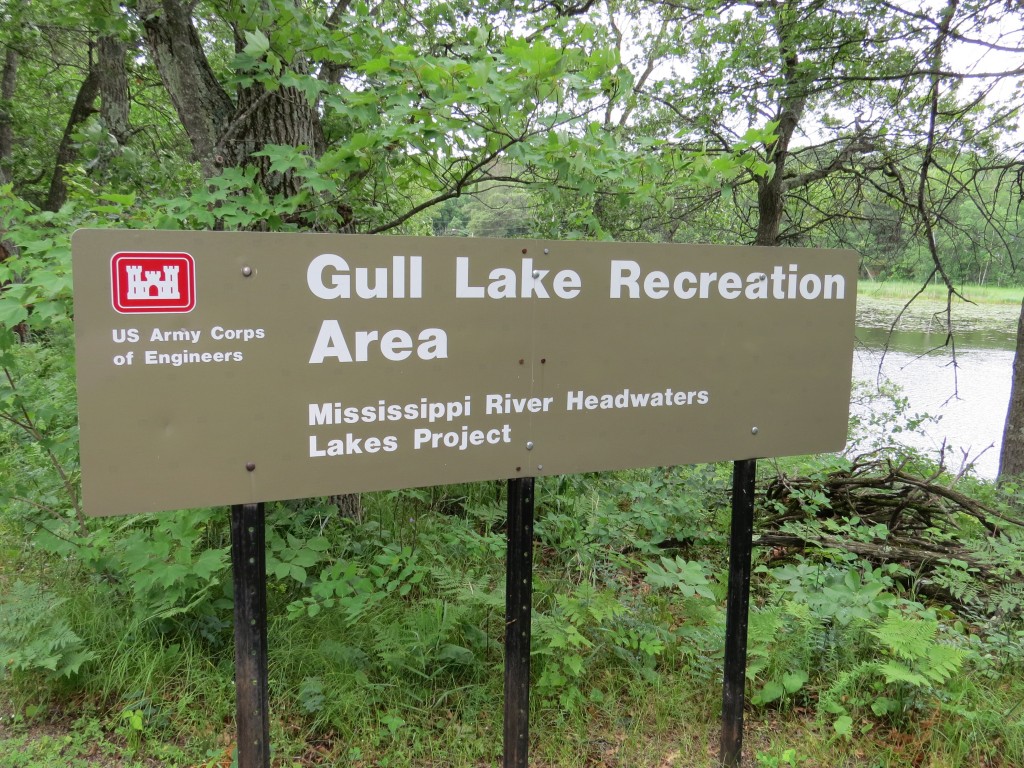
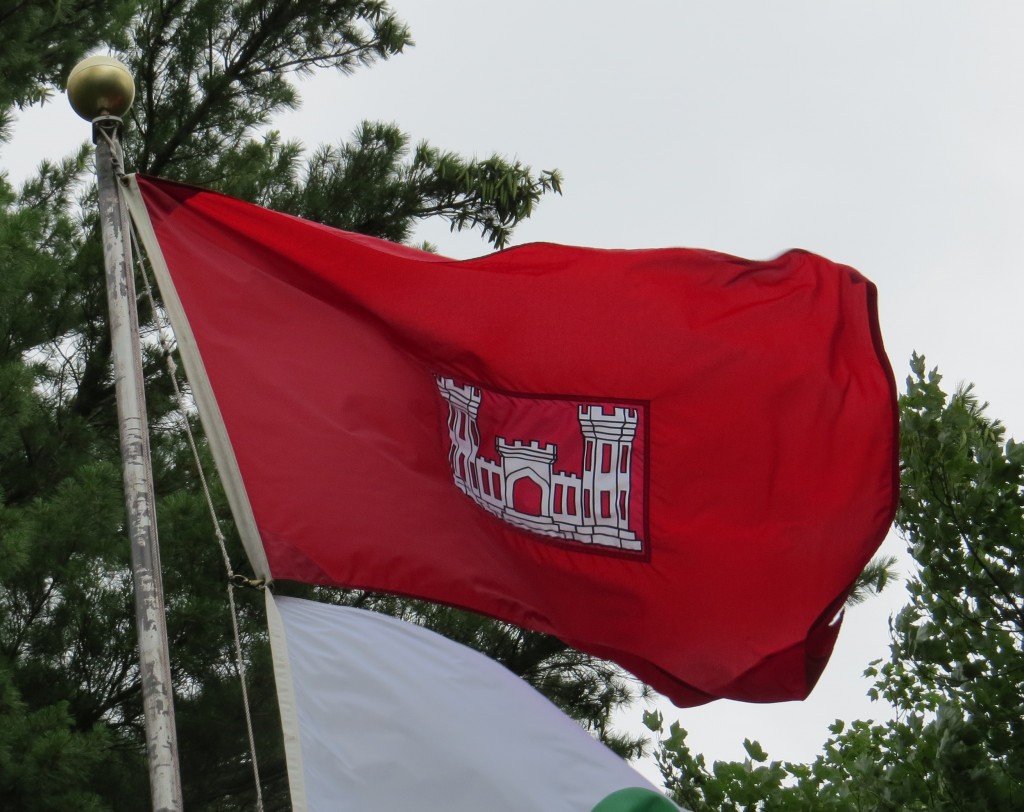

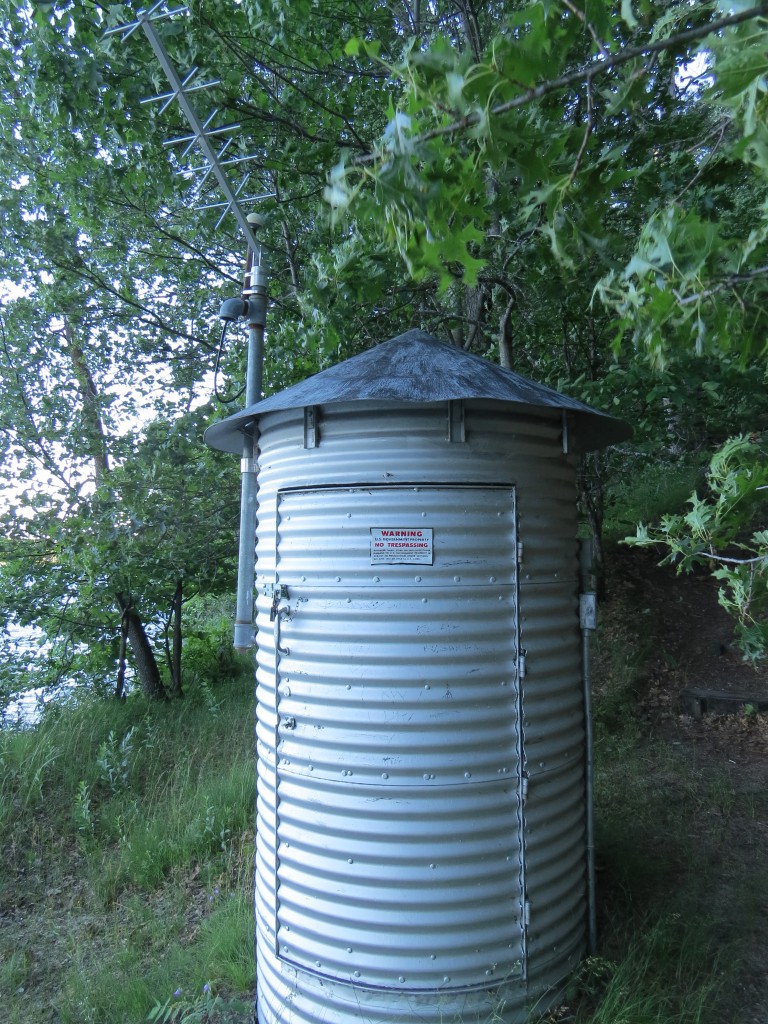
 This particular warbler has class, choosing the nicest, tallest White Pine right by those government buildings to call his home.
This particular warbler has class, choosing the nicest, tallest White Pine right by those government buildings to call his home.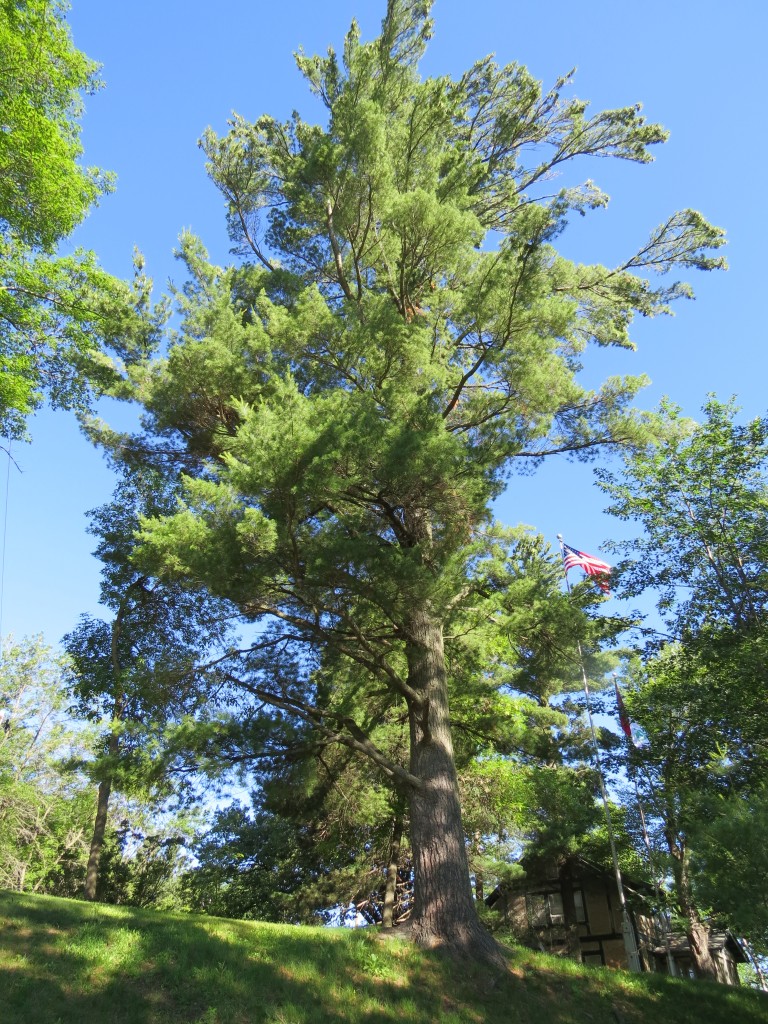
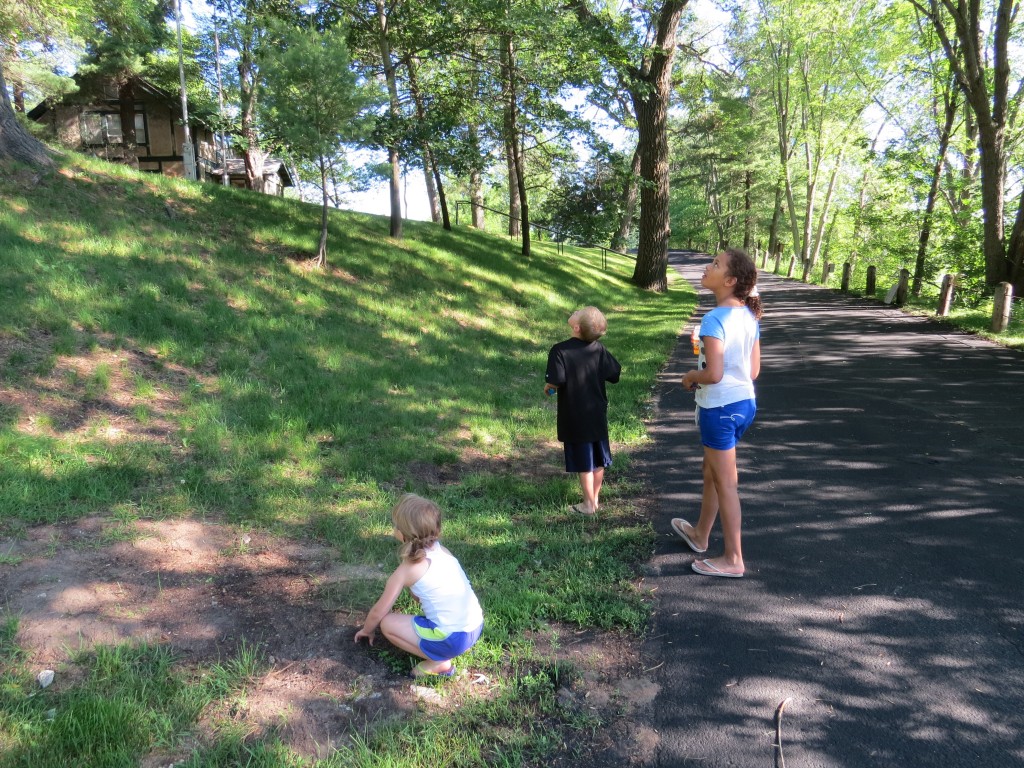
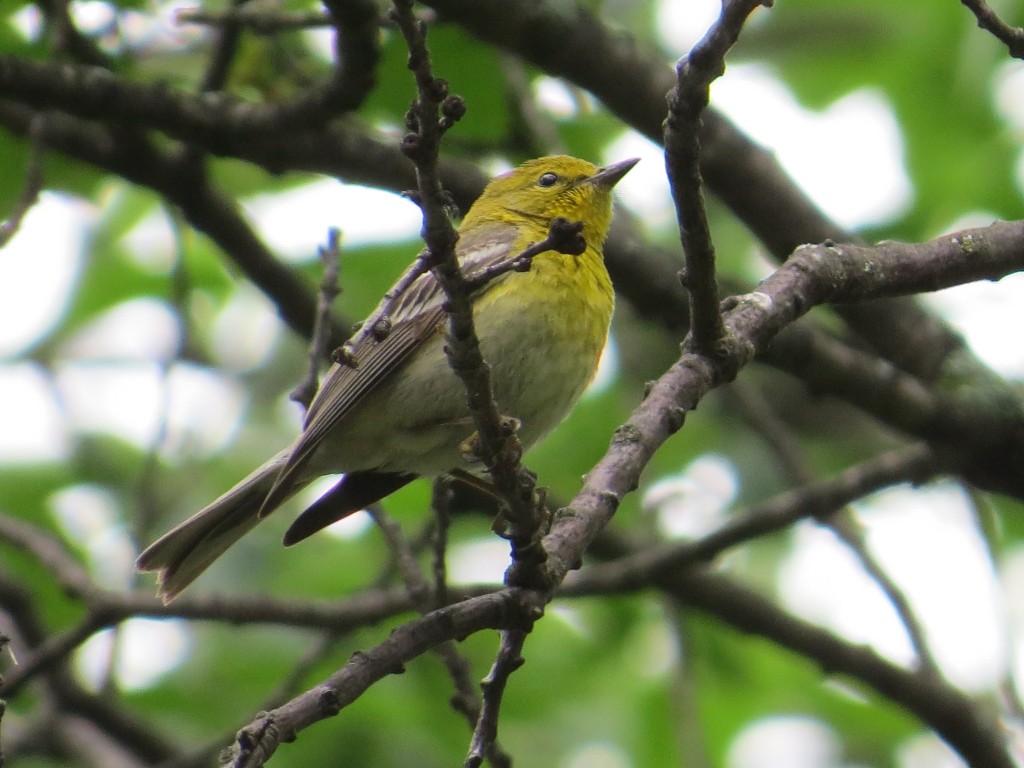
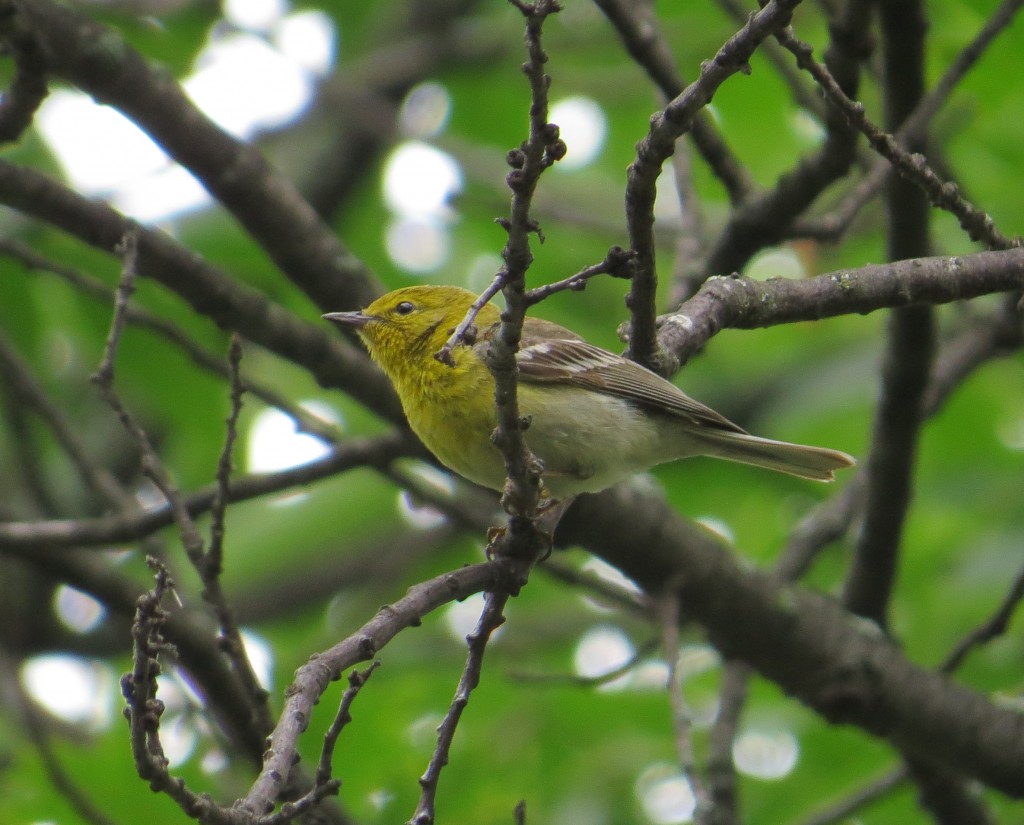 I spent a lot of time with this warbler observing and photographing it. When there is no pressure to find a life bird, I really enjoy spending time watching and photographing a particular species that I enjoy. It was fun to watch this guy as he sang his heart out constantly, shaking his whole body with each song. I really like their trilling song which is a higher, sweeter version of a Chipping Sparrow’s song.
I spent a lot of time with this warbler observing and photographing it. When there is no pressure to find a life bird, I really enjoy spending time watching and photographing a particular species that I enjoy. It was fun to watch this guy as he sang his heart out constantly, shaking his whole body with each song. I really like their trilling song which is a higher, sweeter version of a Chipping Sparrow’s song.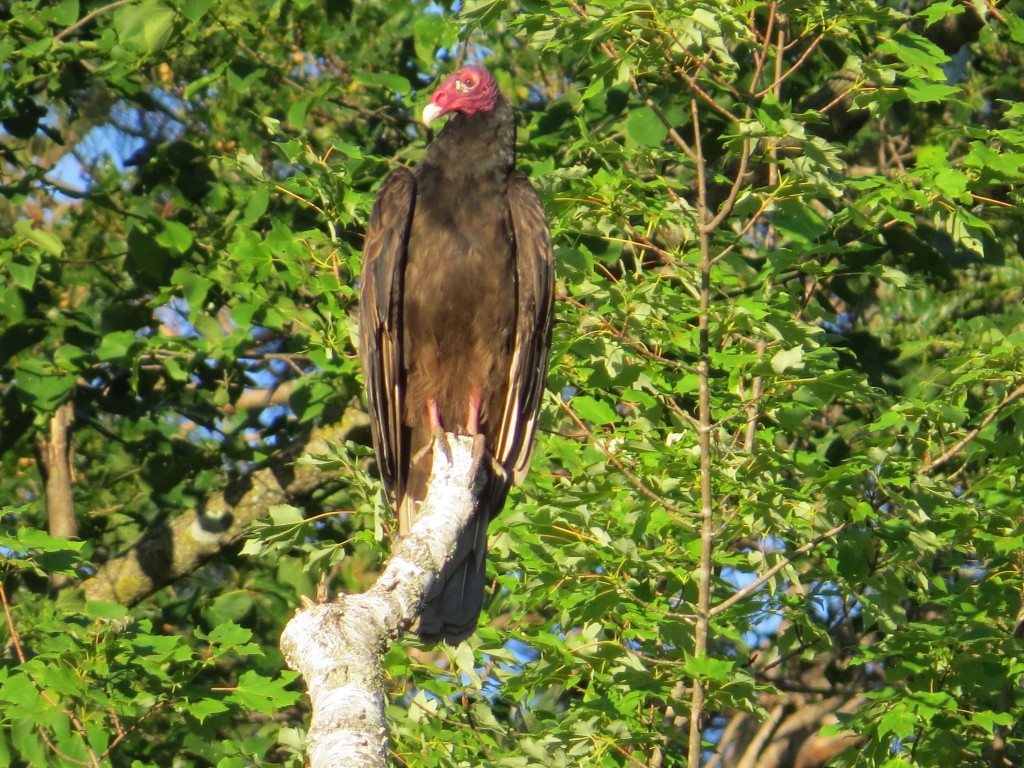
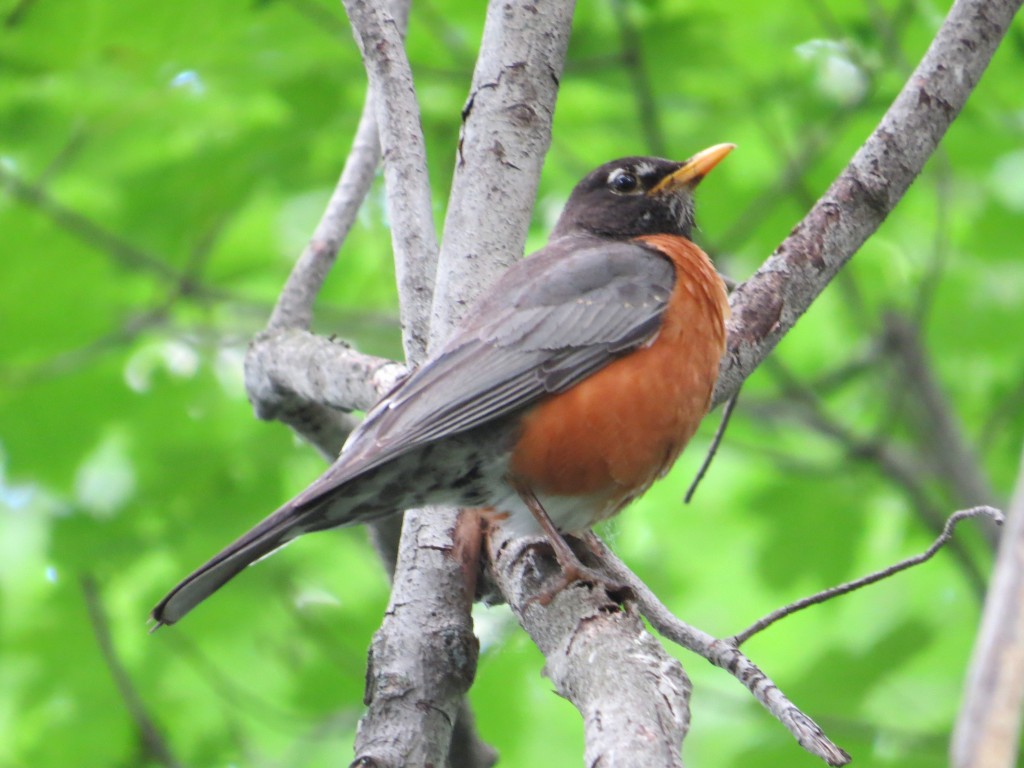
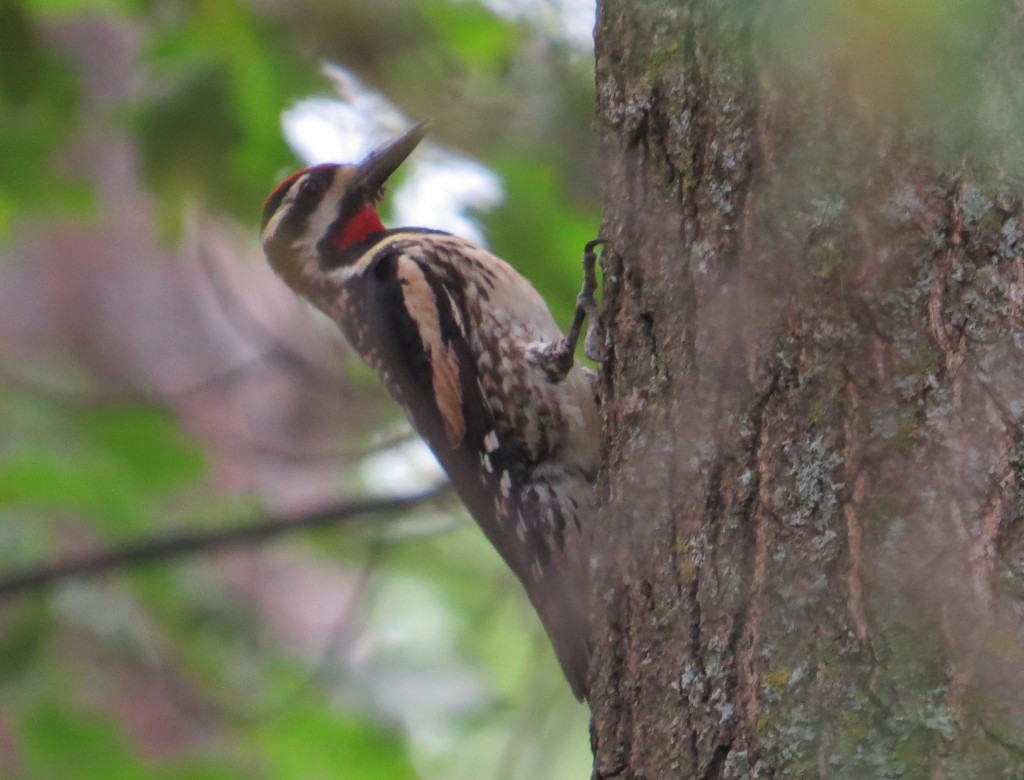
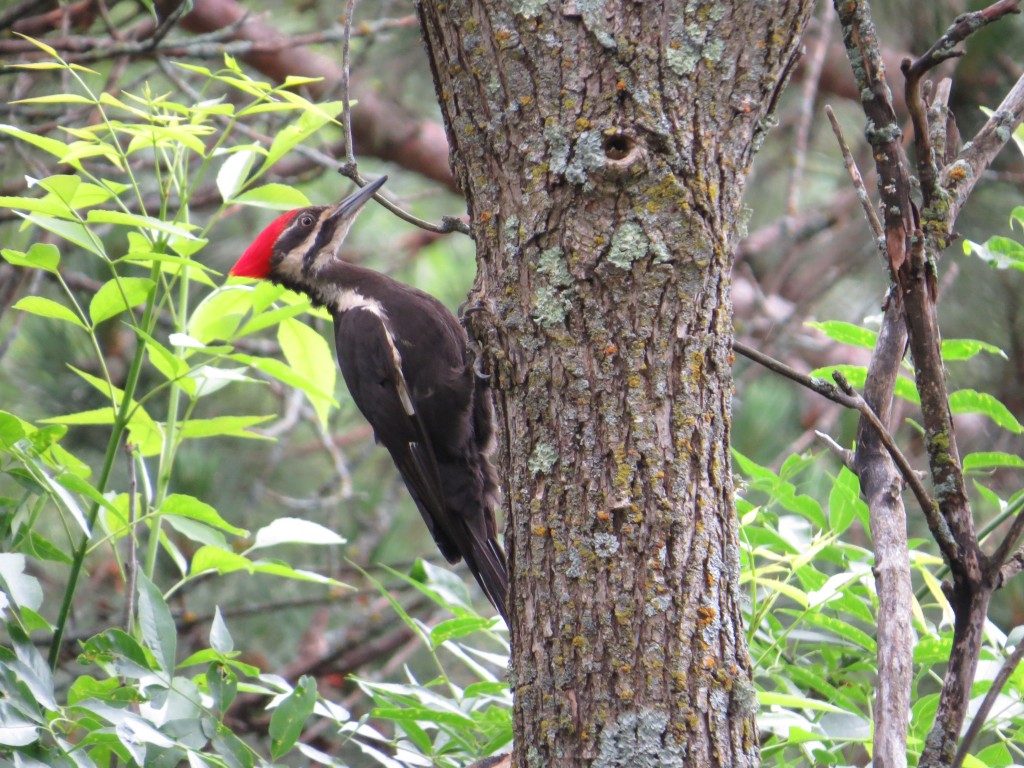
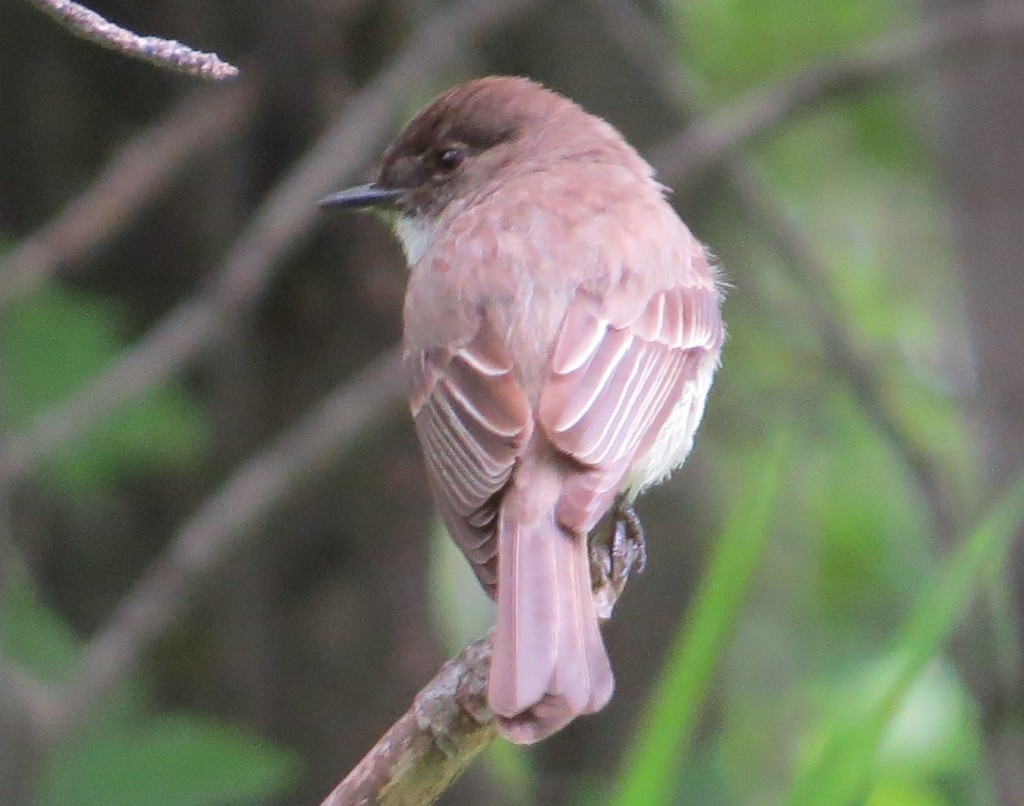
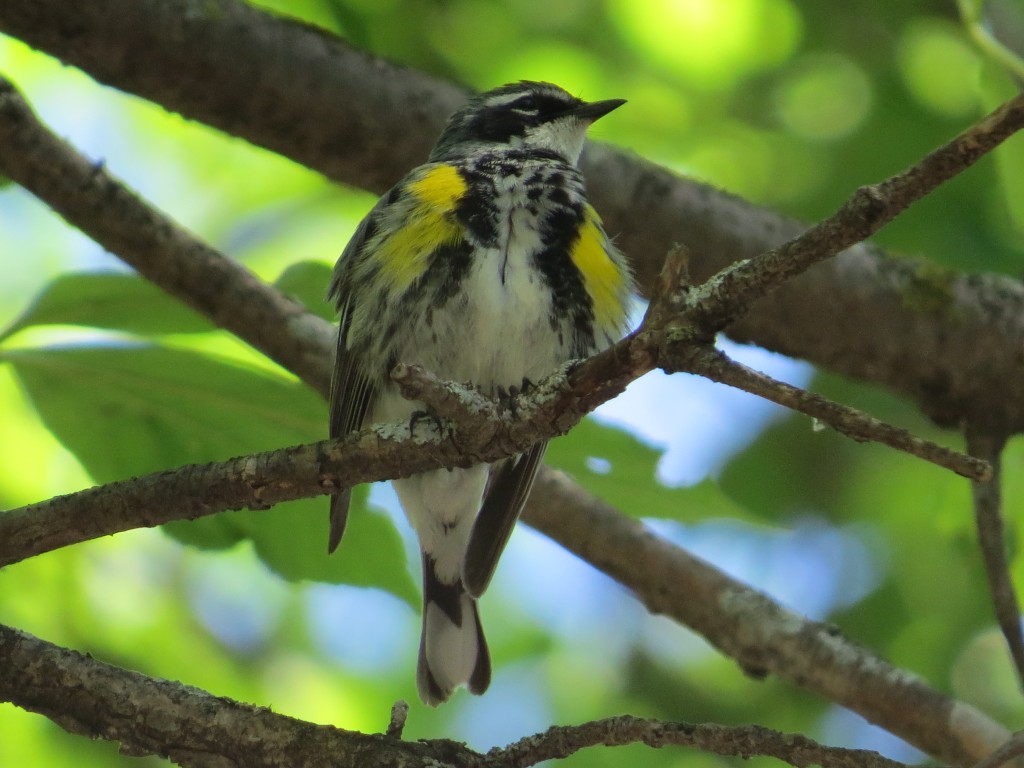

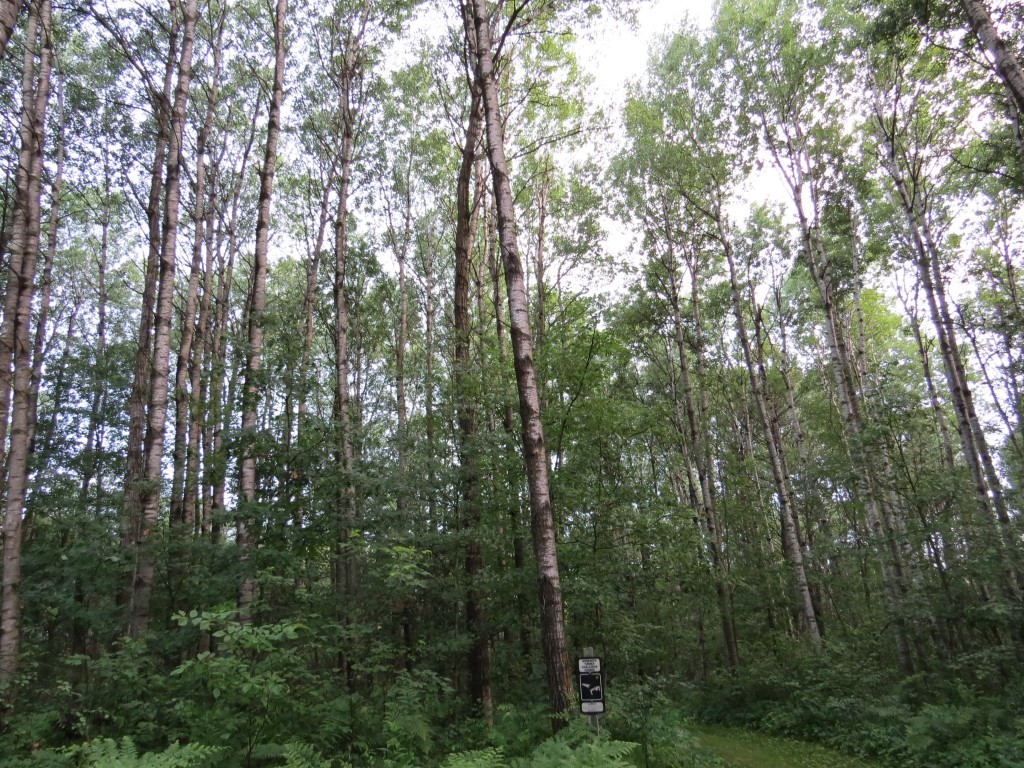
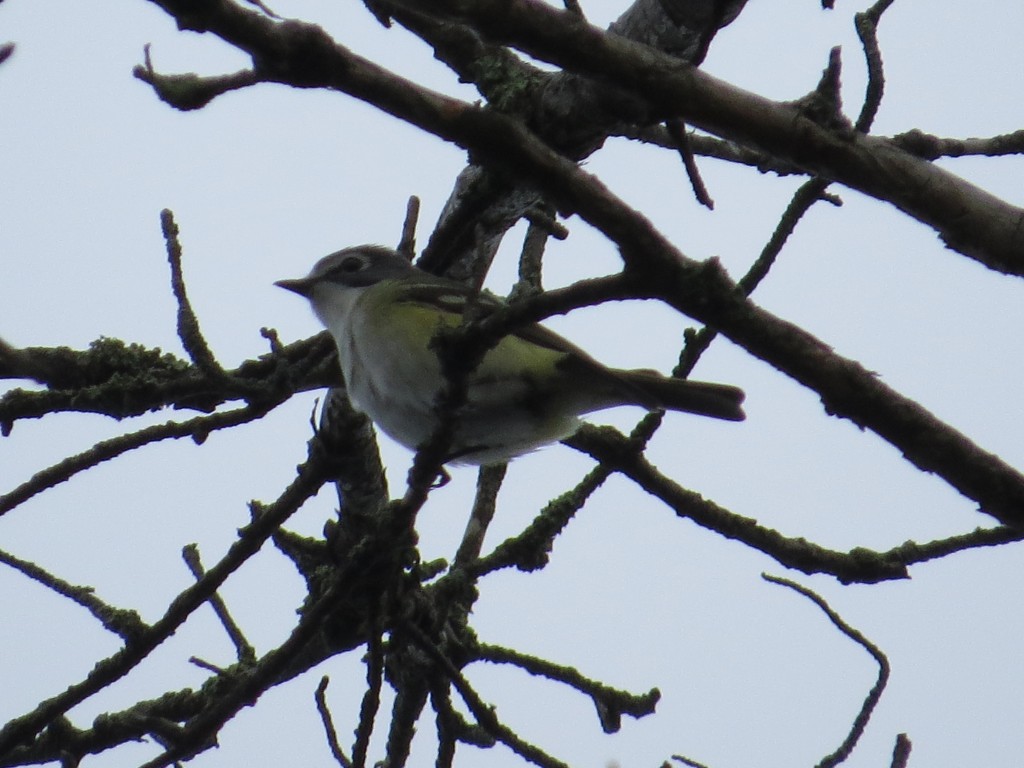
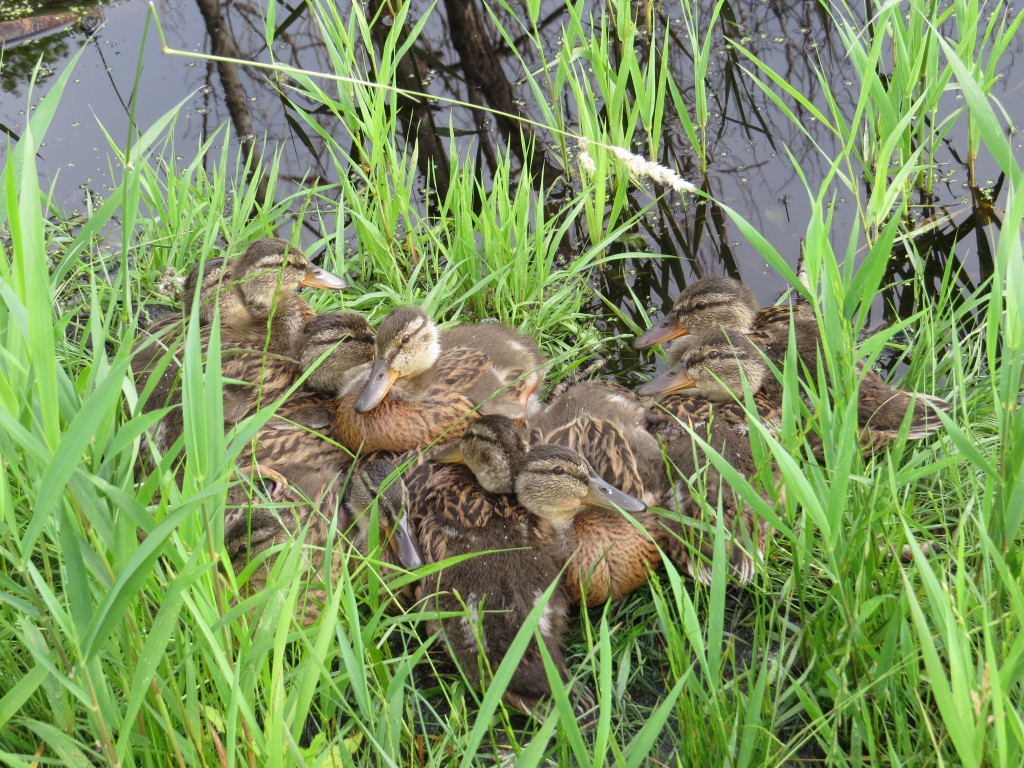
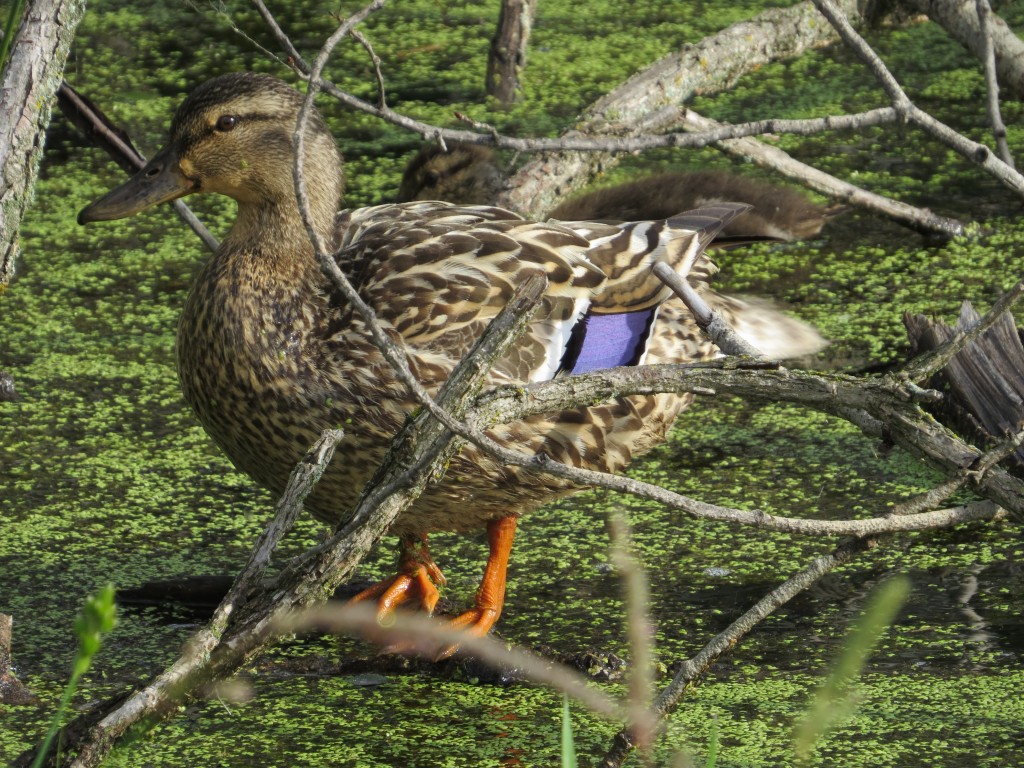
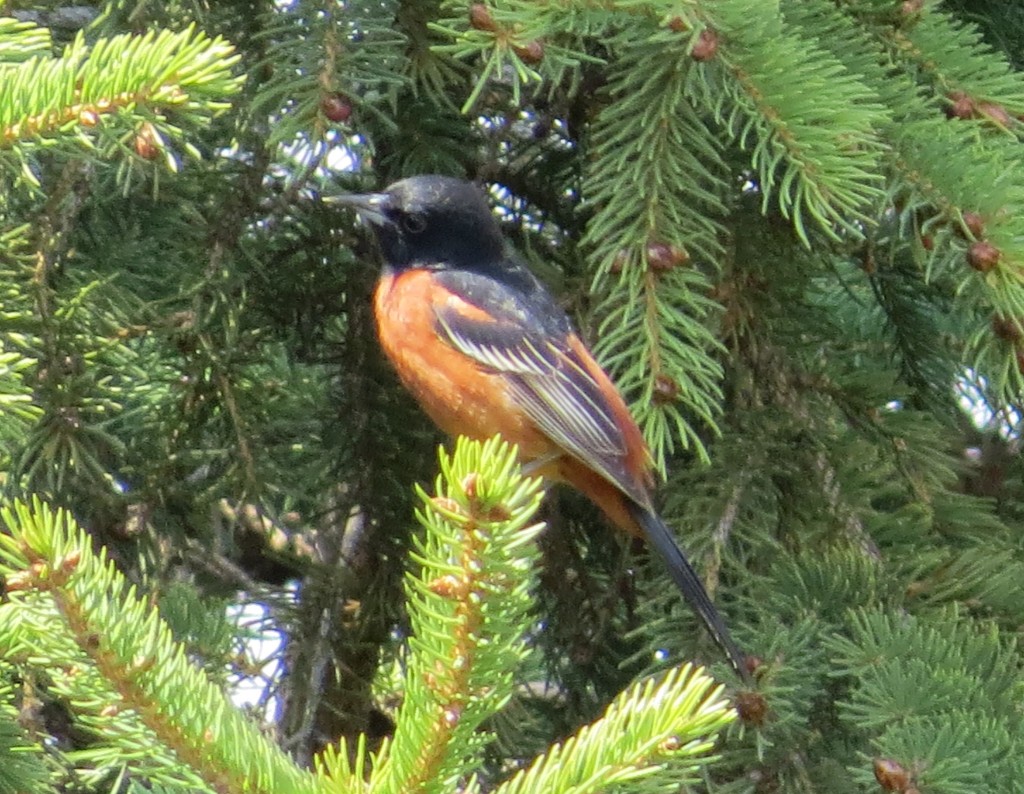
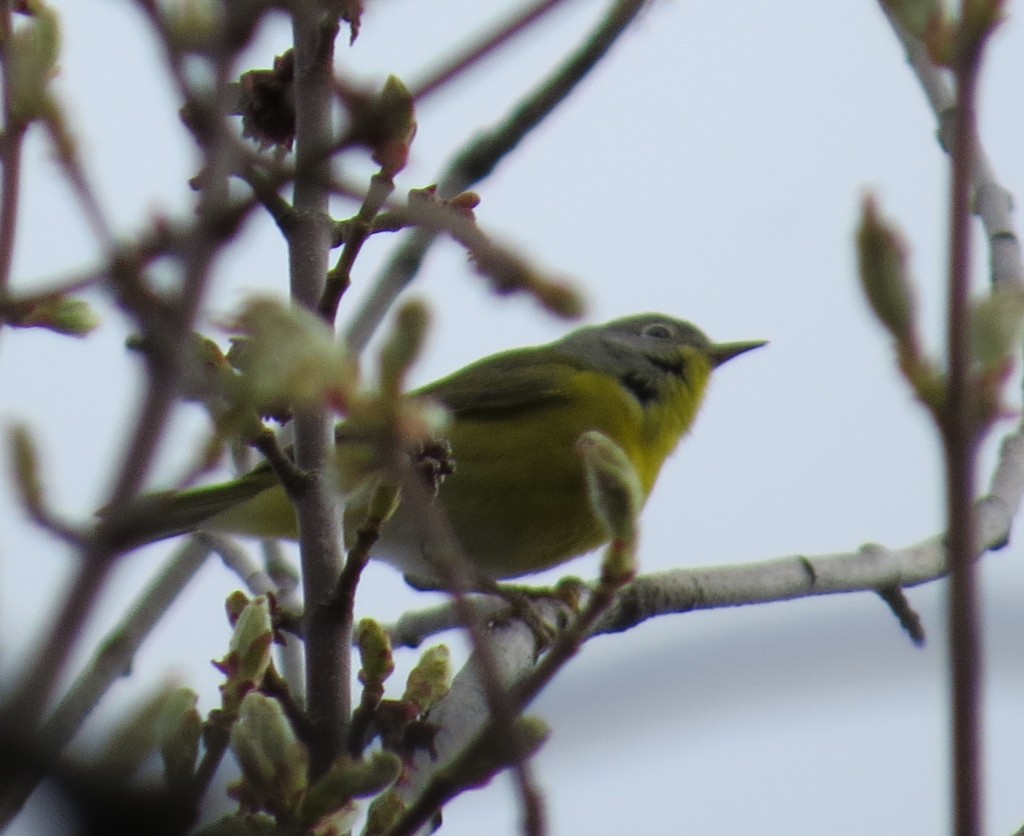
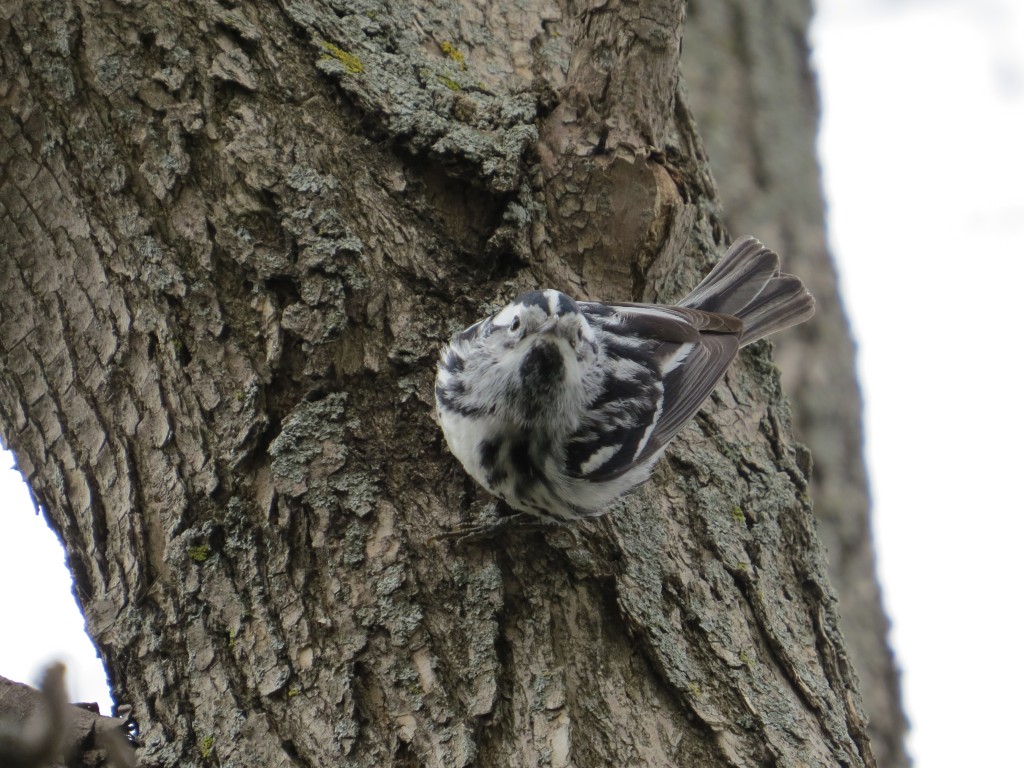
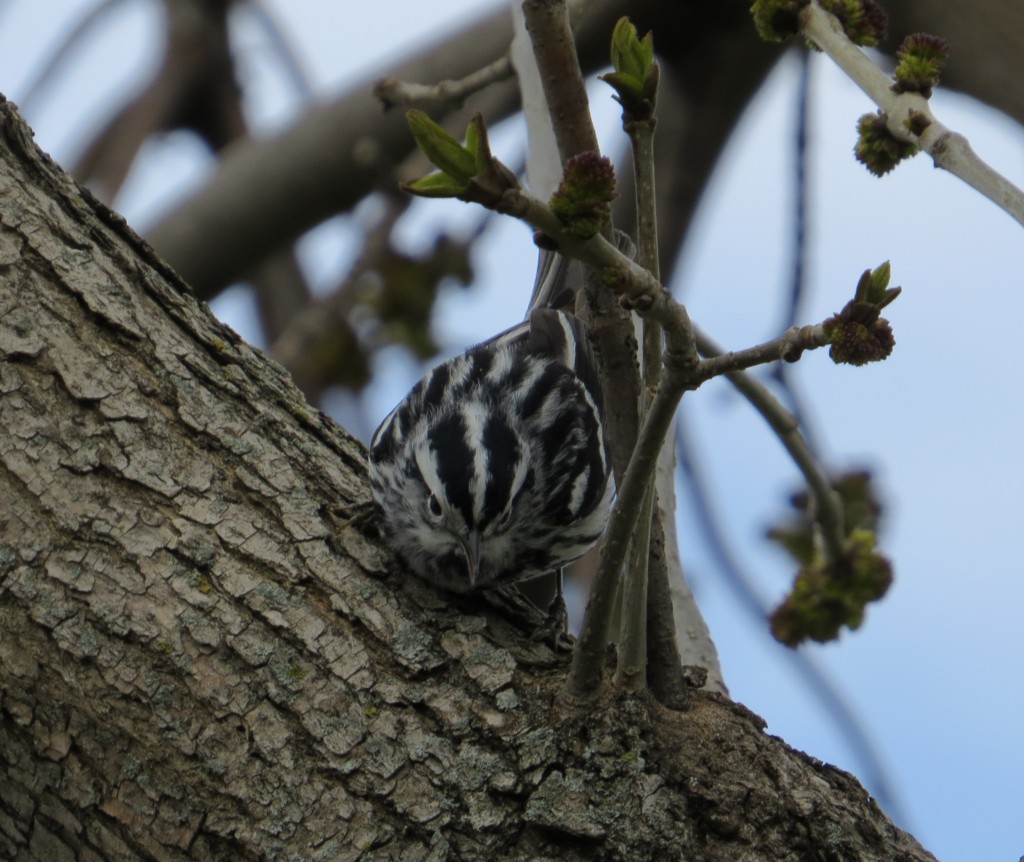 And then I noticed a third warbler, the Yellow-rumped! Though none of these warblers were terribly exciting, it was a thrill to have them invade our very own trees. I wondered what else was with this mini warbler wave, but we had to get to scout camp.
And then I noticed a third warbler, the Yellow-rumped! Though none of these warblers were terribly exciting, it was a thrill to have them invade our very own trees. I wondered what else was with this mini warbler wave, but we had to get to scout camp.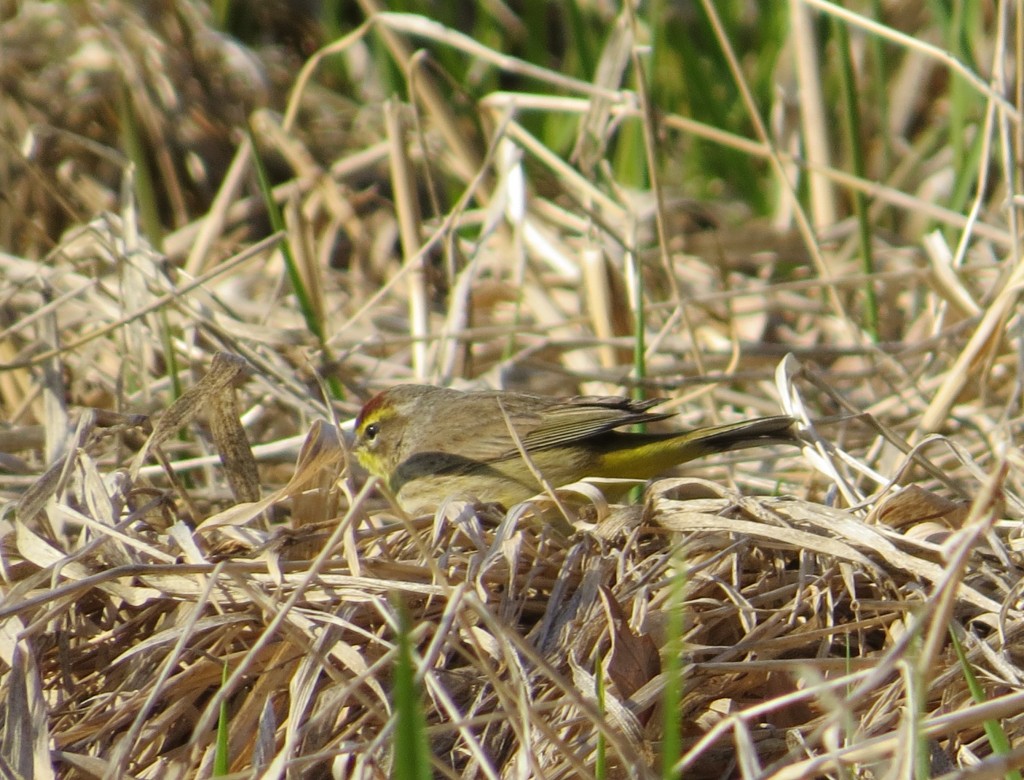
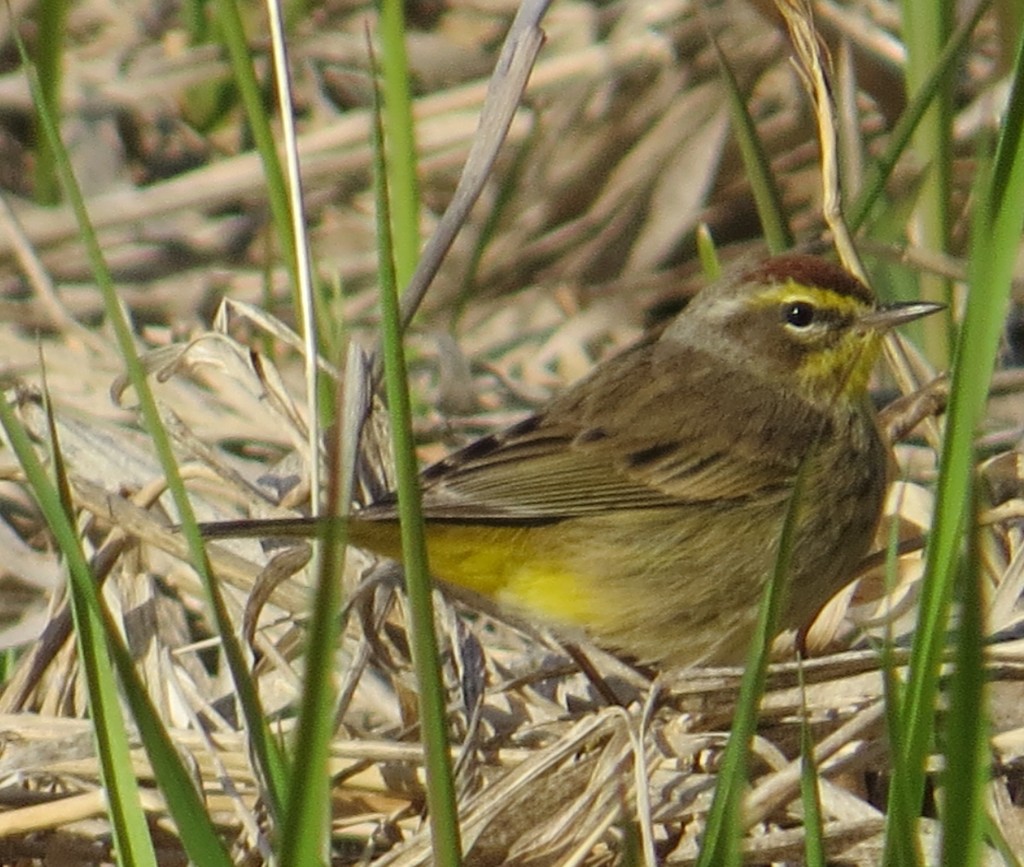
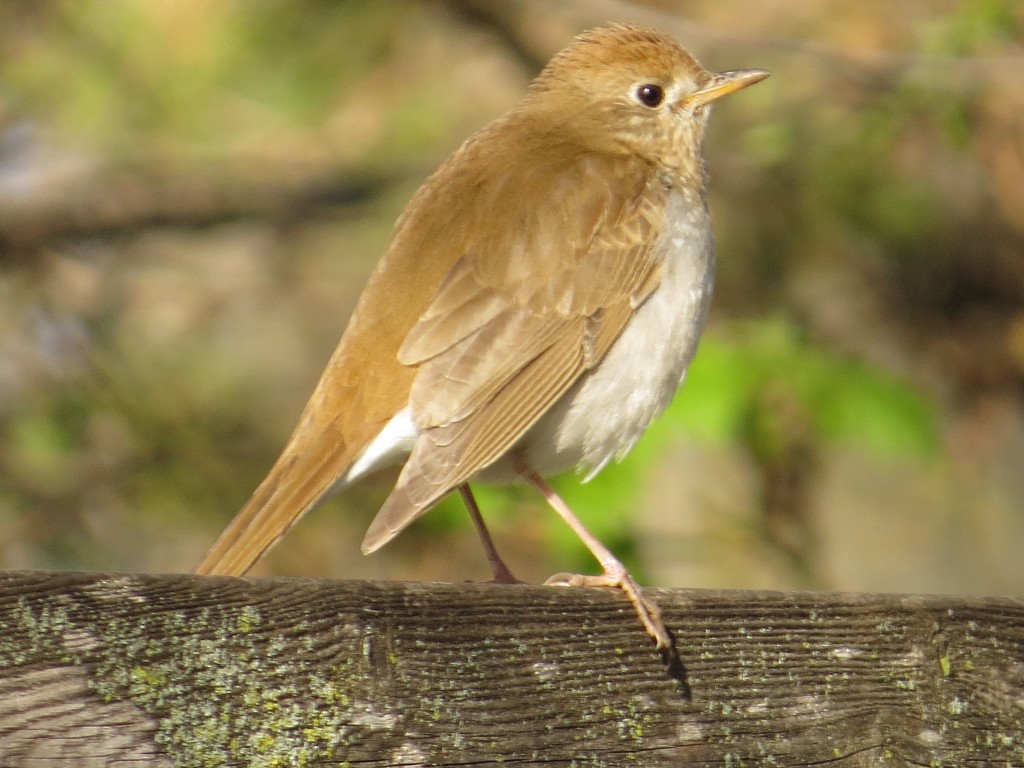
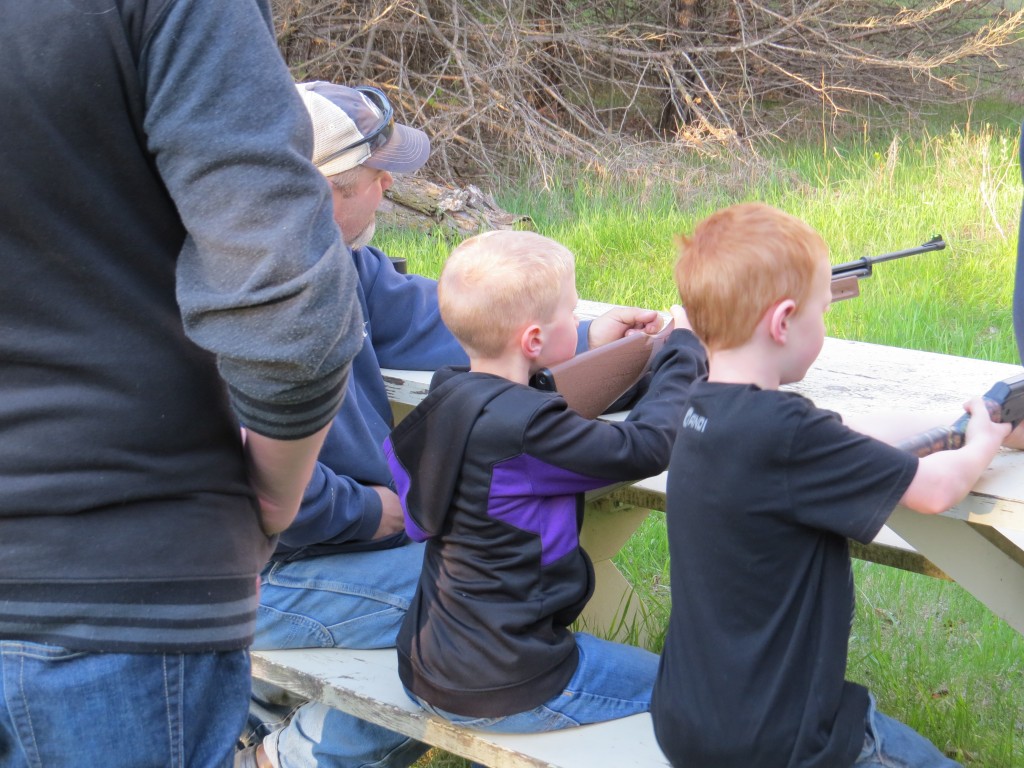
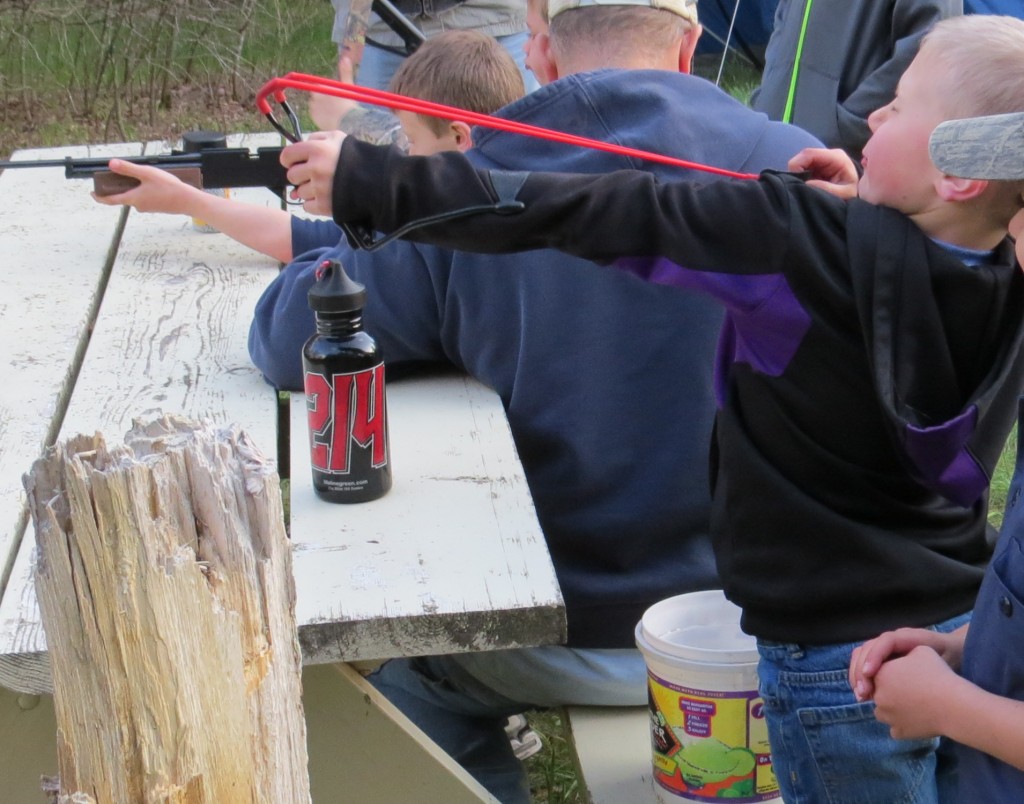
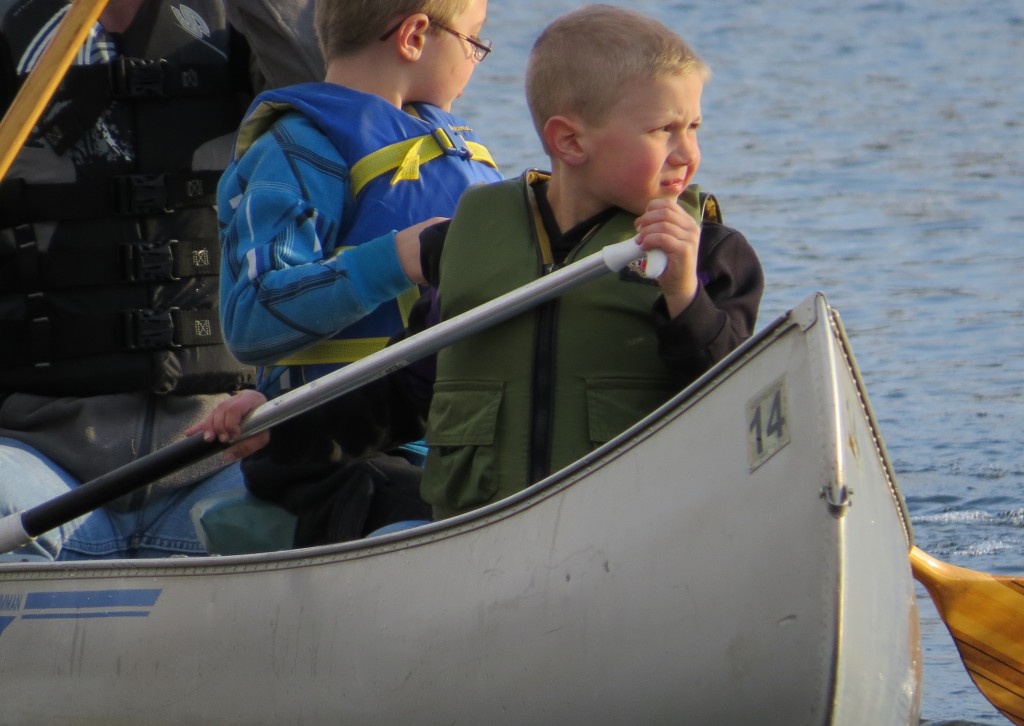
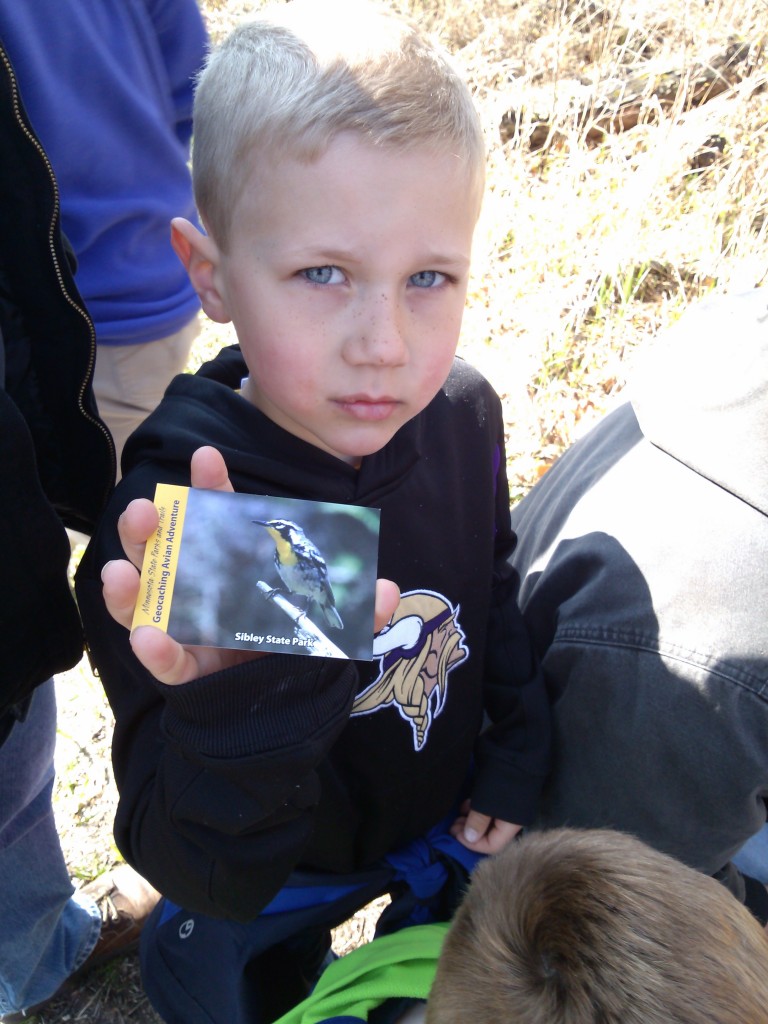
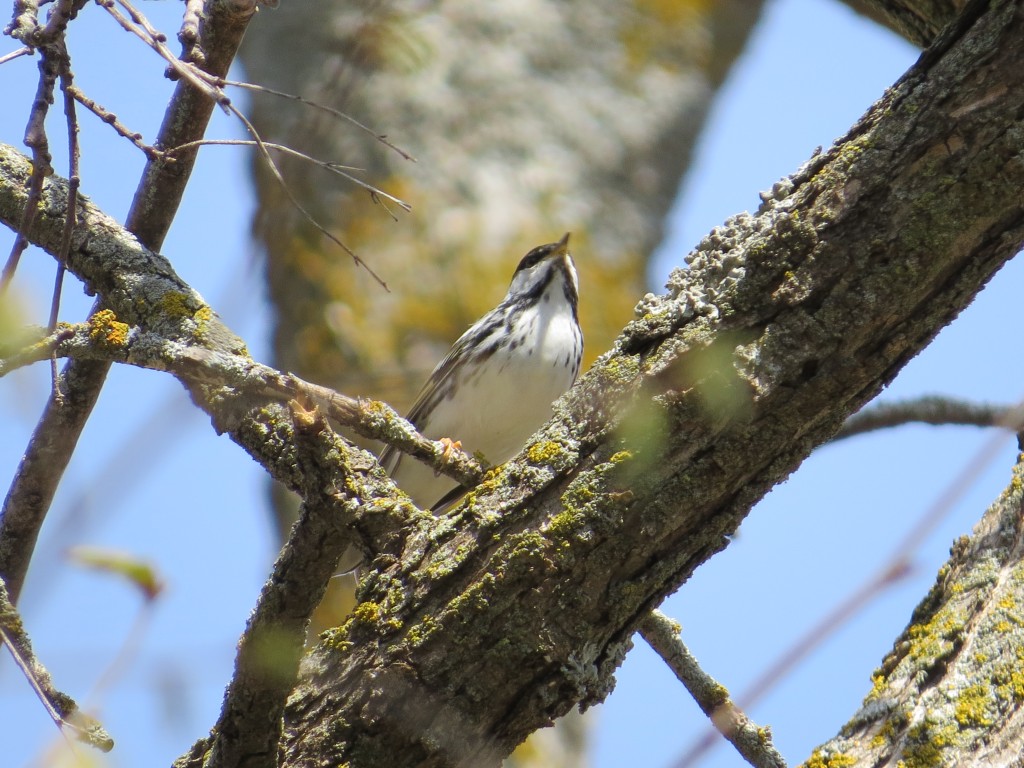
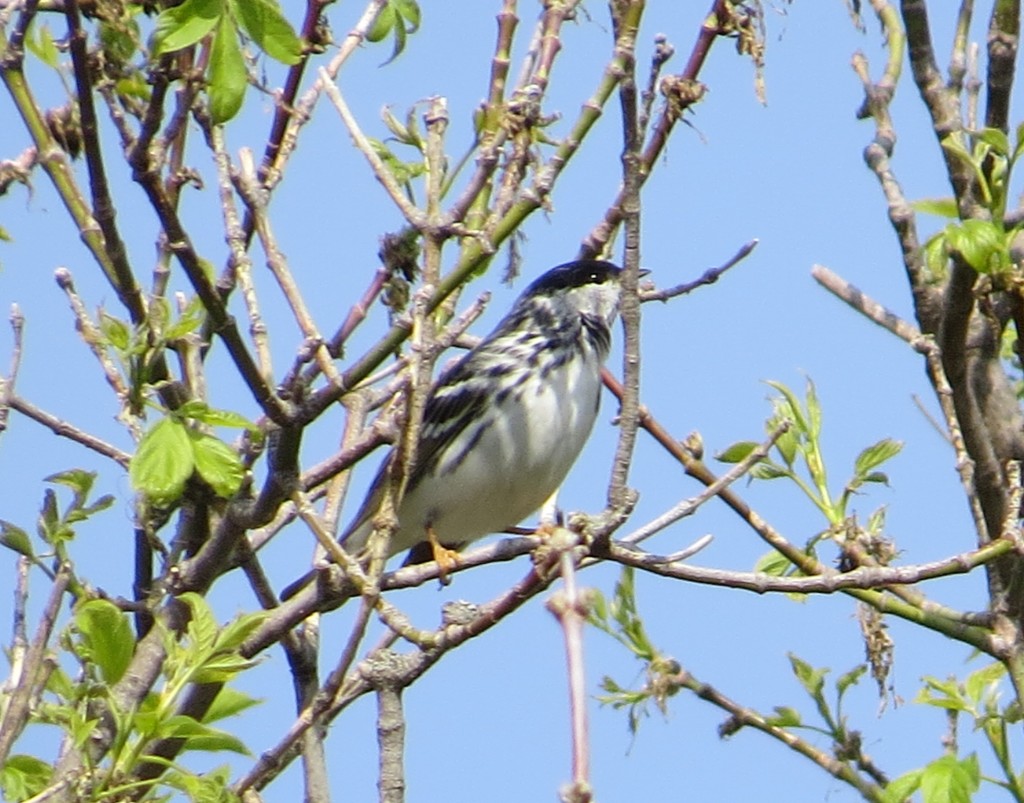
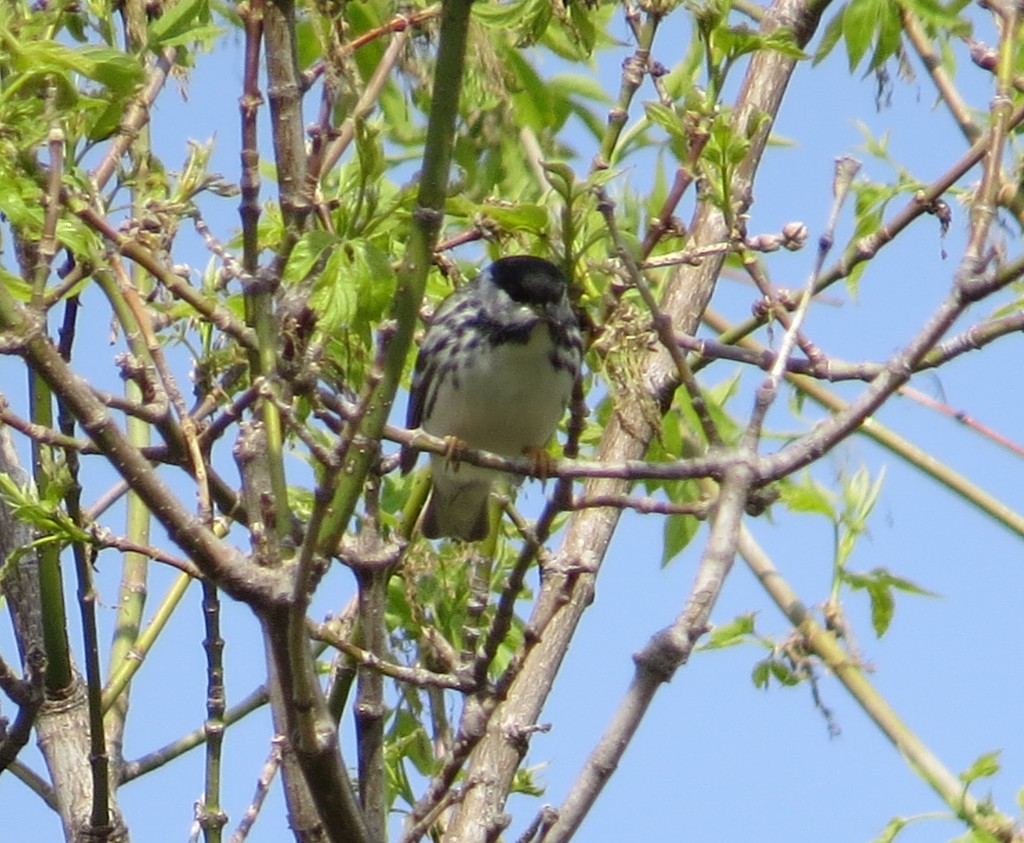
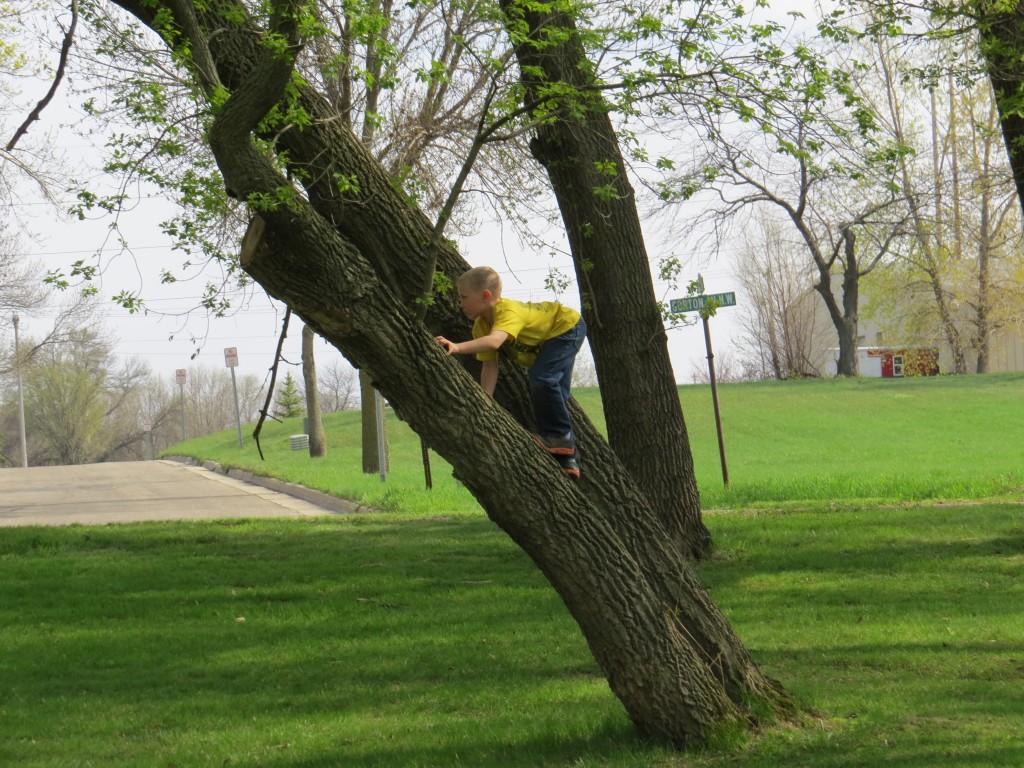
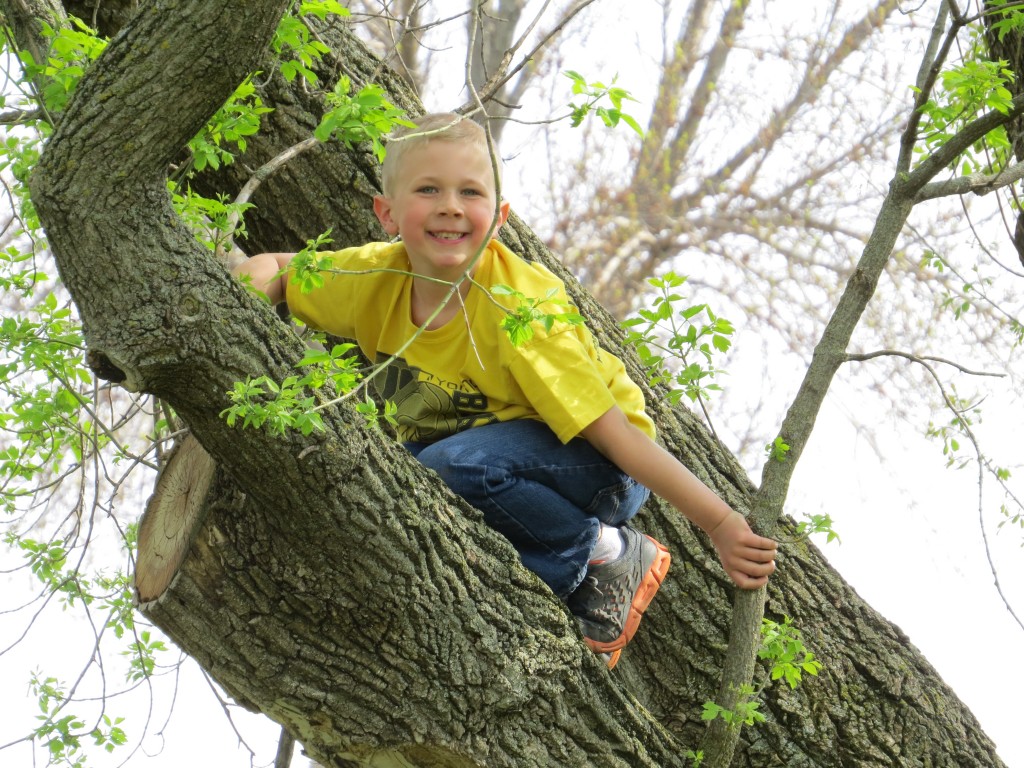
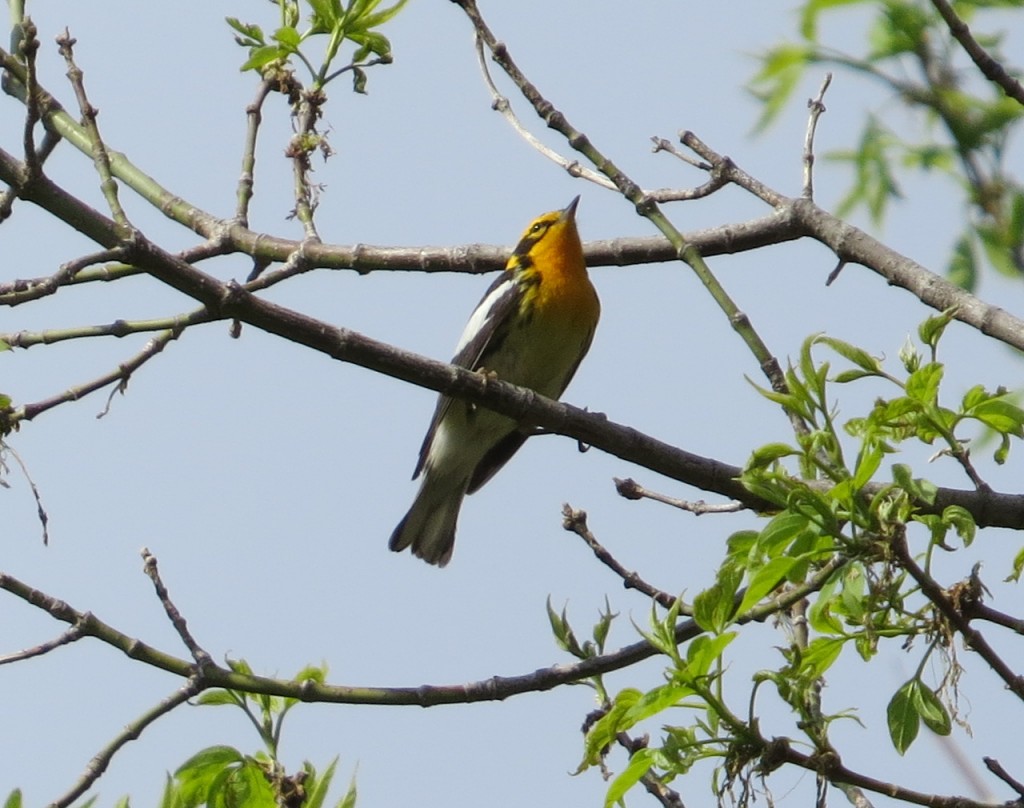
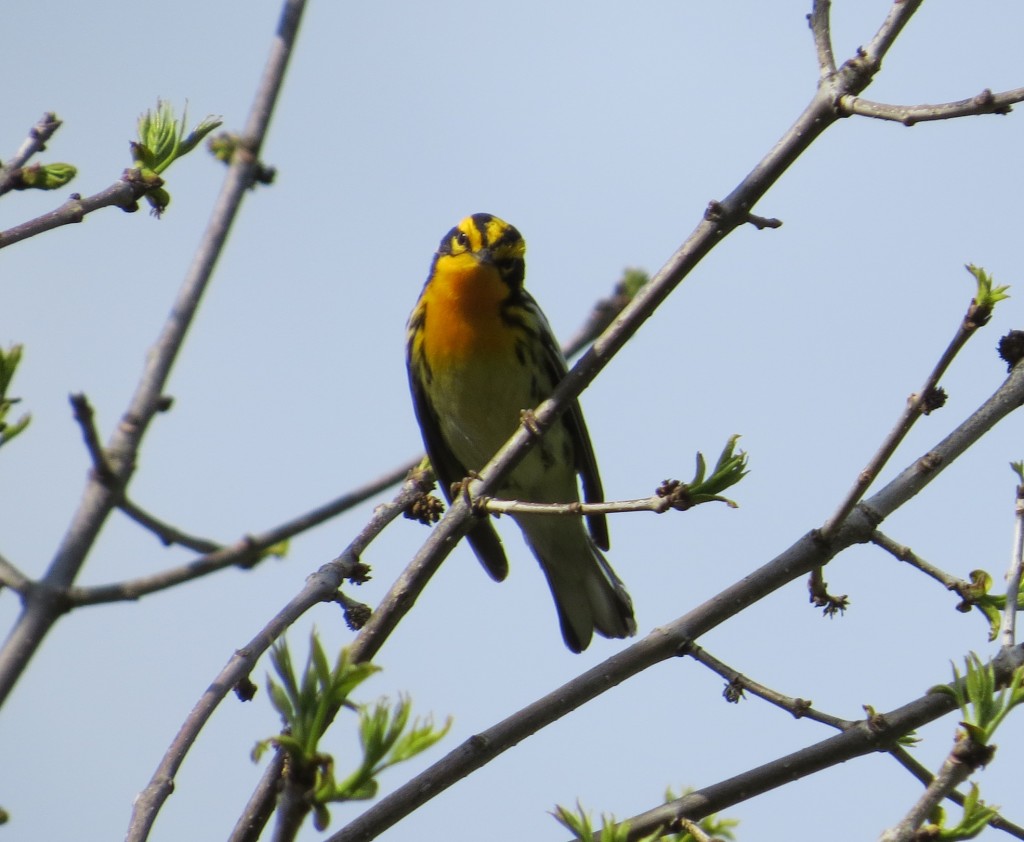 I wanted to keep photographing this bird, but it gave me the slip while I was checking on Hercules.
I wanted to keep photographing this bird, but it gave me the slip while I was checking on Hercules.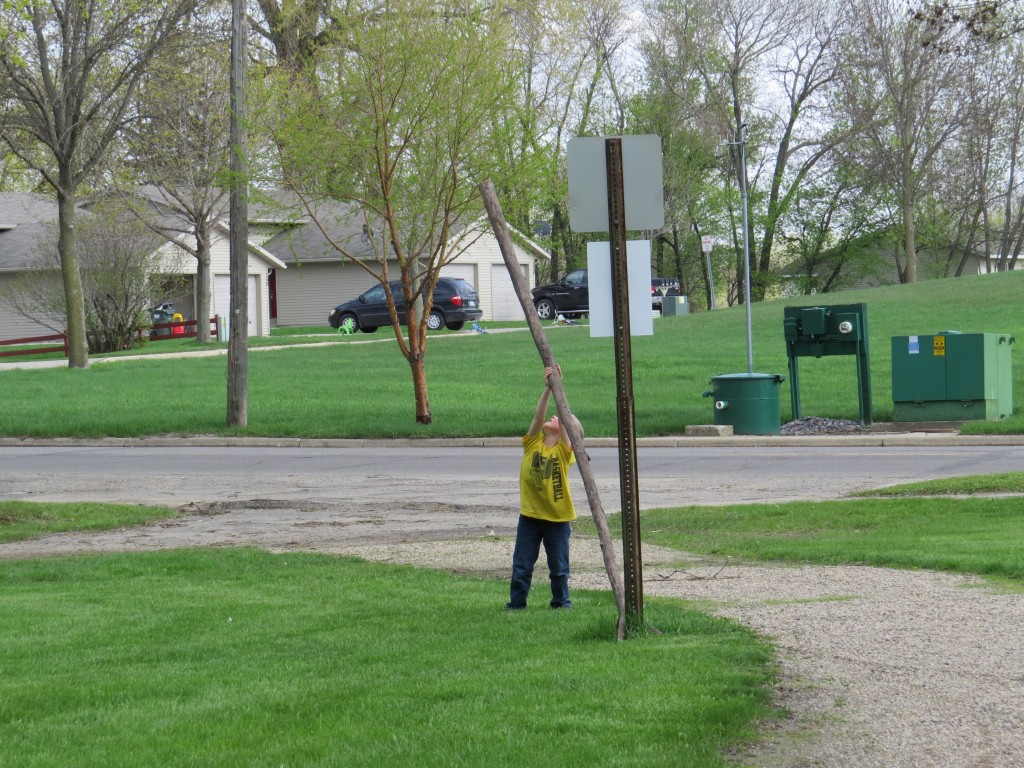 Though not as much fun as playing with dead wood, I photographed a couple of the more common warblers.
Though not as much fun as playing with dead wood, I photographed a couple of the more common warblers.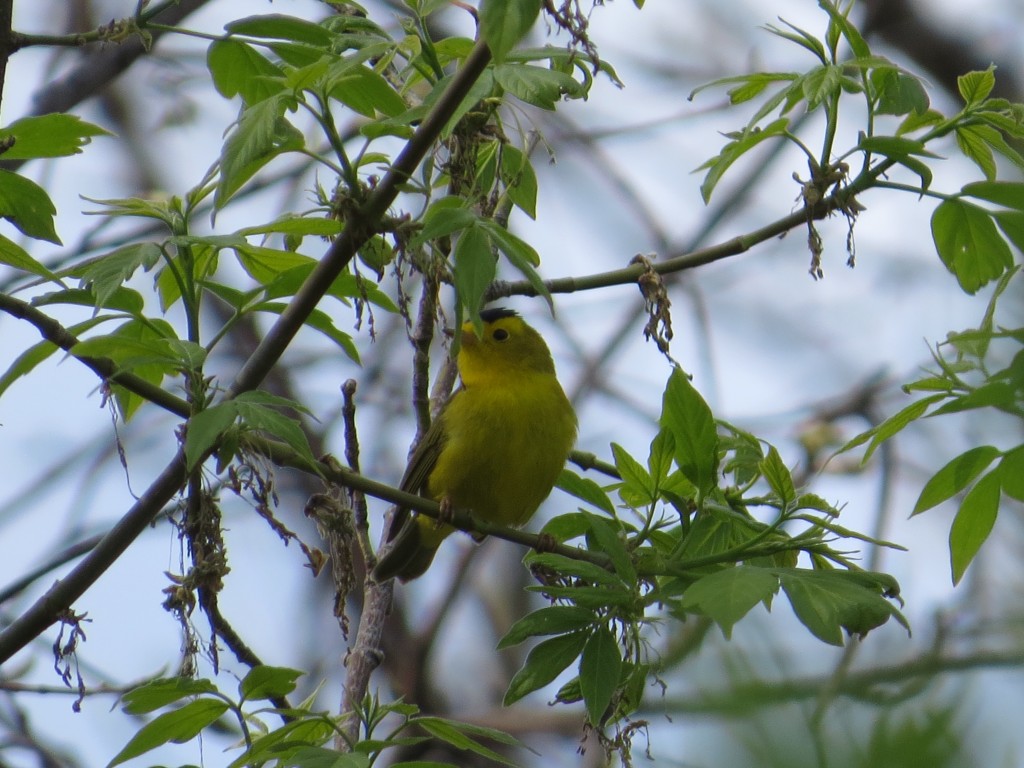
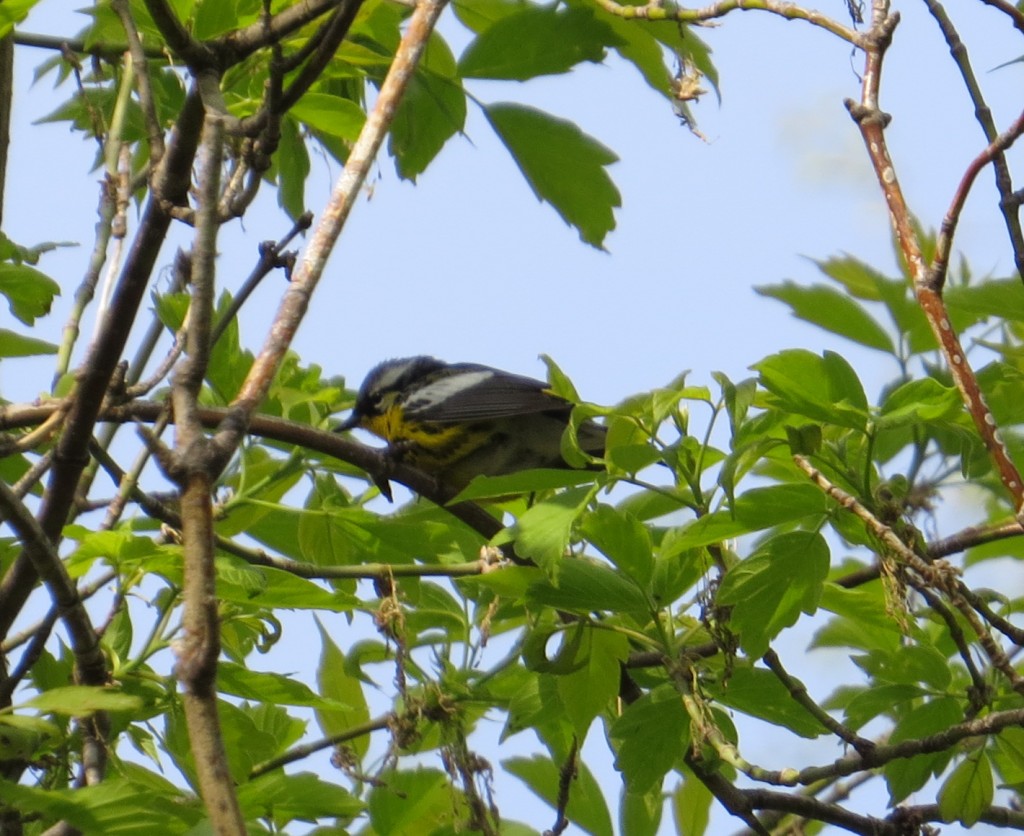
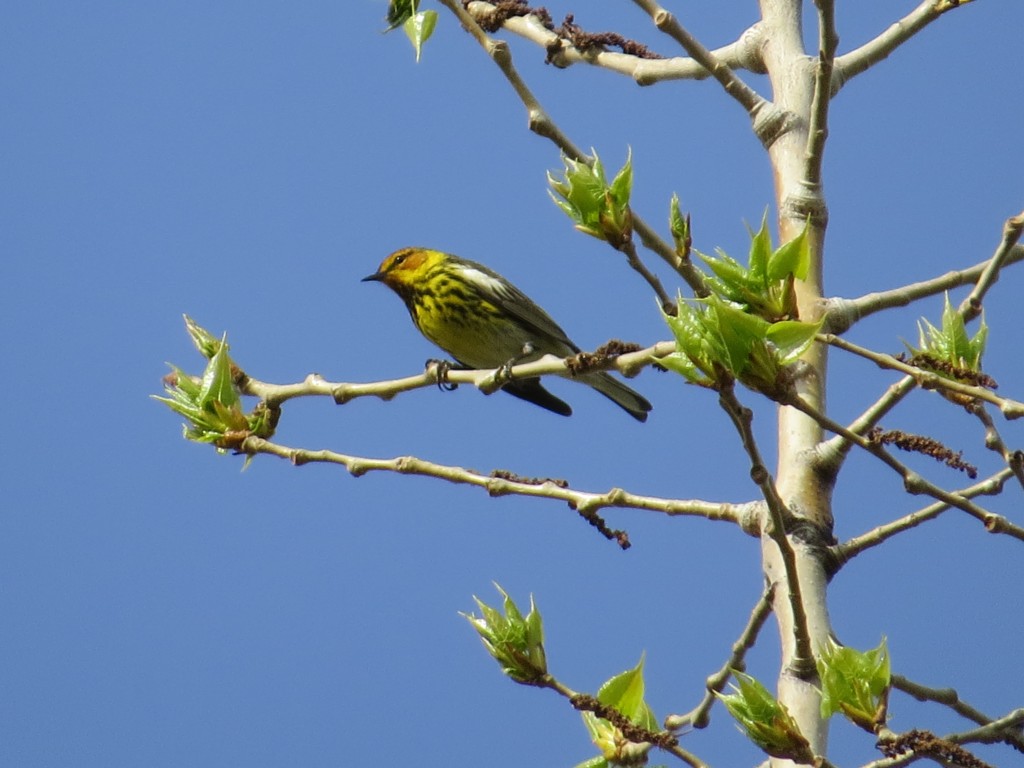
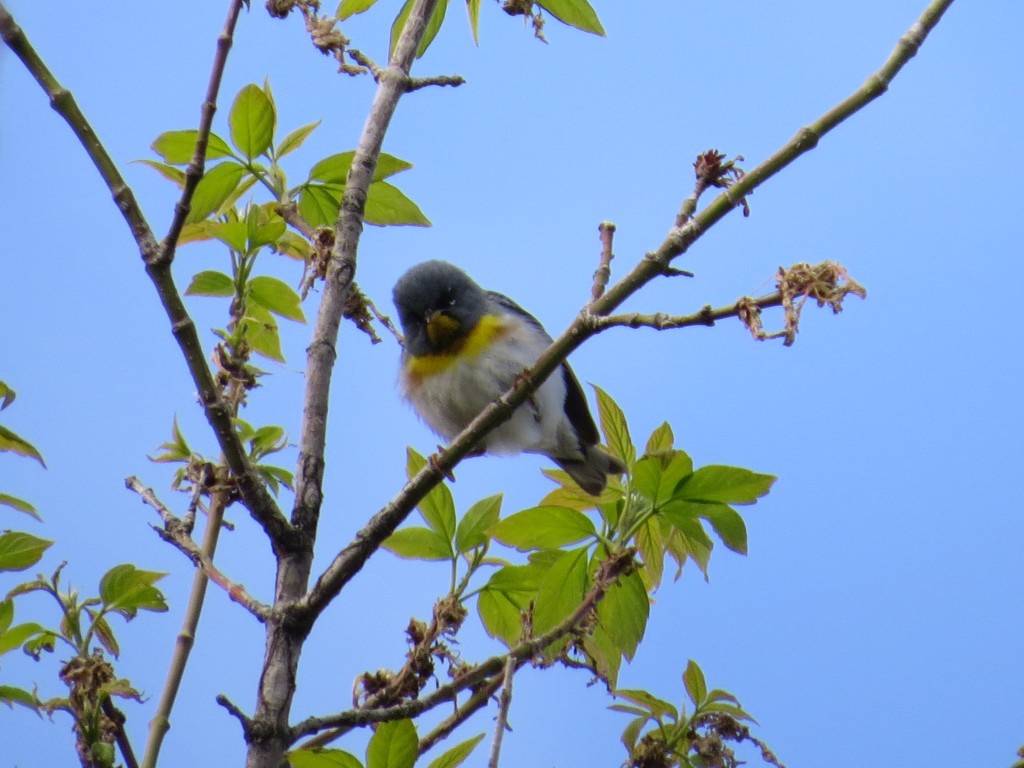
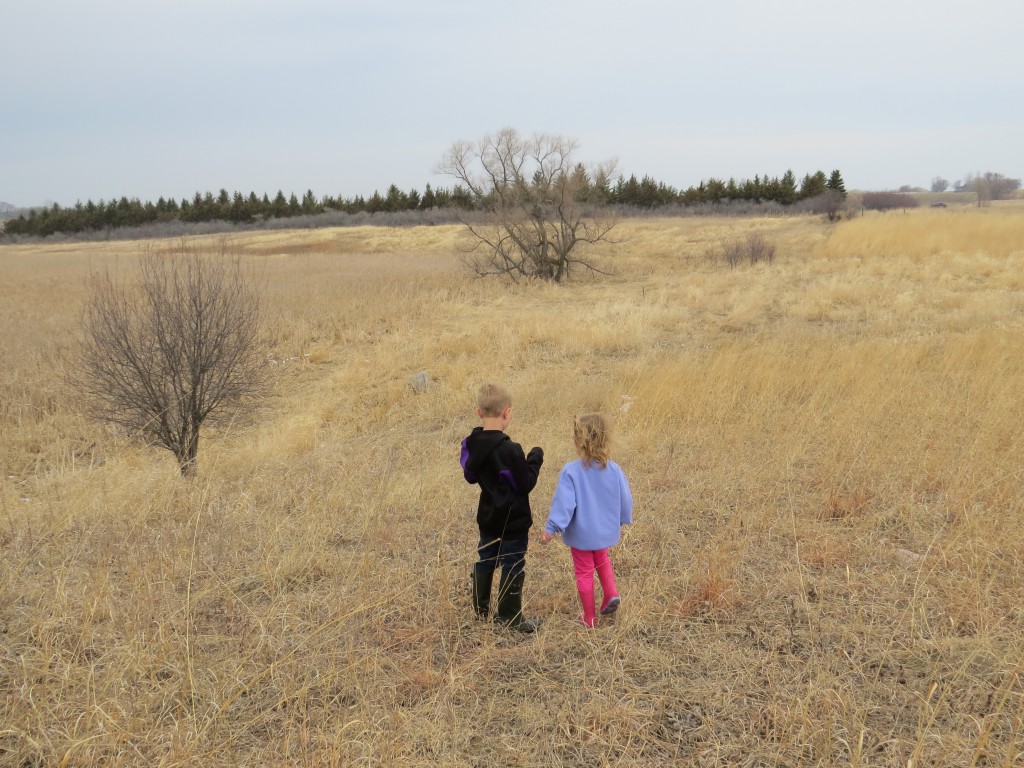
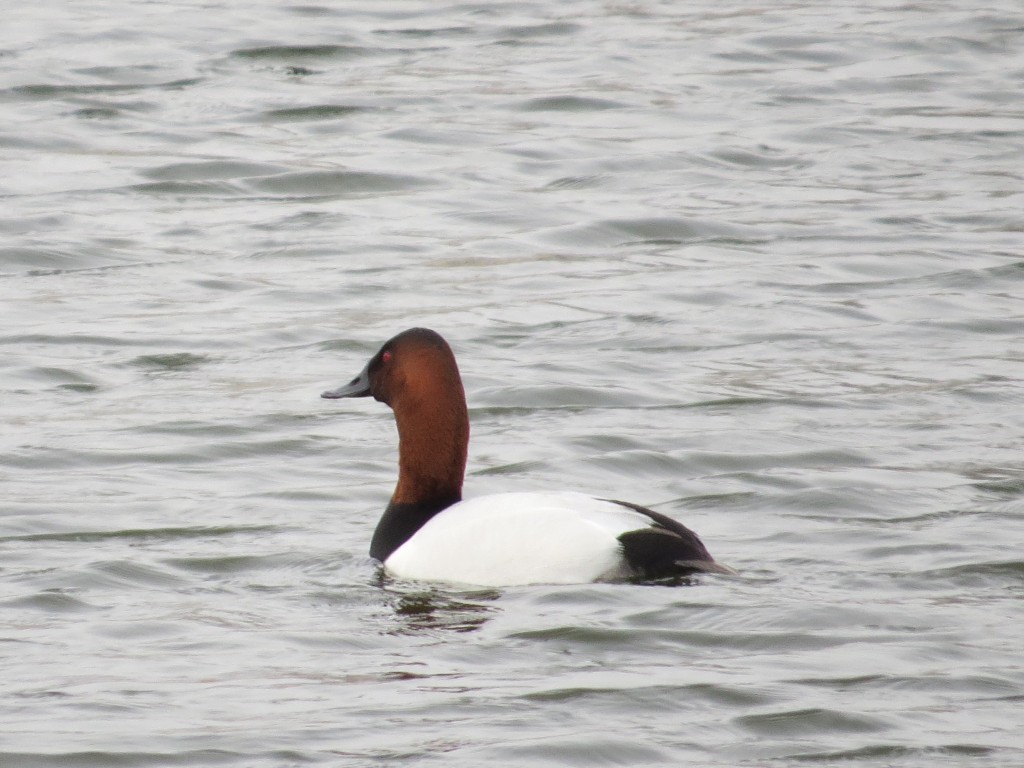
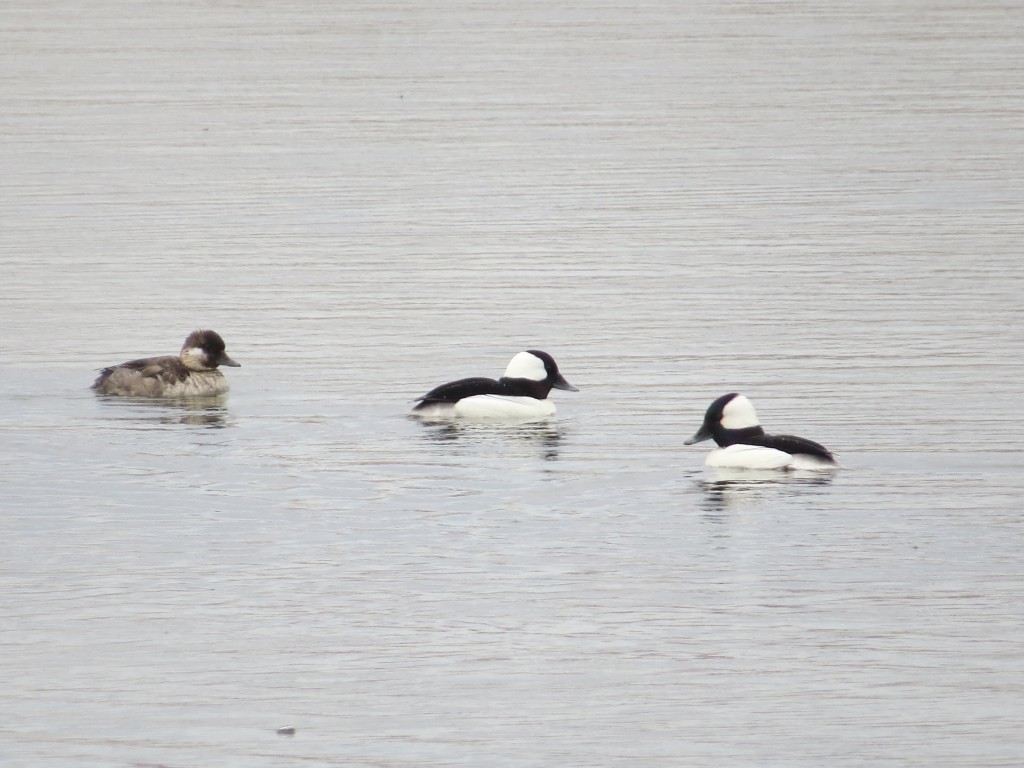
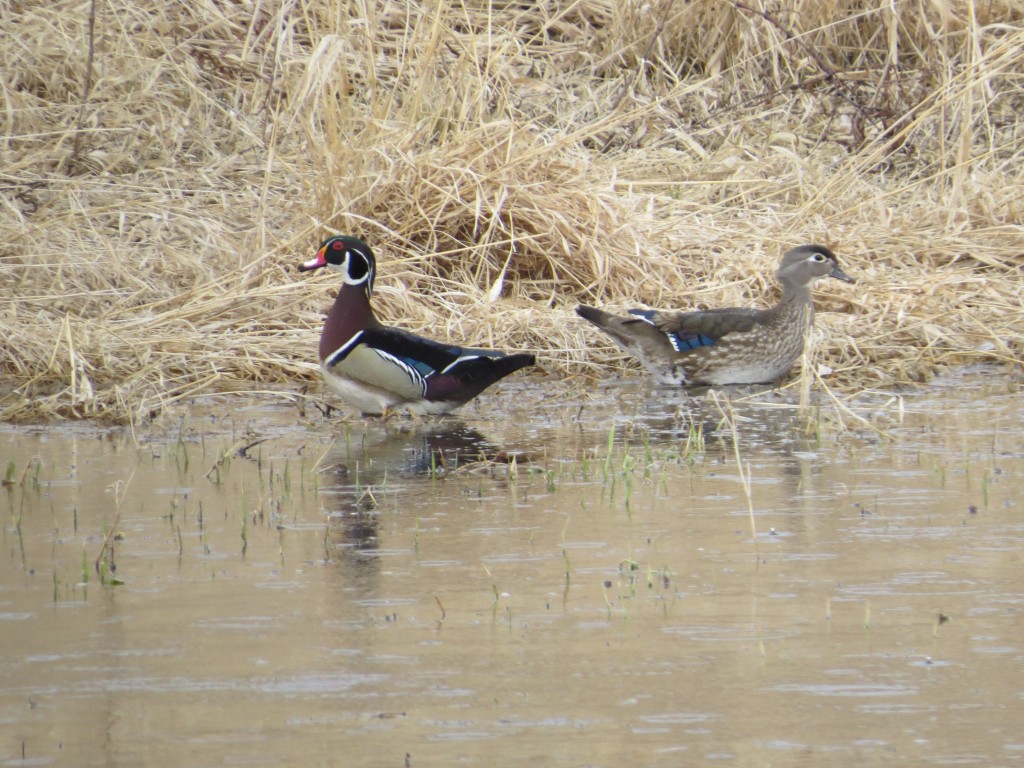
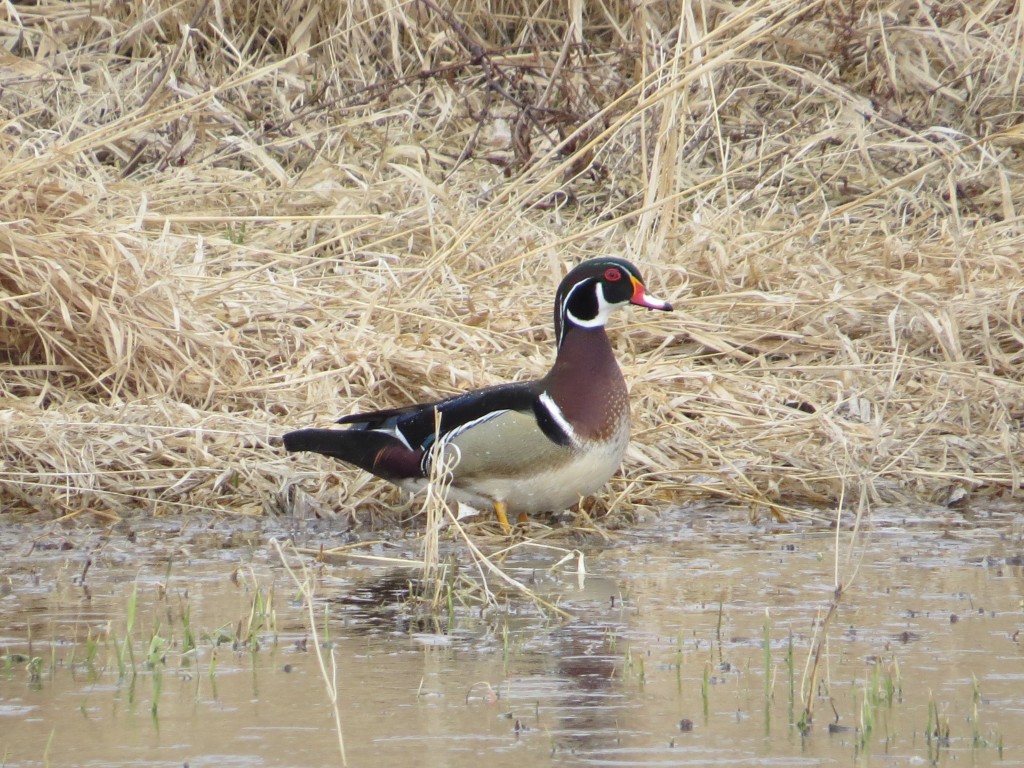 As we drove on, Evan spied his own pair of Wood Ducks in a marshy little puddle on his side of the road. The kids and I watched them for quite a while as they tried to evade us in the thin cover. These two were more in sync with each other than the previous pair as they were at least heading the same direction in life.
As we drove on, Evan spied his own pair of Wood Ducks in a marshy little puddle on his side of the road. The kids and I watched them for quite a while as they tried to evade us in the thin cover. These two were more in sync with each other than the previous pair as they were at least heading the same direction in life.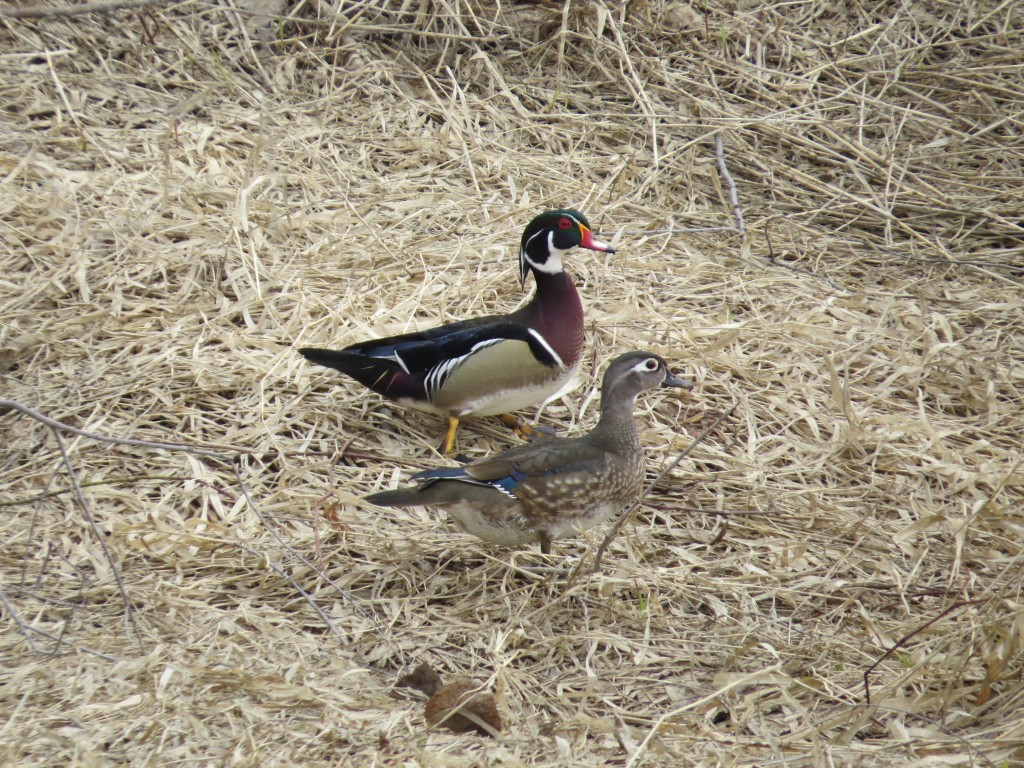 Once we got home, the kids hopped out of the car to go play with the neighbor girl. As I was unloading my things I heard an awful noise, like a cat being murdered. It had been nearly a year, but I knew the sound and I can assure you that, indeed, a cat was not losing its life. It was the disturbingly cool croaking sound of a Yellow-headed Blackbird! In the yard no less. It didn’t take me long to locate it at the top of one of the trees.
Once we got home, the kids hopped out of the car to go play with the neighbor girl. As I was unloading my things I heard an awful noise, like a cat being murdered. It had been nearly a year, but I knew the sound and I can assure you that, indeed, a cat was not losing its life. It was the disturbingly cool croaking sound of a Yellow-headed Blackbird! In the yard no less. It didn’t take me long to locate it at the top of one of the trees.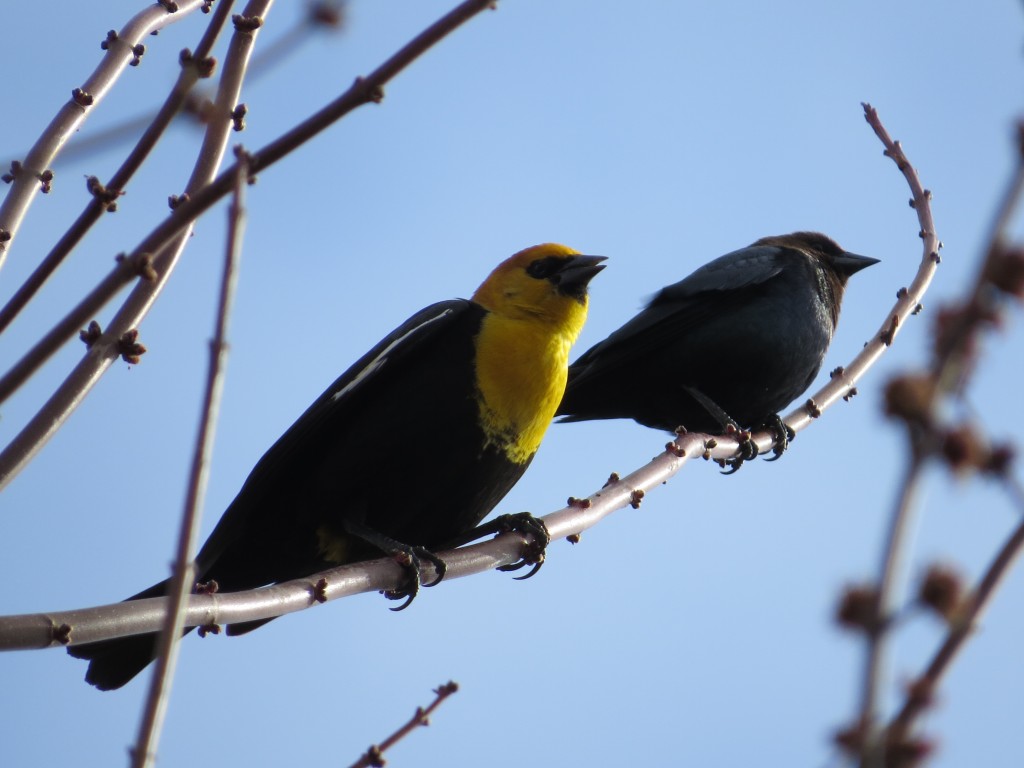
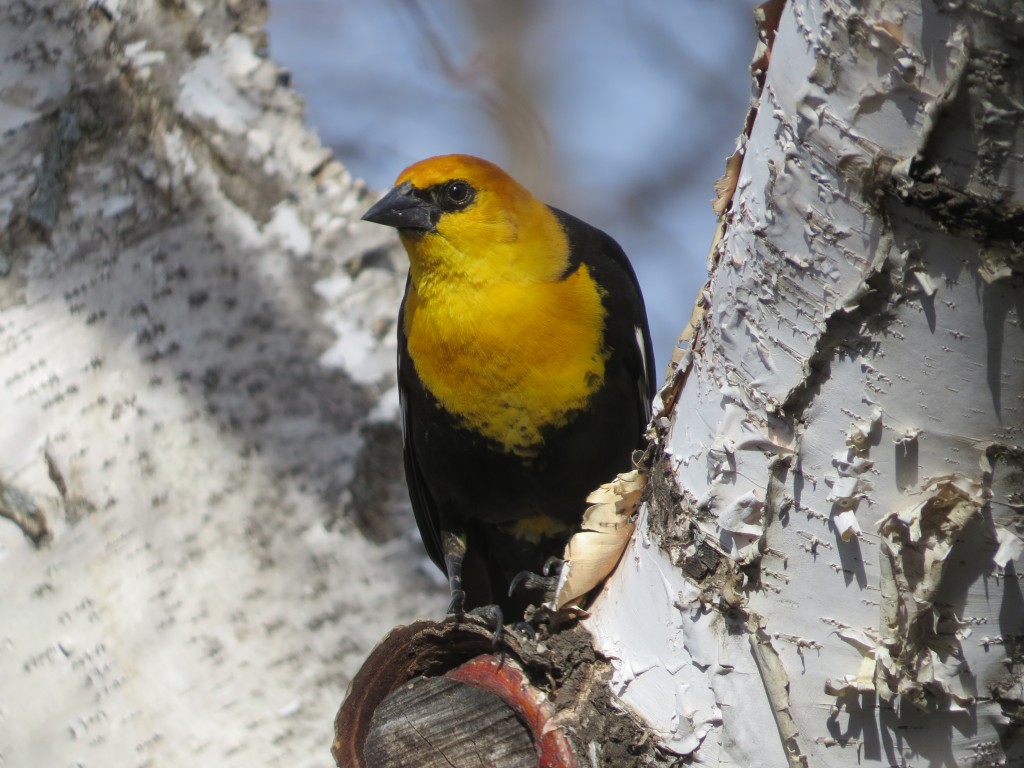
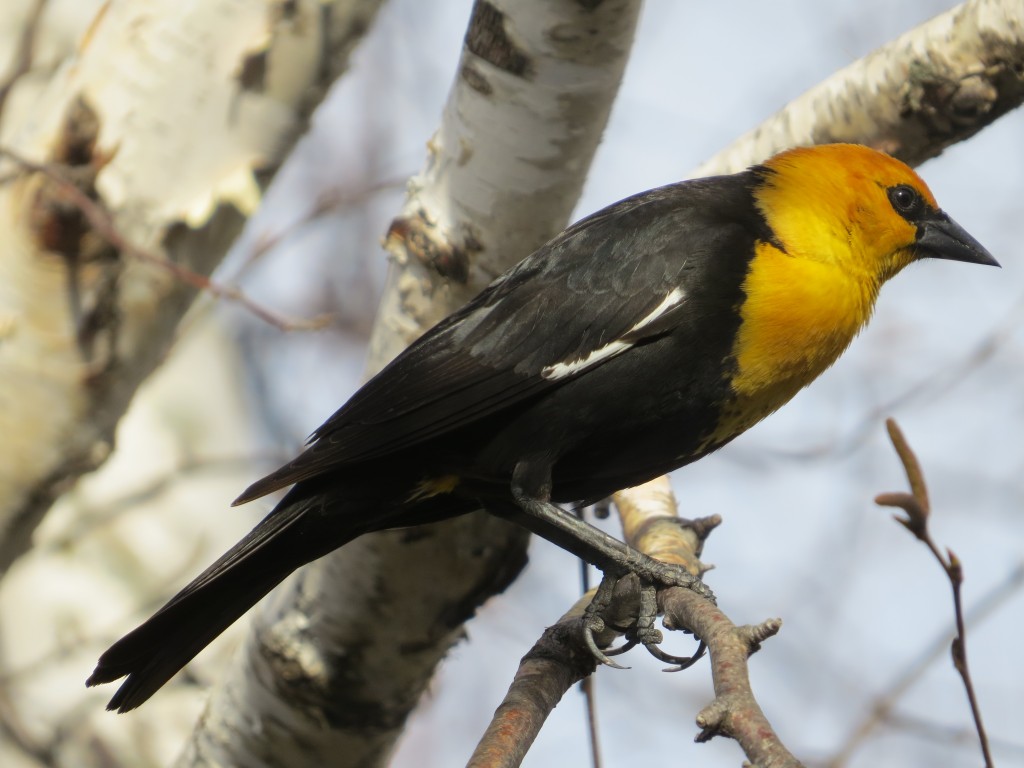
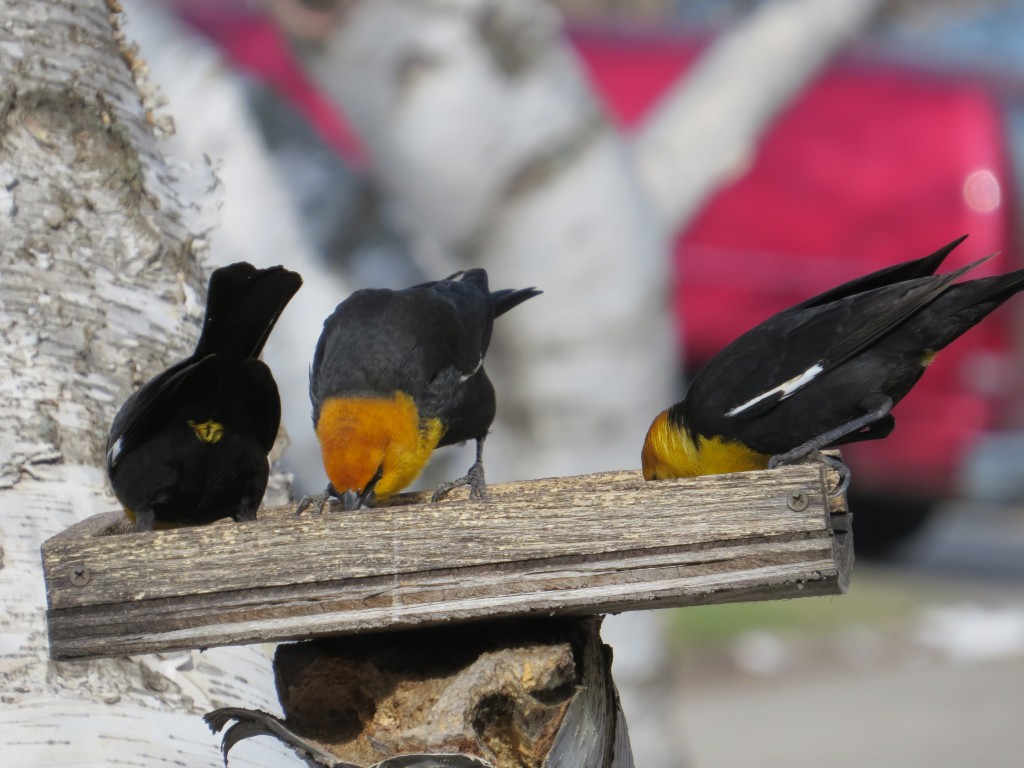
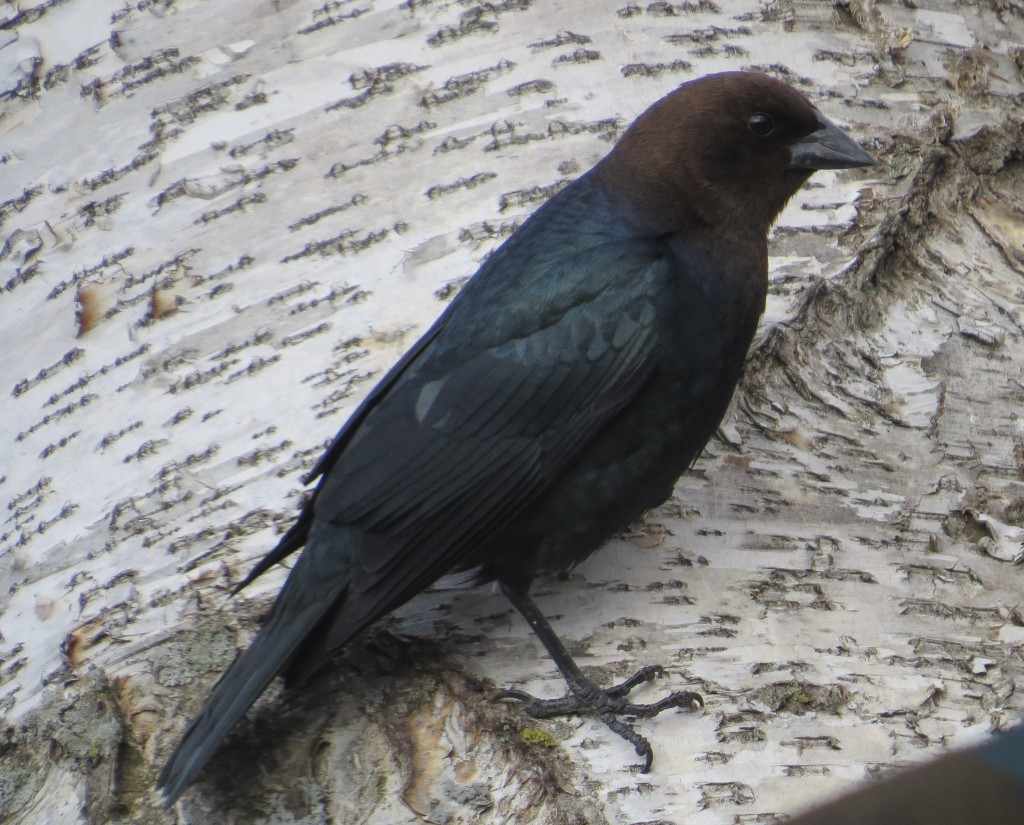
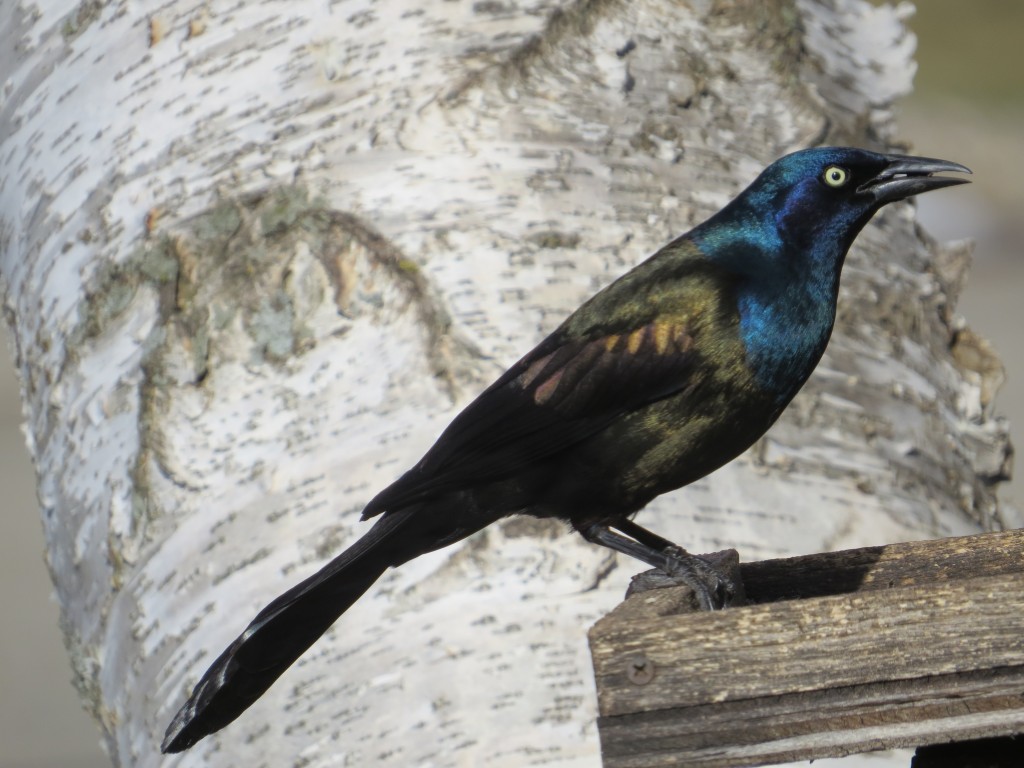
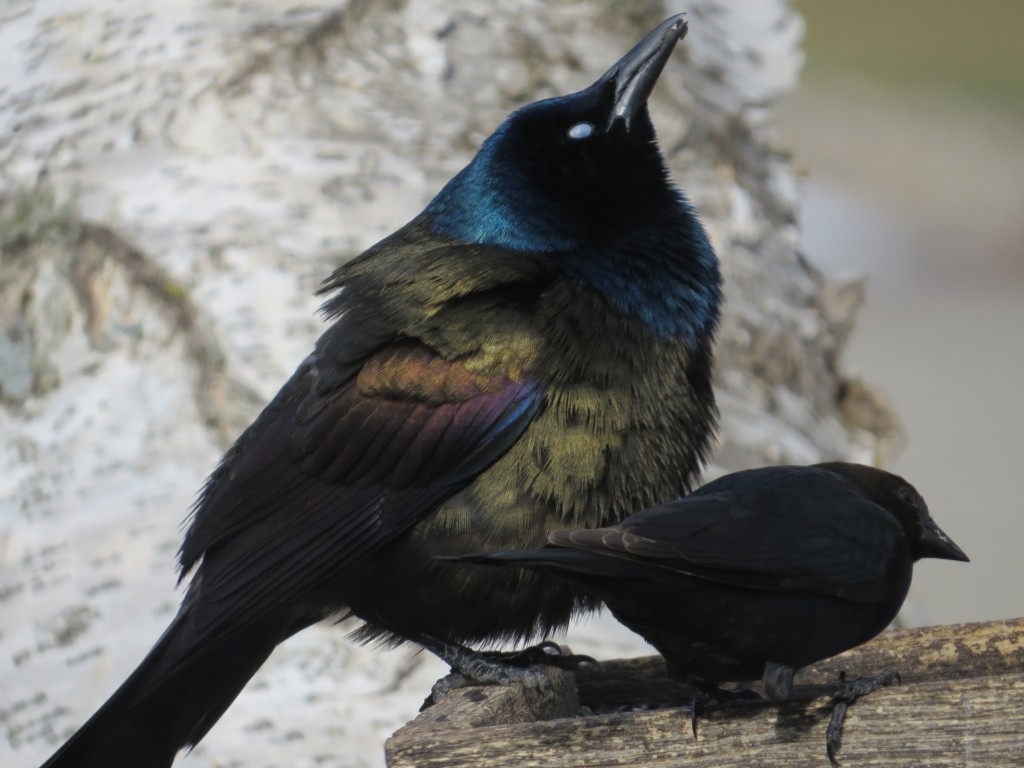
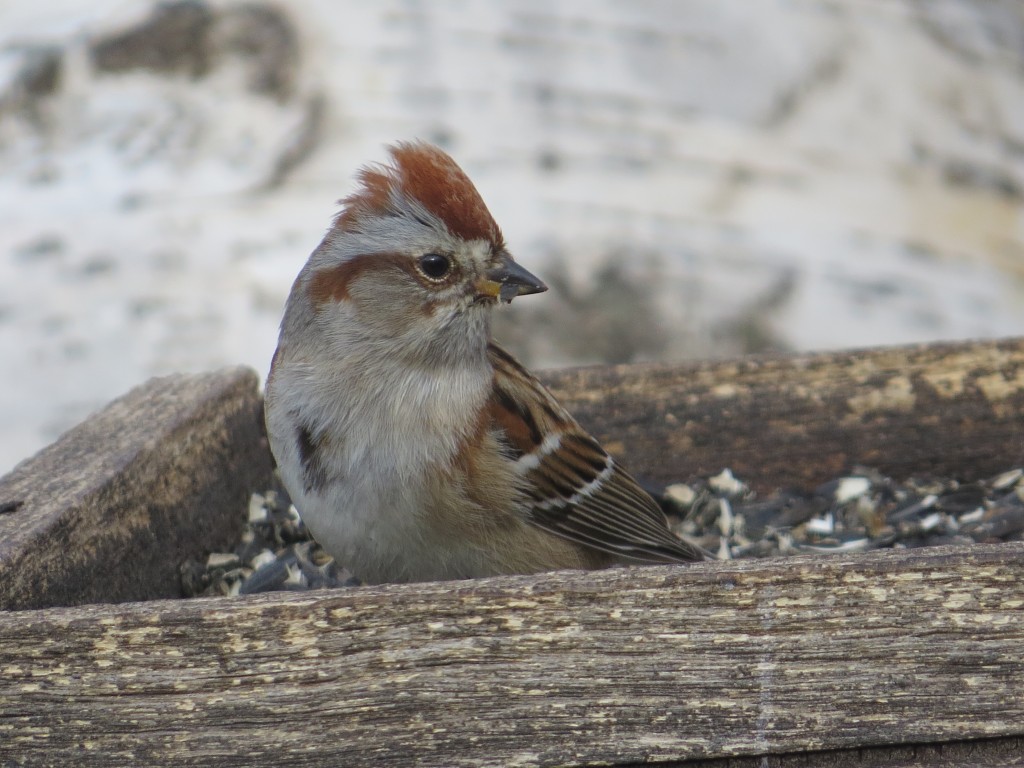
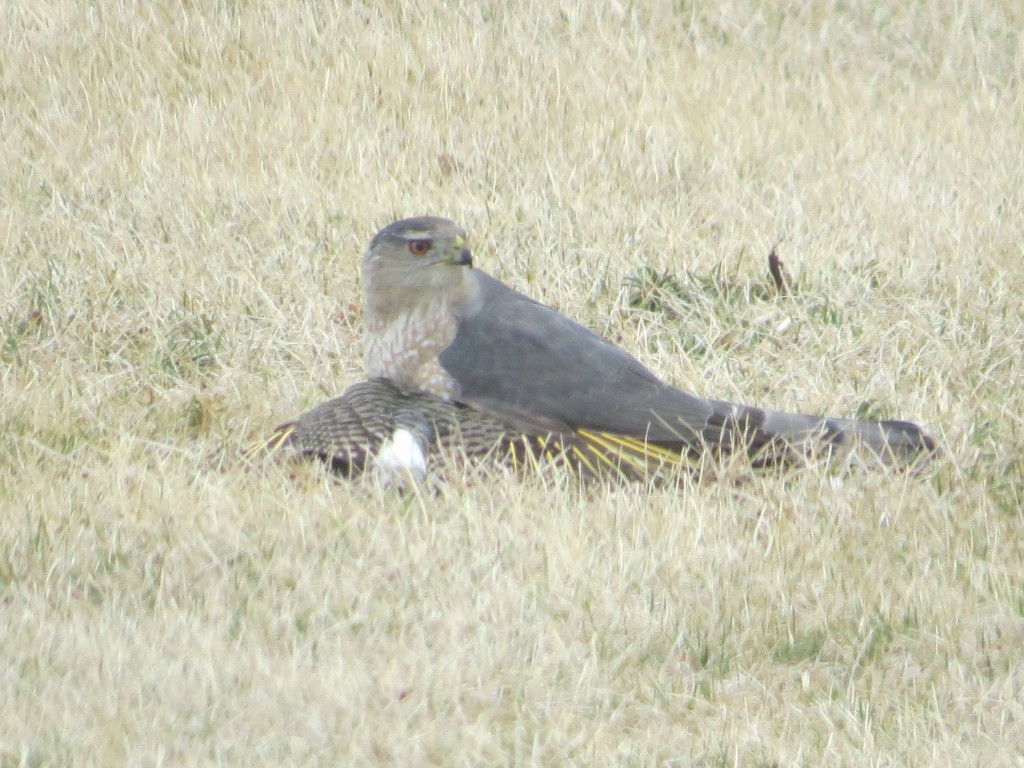
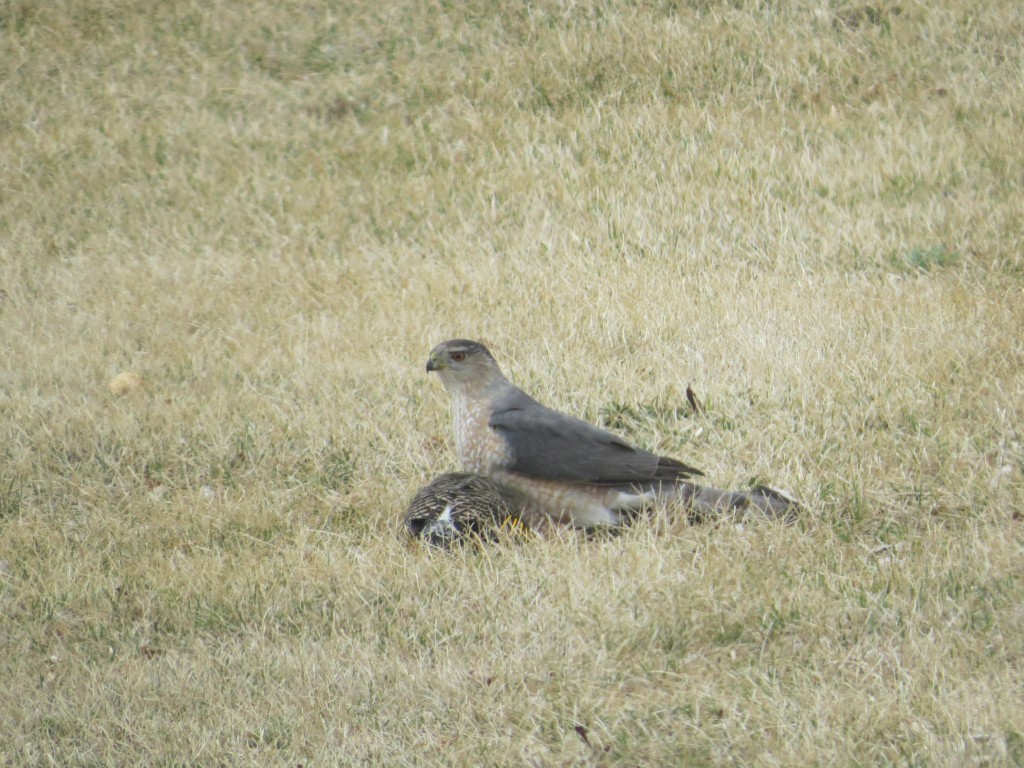
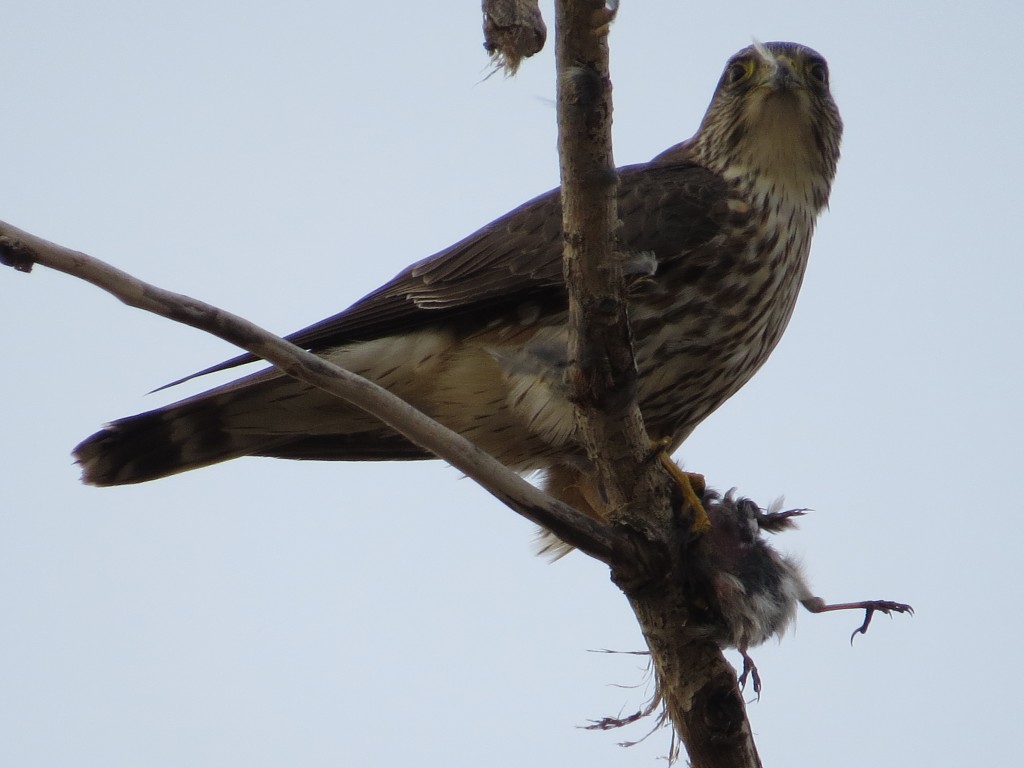
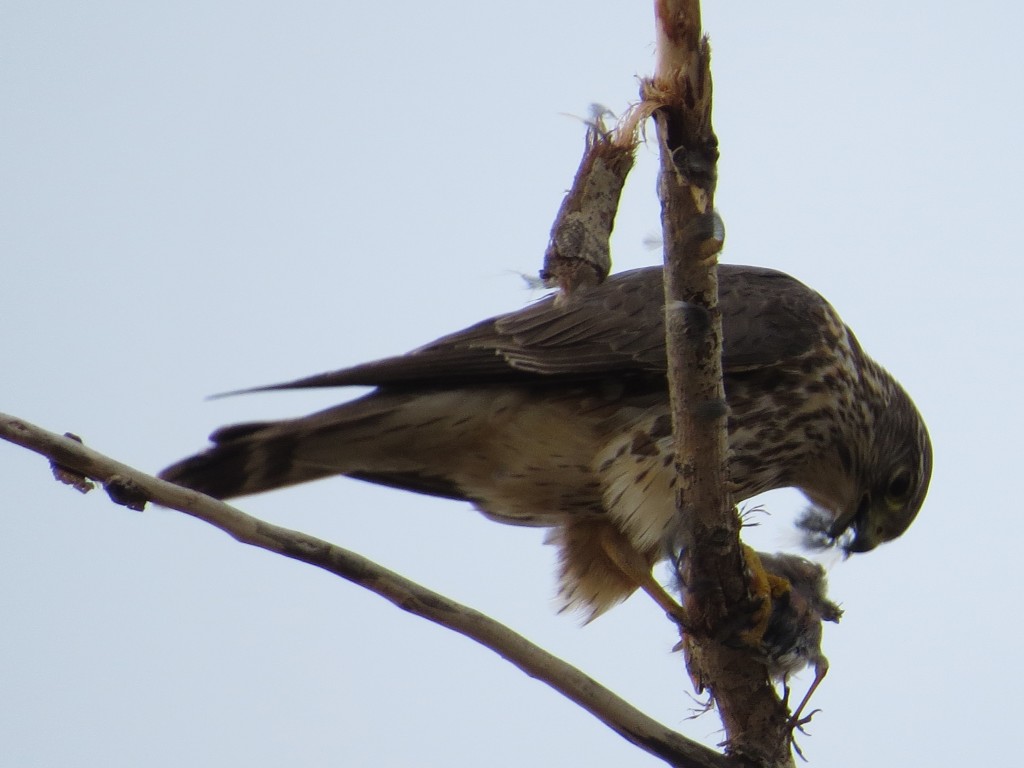 On the way home from Uncle Larry’s we were driving along when I spotted a suspicious-looking white egret all hunched up in our 35-degree weather. I had to turn around to see if it was a Snowy Egret or a Cattle Egret, both of which are rare but regular birds to our area. Nope, it was just the common Great Egret.
On the way home from Uncle Larry’s we were driving along when I spotted a suspicious-looking white egret all hunched up in our 35-degree weather. I had to turn around to see if it was a Snowy Egret or a Cattle Egret, both of which are rare but regular birds to our area. Nope, it was just the common Great Egret.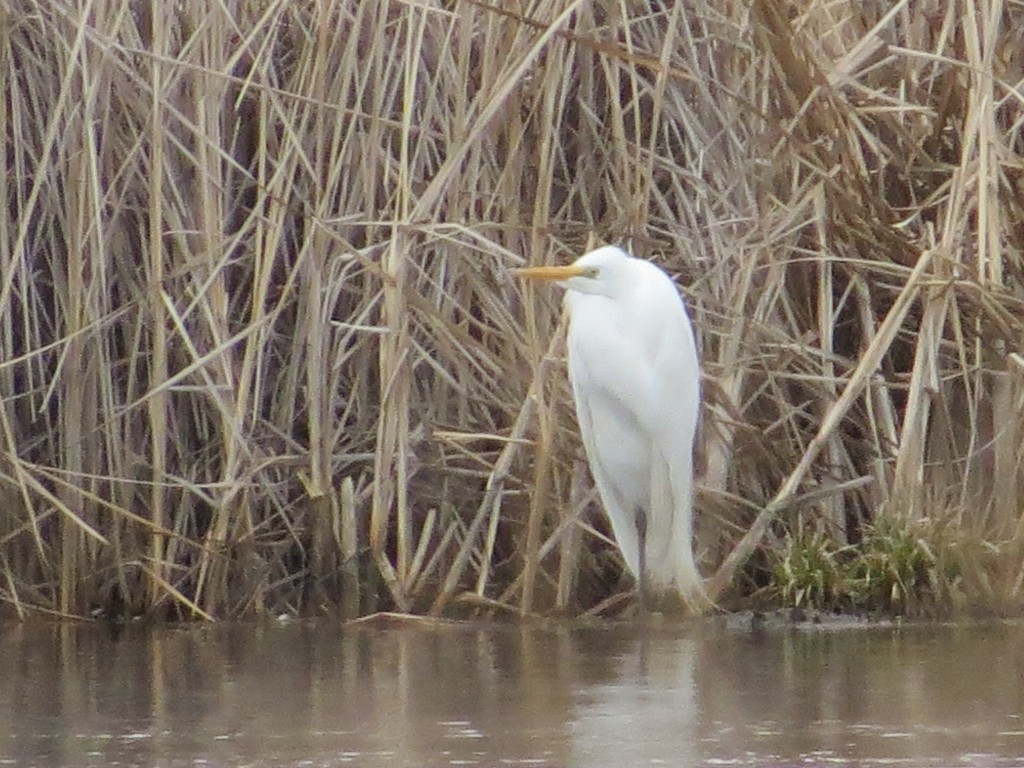
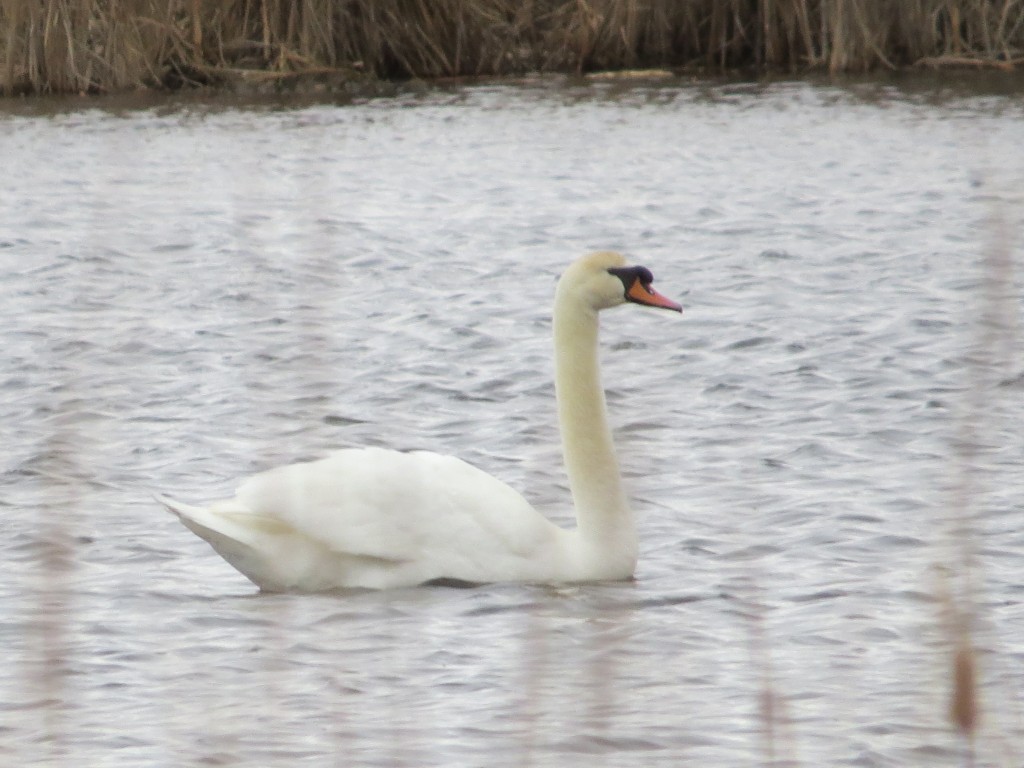
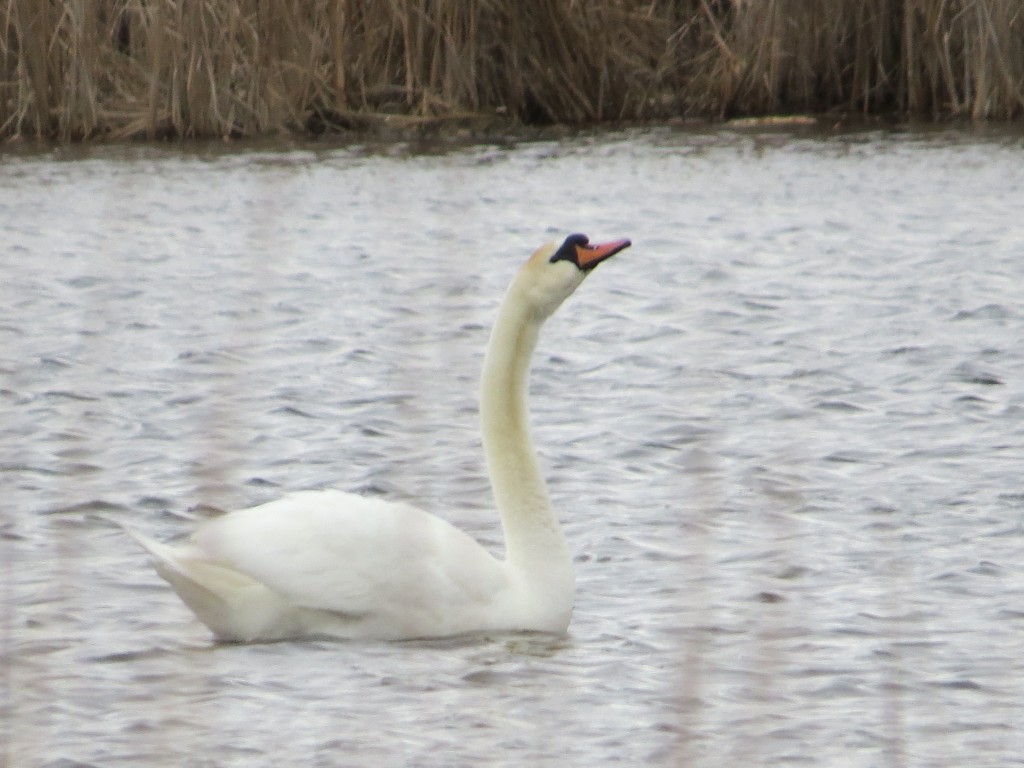 Wow, what a find! This species was introduced to the United States and is actually an invasive species in certain areas that threatens the comeback of the Trumpeter Swan. Nevertheless, not a lot of them show up in Minnesota. In fact, the one we found this evening is a Renville County first record! It was truly an exciting find and one that made me fumble with my phone trying to put out a lightning-fast post on the listserv so other interested birders could see it too.
Wow, what a find! This species was introduced to the United States and is actually an invasive species in certain areas that threatens the comeback of the Trumpeter Swan. Nevertheless, not a lot of them show up in Minnesota. In fact, the one we found this evening is a Renville County first record! It was truly an exciting find and one that made me fumble with my phone trying to put out a lightning-fast post on the listserv so other interested birders could see it too.











 I found the wild birds much more entertaining. I absolutely love American Wigeon. This was my chance to properly photograph one. Forgive the scuzzy flamingo water and just look at this drake’s beauty.
I found the wild birds much more entertaining. I absolutely love American Wigeon. This was my chance to properly photograph one. Forgive the scuzzy flamingo water and just look at this drake’s beauty.


 Later on we saw the gallinule in another part of the zoo acting suspicious.
Later on we saw the gallinule in another part of the zoo acting suspicious. 





